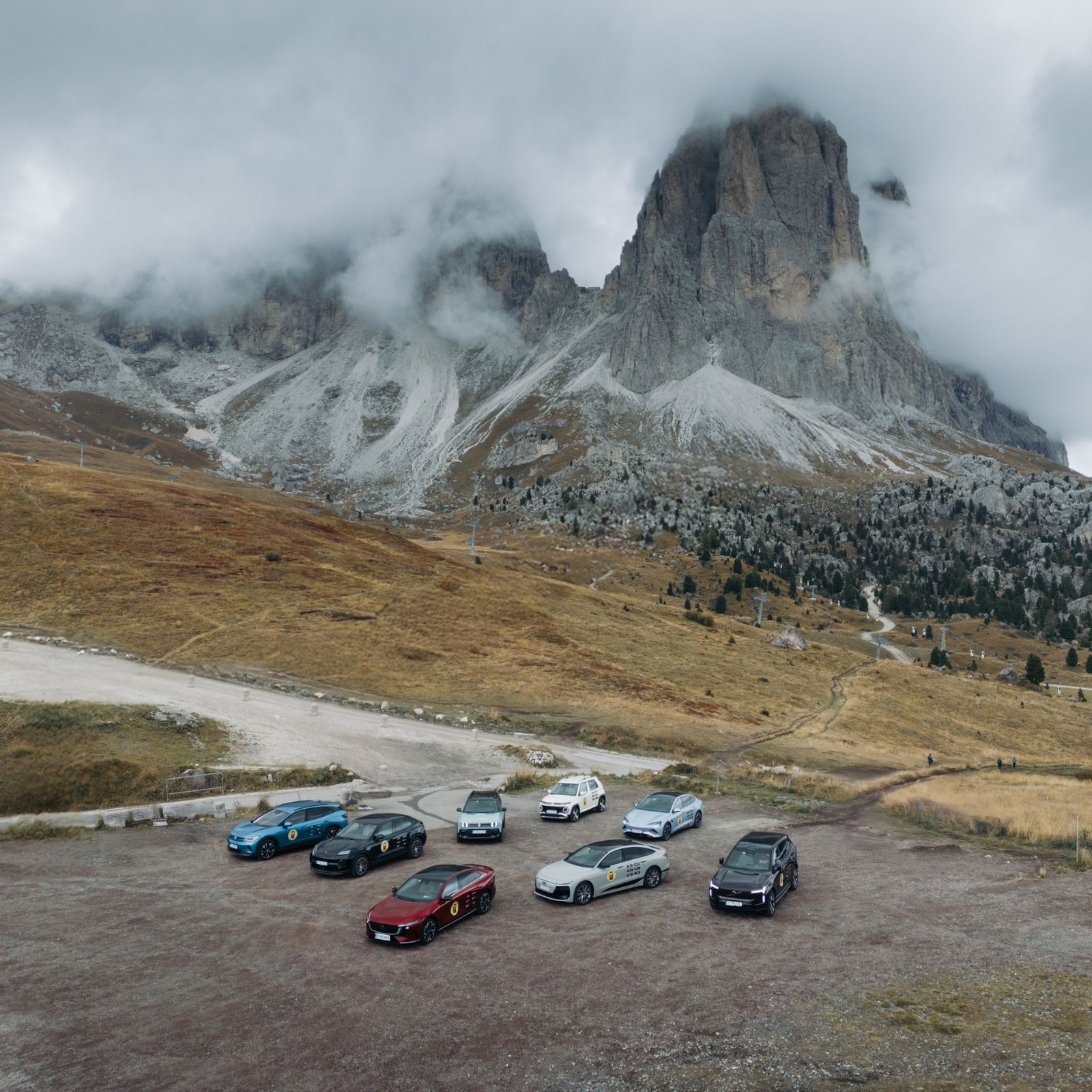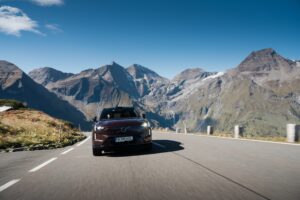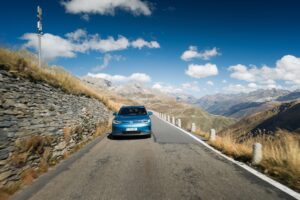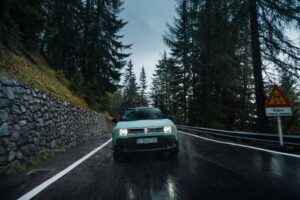The sculptor’s unseen arm is in a constant rocking motion. It’s been there for a couple hundred million years. Putting great effort into a work of art gratified by mankind through UNESCO, still unfinished, as it’s bound to remain for millions of years to come.
And still, one can see its perfection to the smallest detail. Rocks flowing from the top mane like a rough river sanding the mountain’s walls as the saw’s teeth rise to over 3,000 meters. Vertical slopes stand their ground in front of an army of pines ready to invade every crack in the coat of cliffs.
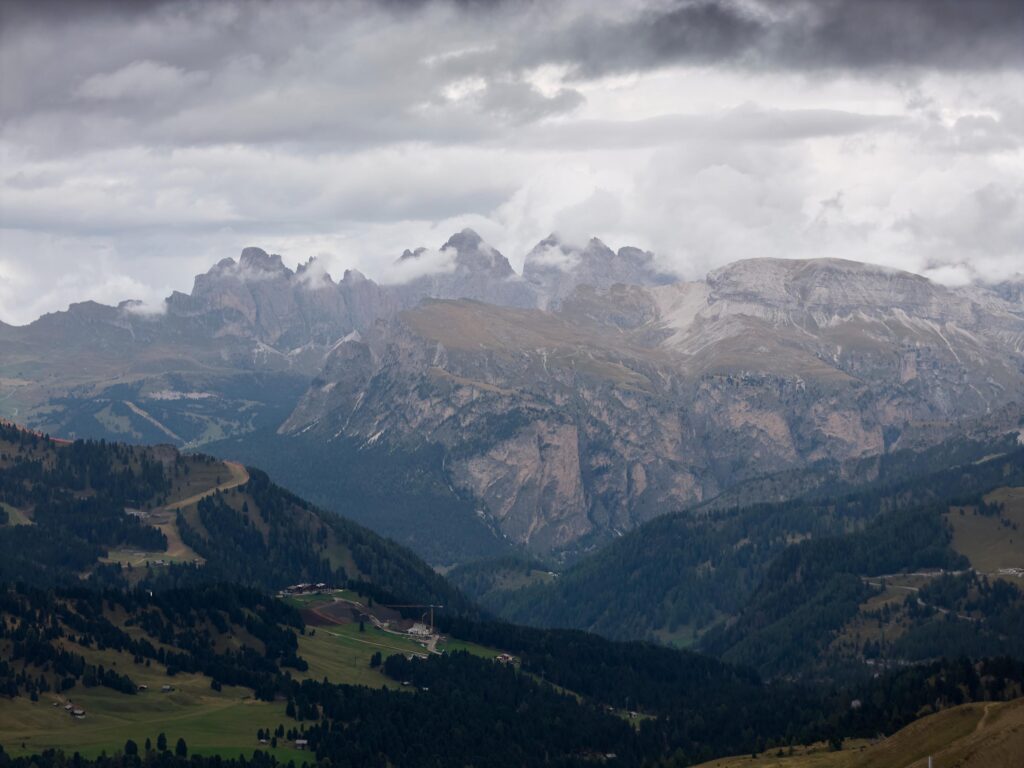
The goal
The Dolomites are synonymous with a spectacle, a theatre play whose director is never content with the background. Like the sculptor that shaped these mountains, the director craves perfection. There’s either too much sun, not enough clouds, or the light isn’t right. And so on. The background changes every hour, every minute even.
We would have needed at least a week to cross the Dolomites from East to West and North to South. That’s why we chose Sella Ronda: four mountain passes, each with its unique beaty, wrapped in a loop.
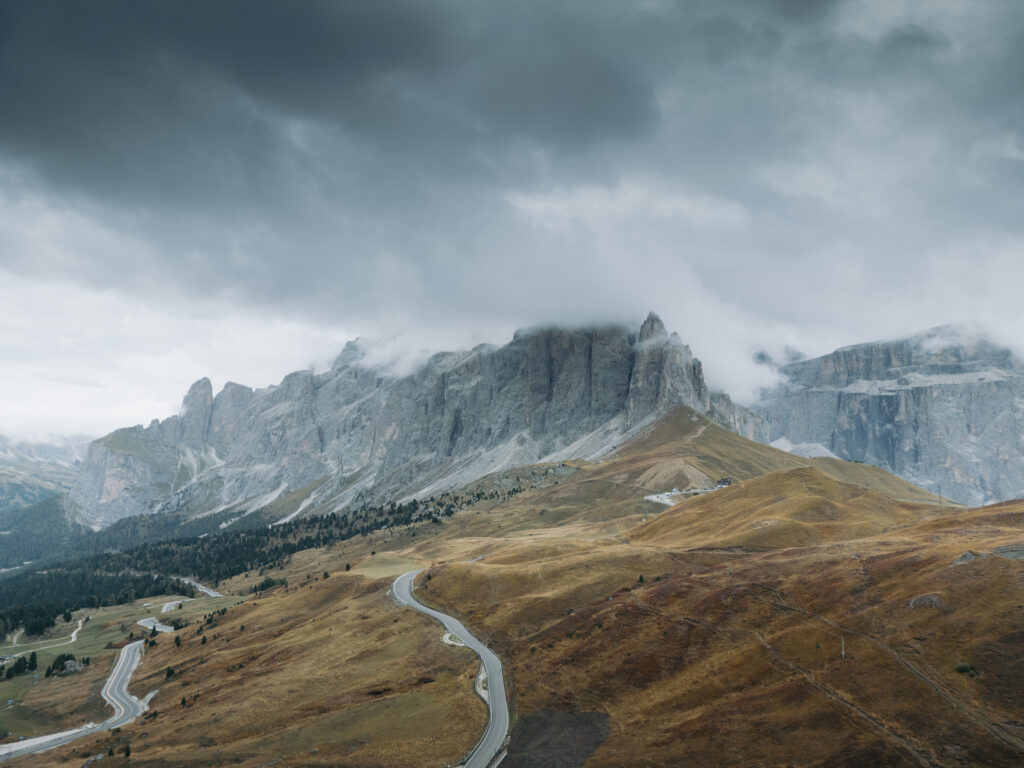
We started our climb through Selva di Val Gardena. First stop: Passo Sella, a road that narrows gradually once you reach an altitude of 2,240 m. On the road to the top we met a group of very beautiful (and very expensive) Ferraris, set on their own journey. We enjoyed the moment, took it in and carried on: buon viaggio a tutti.
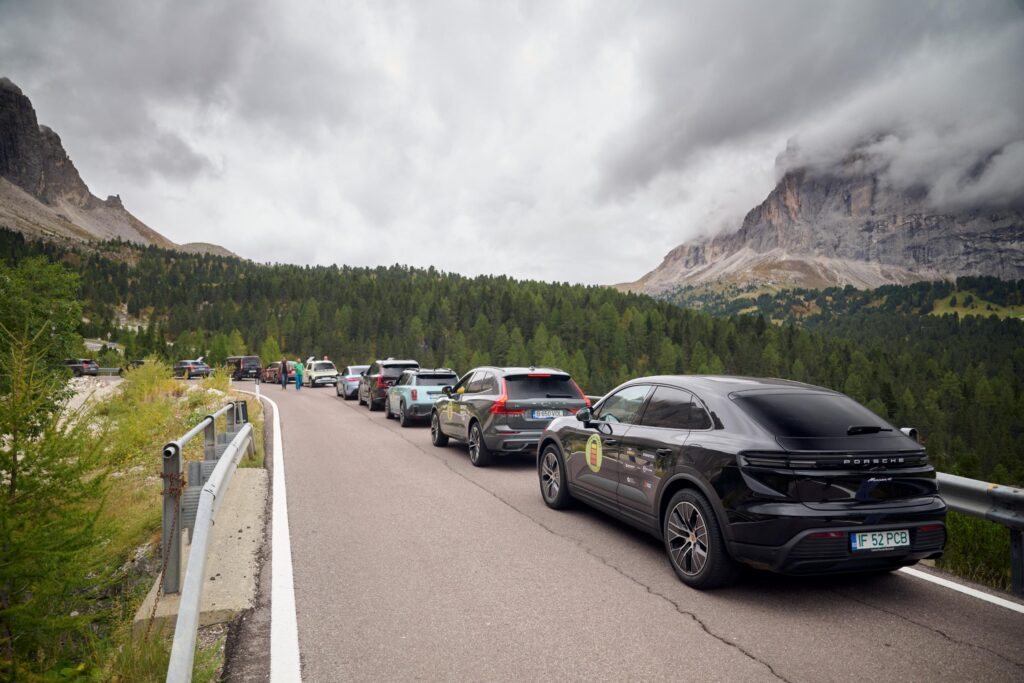
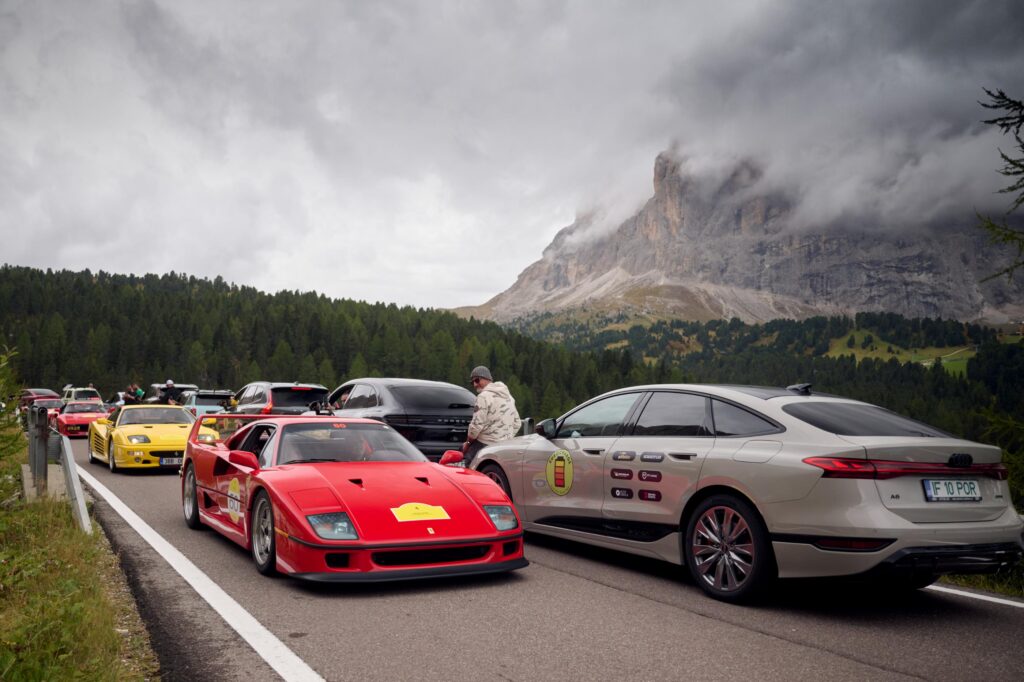
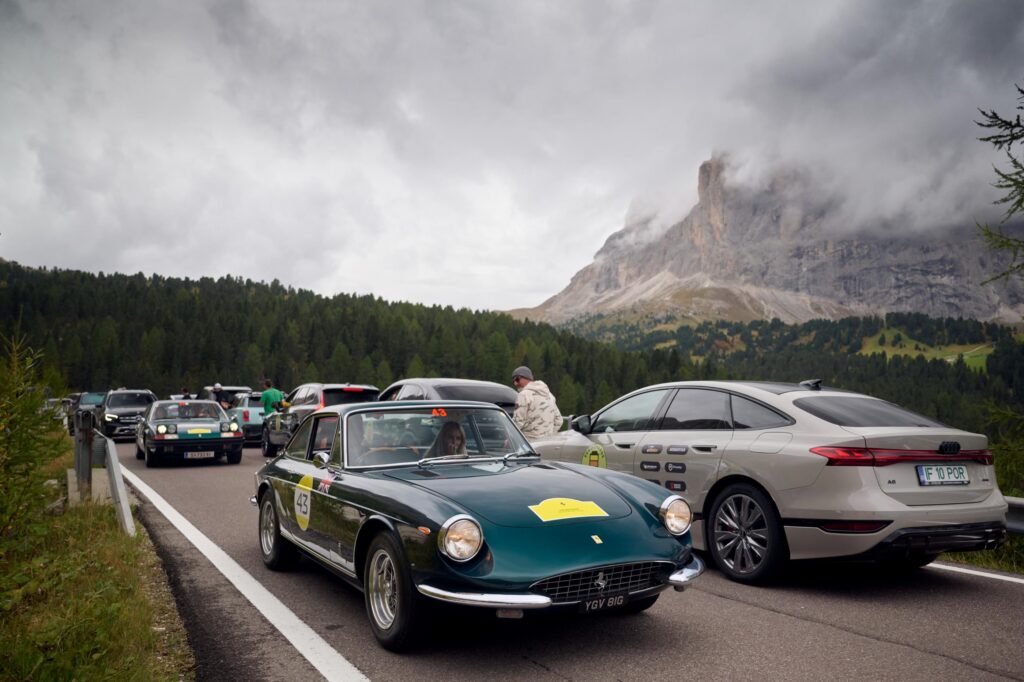
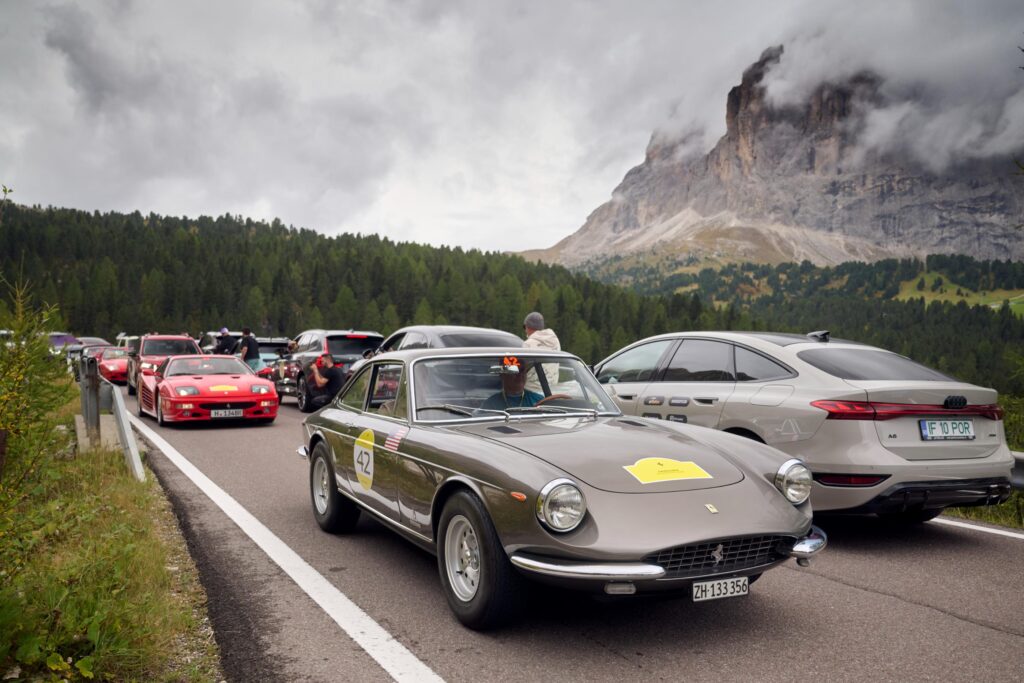
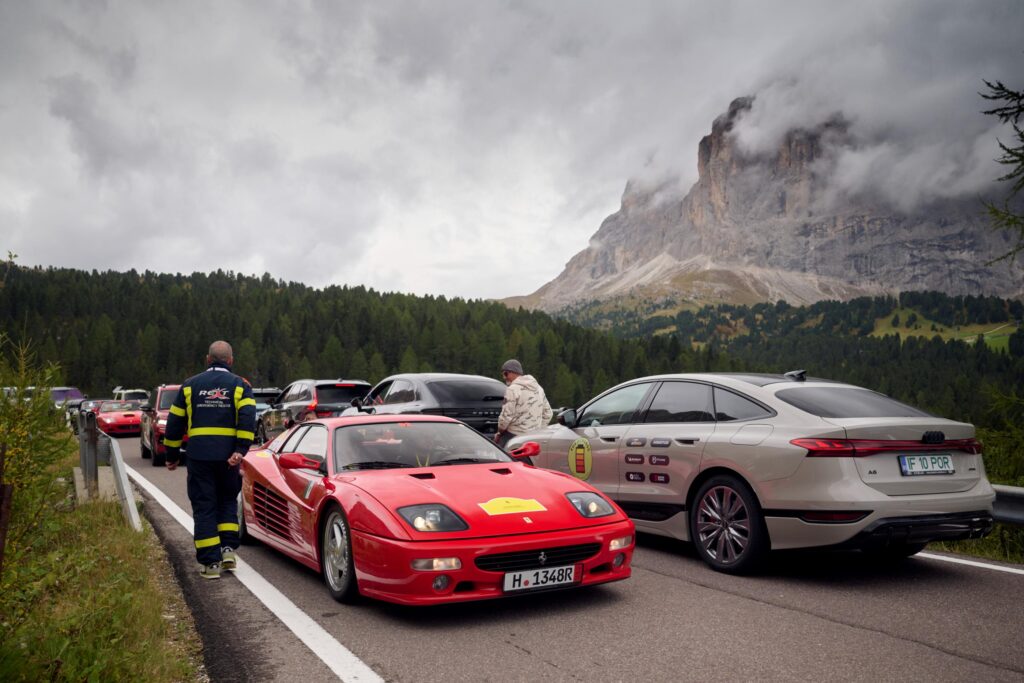
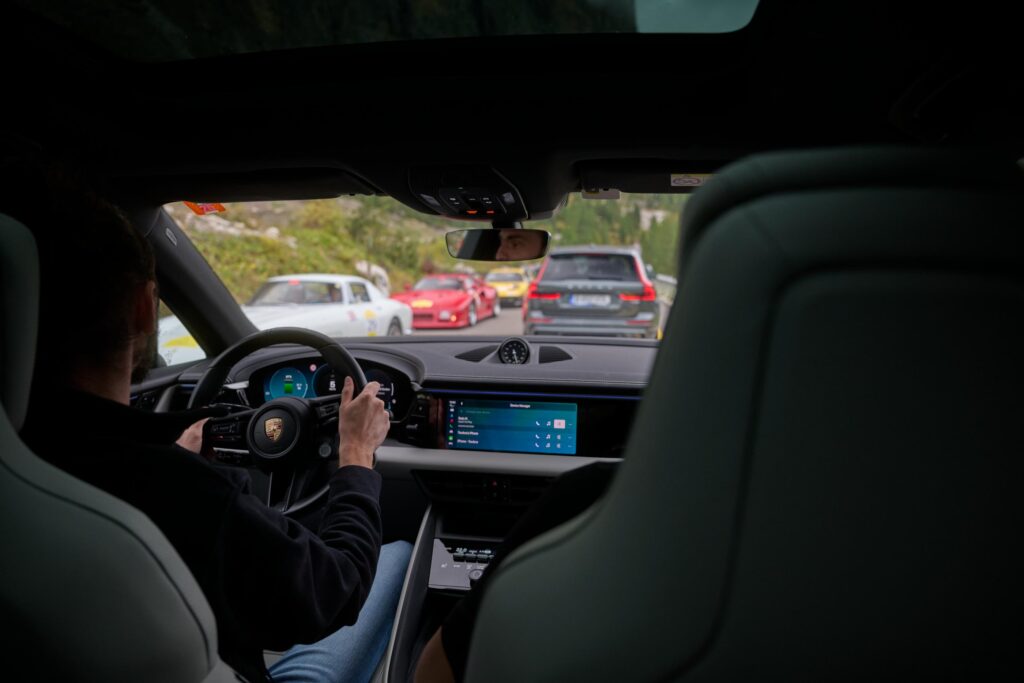
From 16 degrees Celsius we got to 7-8 degrees Celsius in less than a few minutes. This is where the Michelin CrossClimate tires began to shine through their duality and stubborness behind clinging to every bit of asphalt, in the name of grip (and safety).
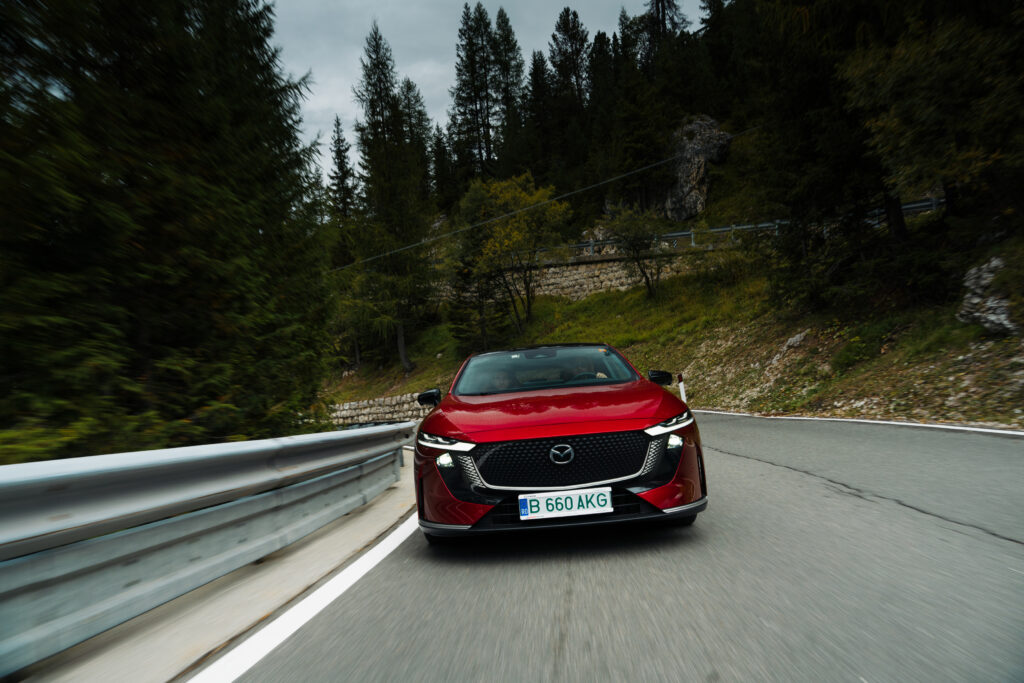
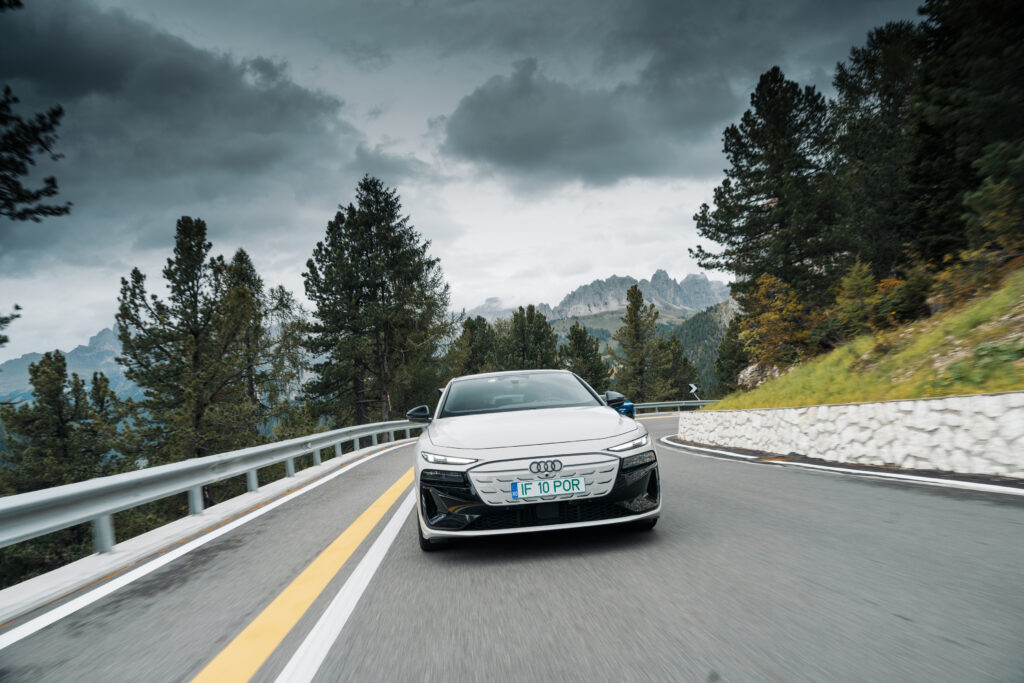
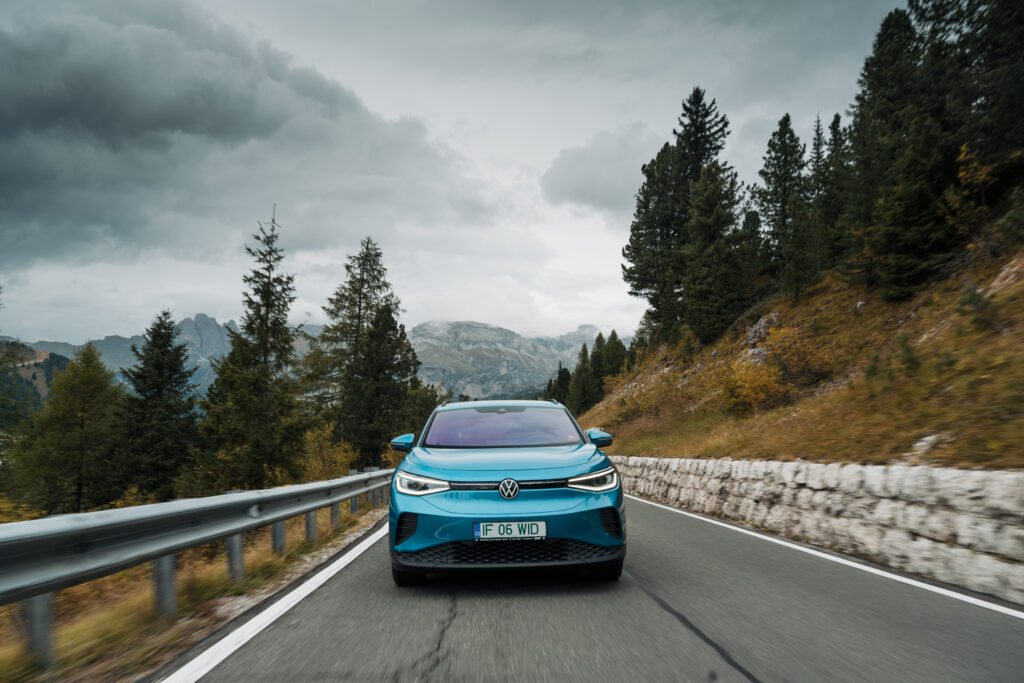
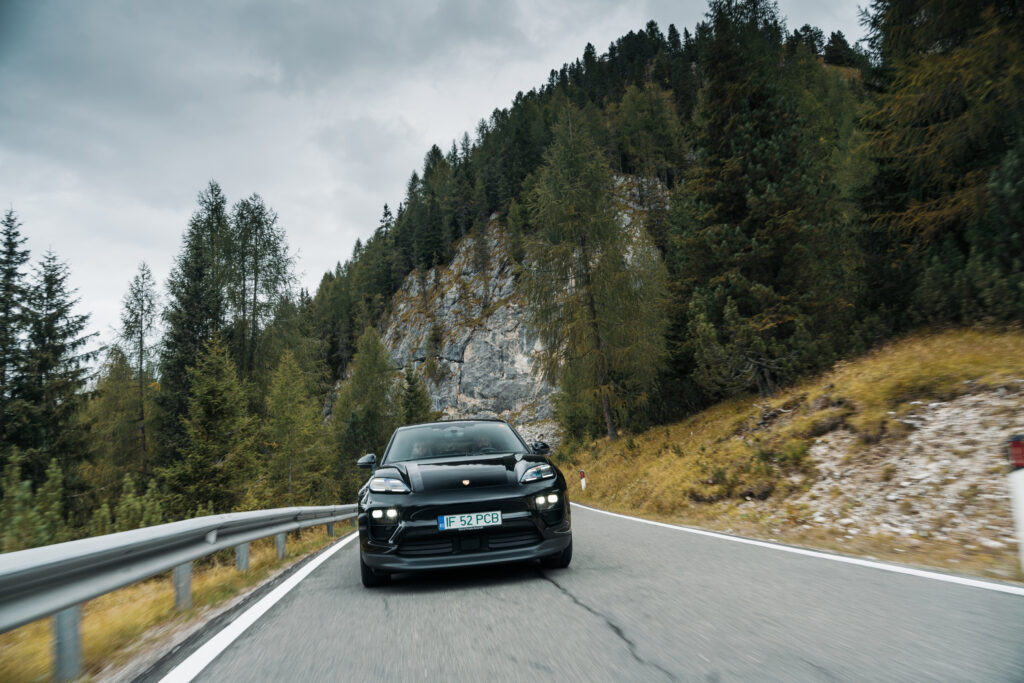
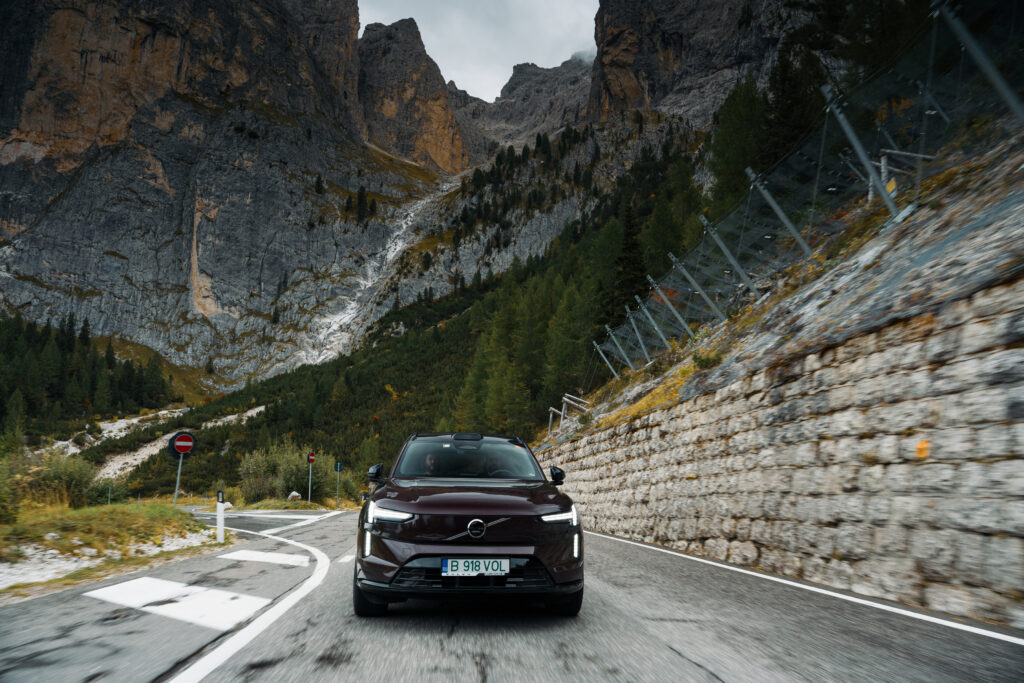
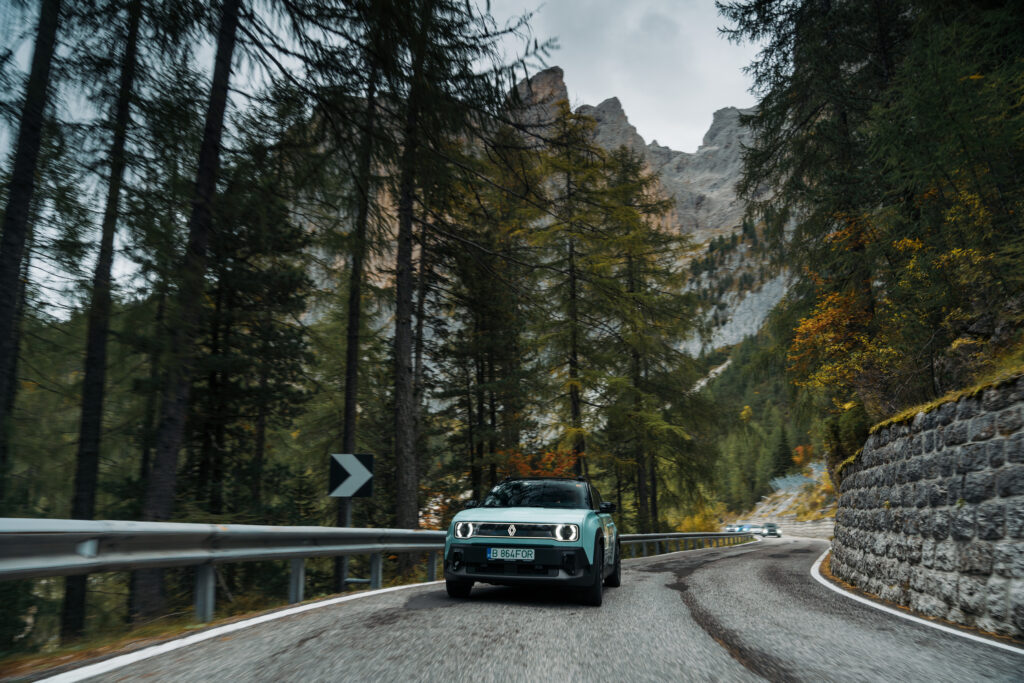
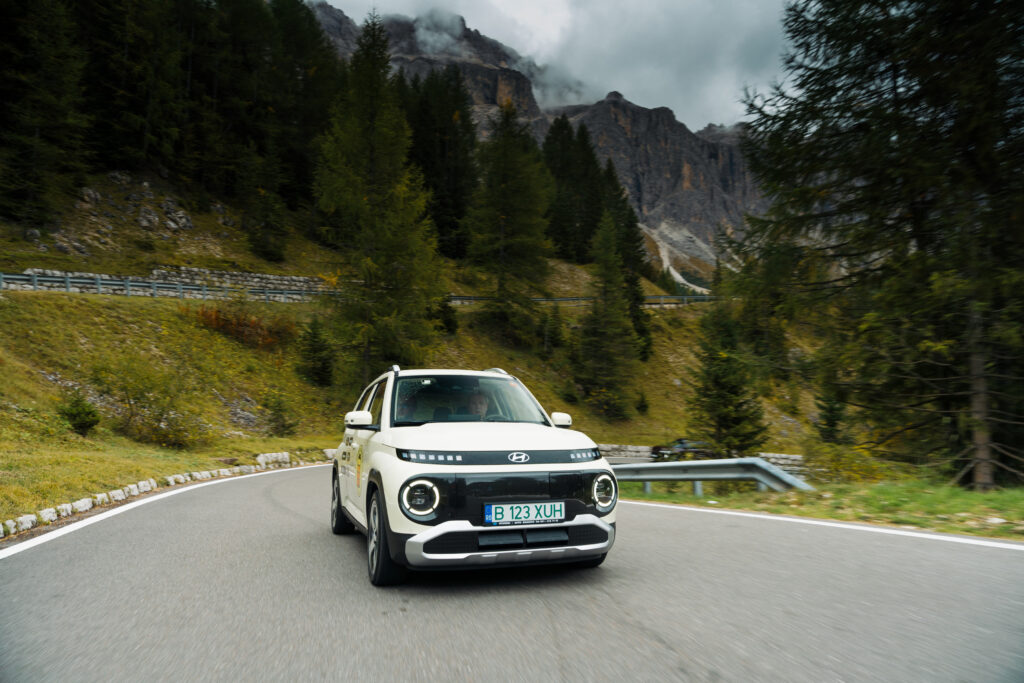
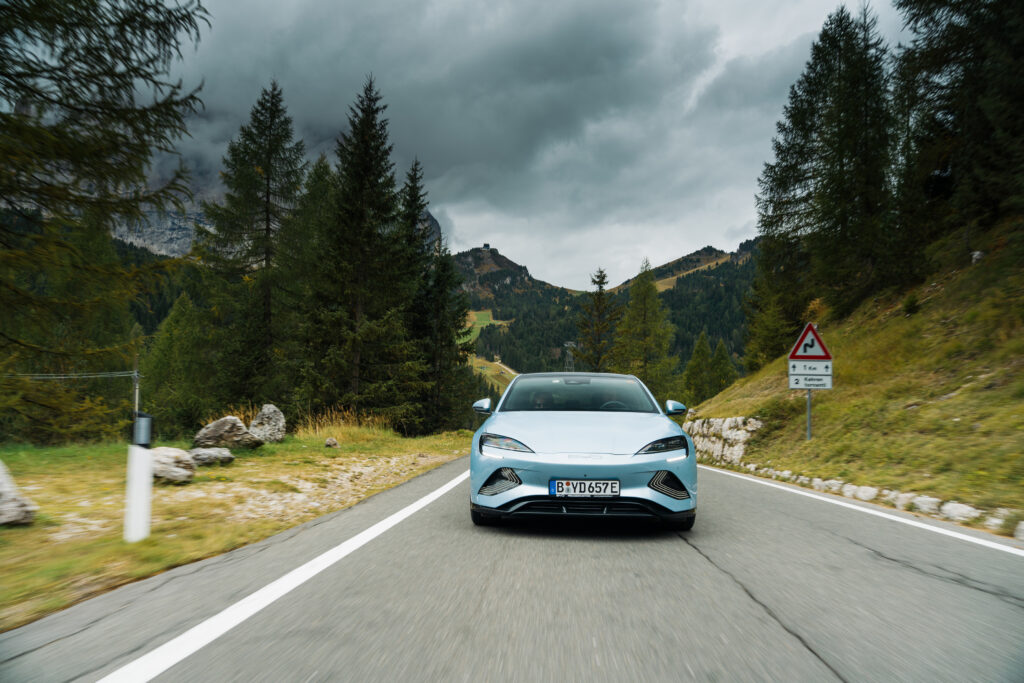
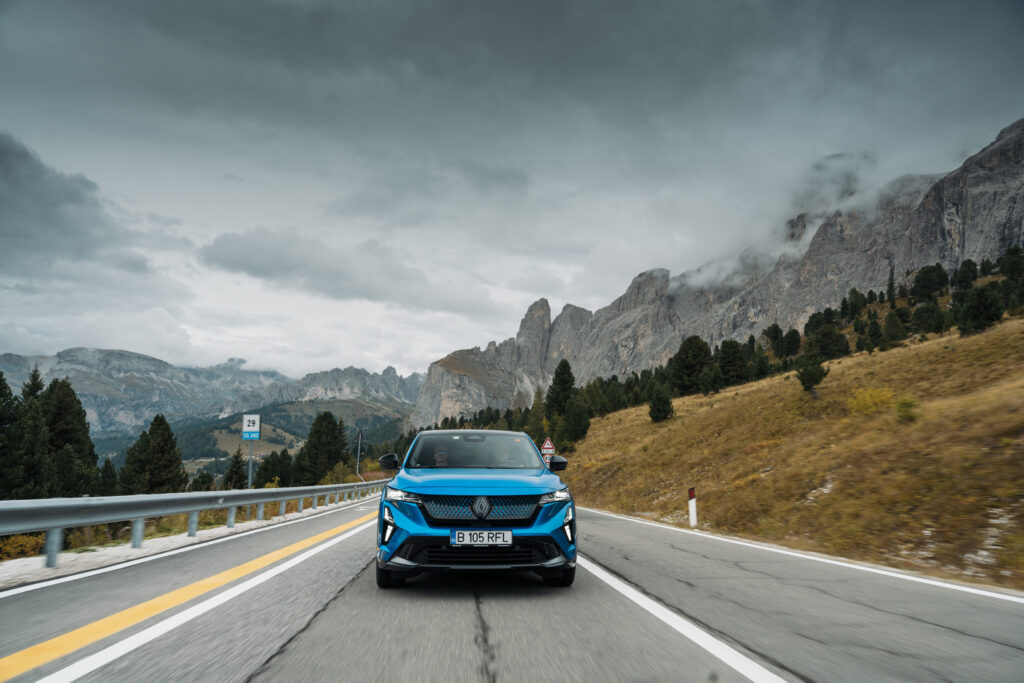
At the top, we were greeted by that kind of light that makes every photo session a work of art. Just like the mountains in the backdrop.
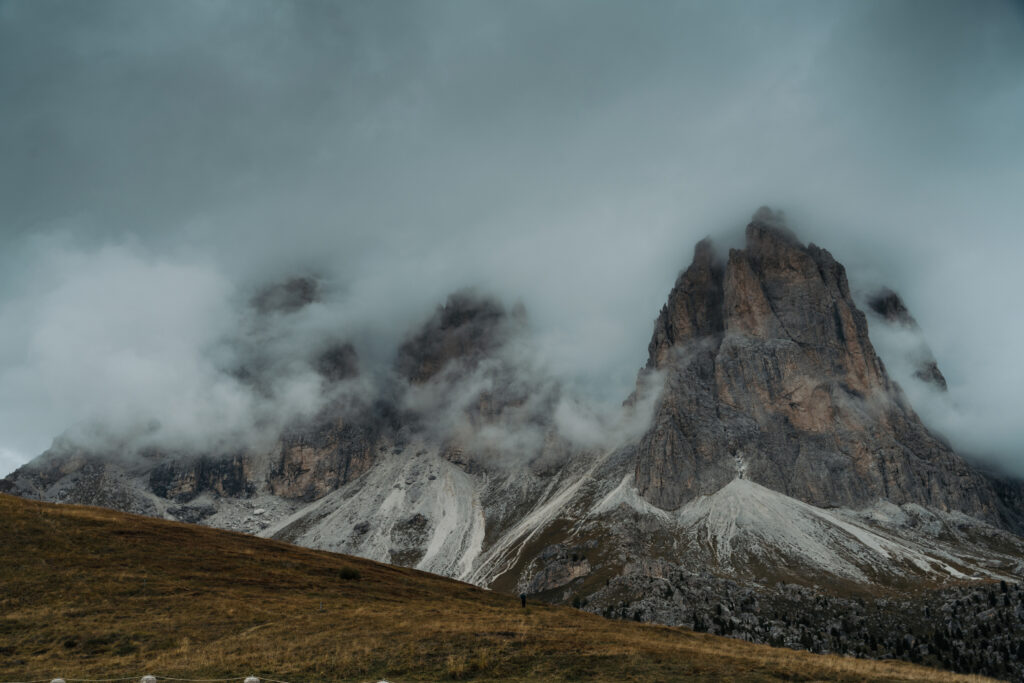
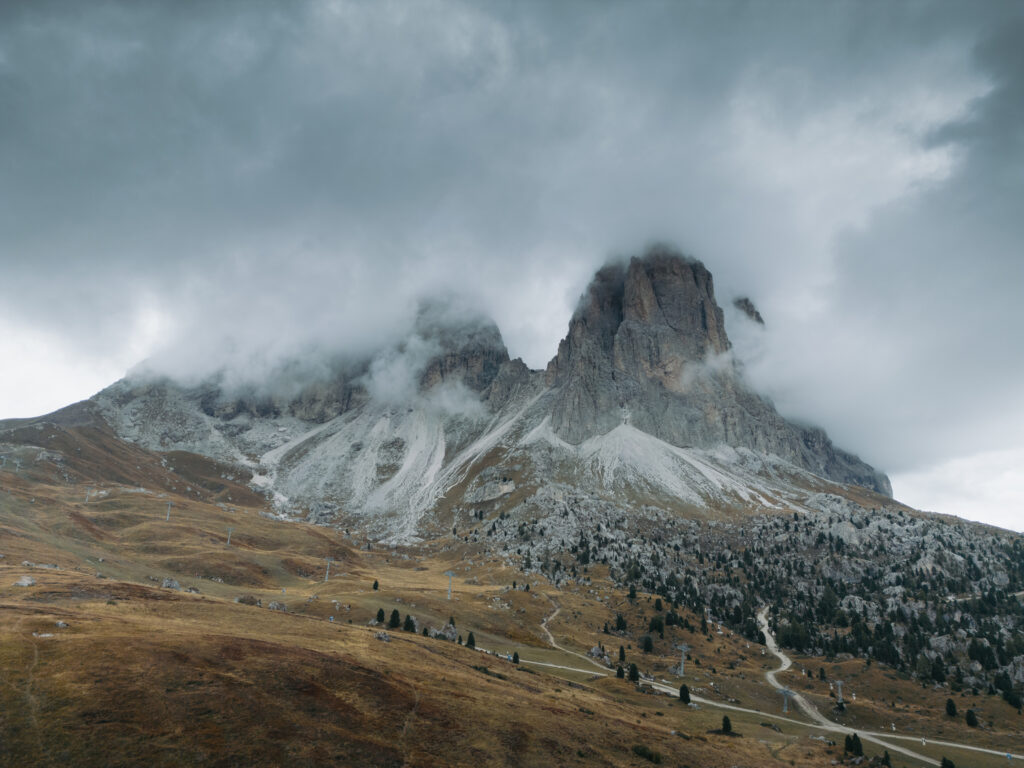
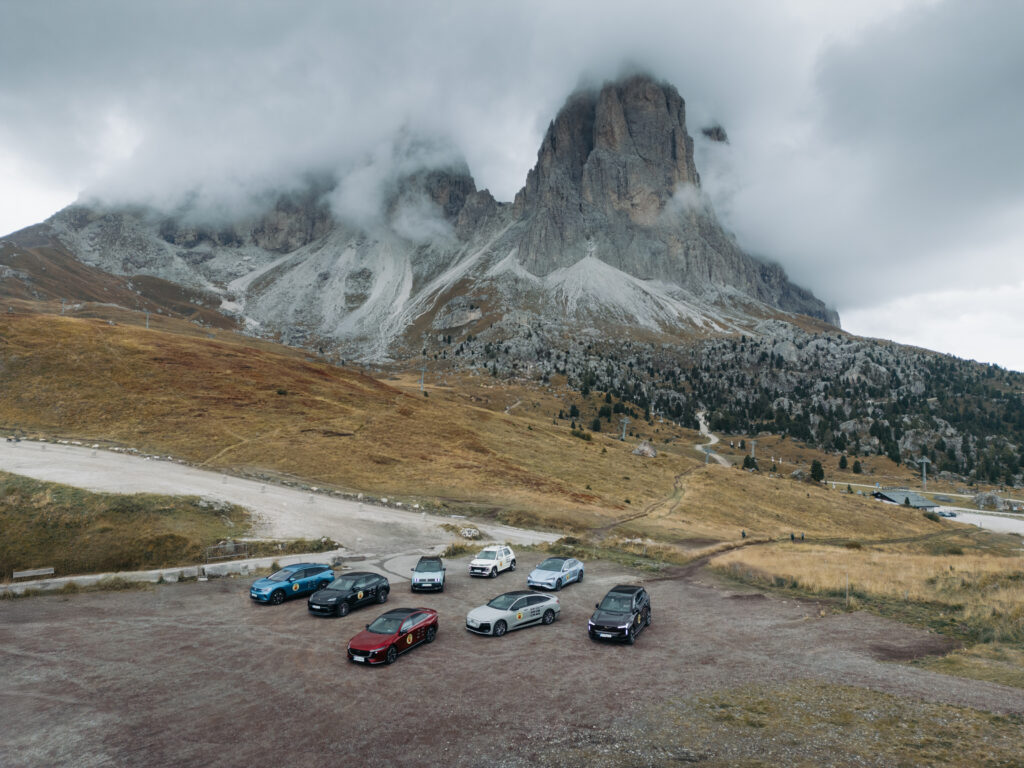
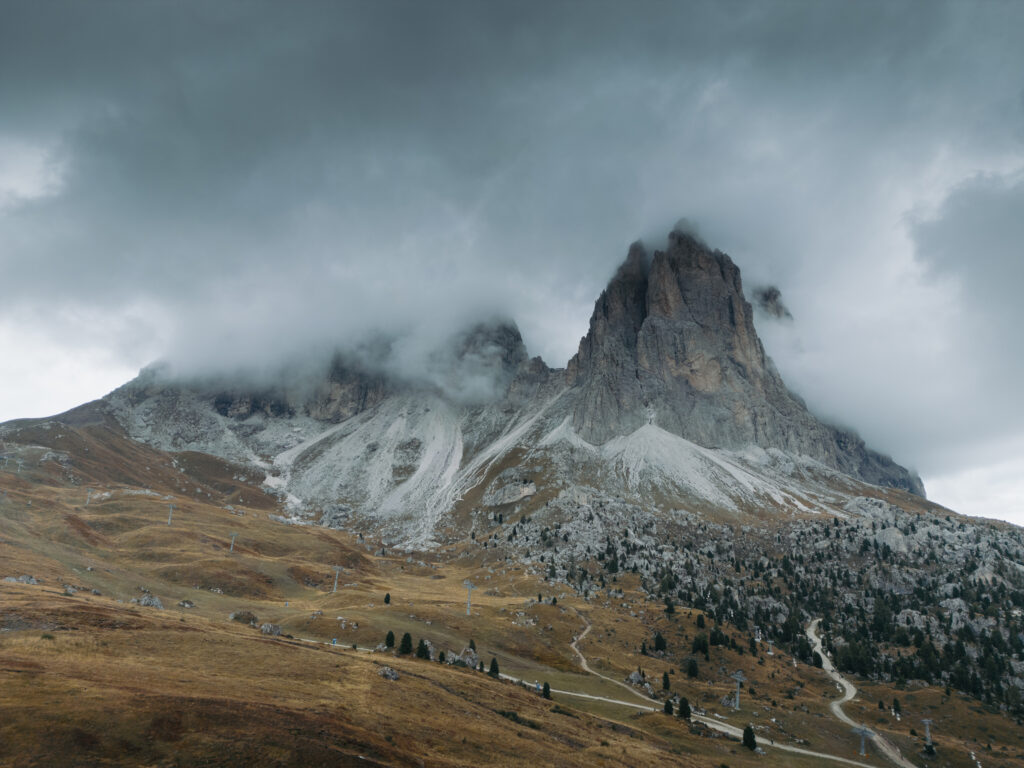
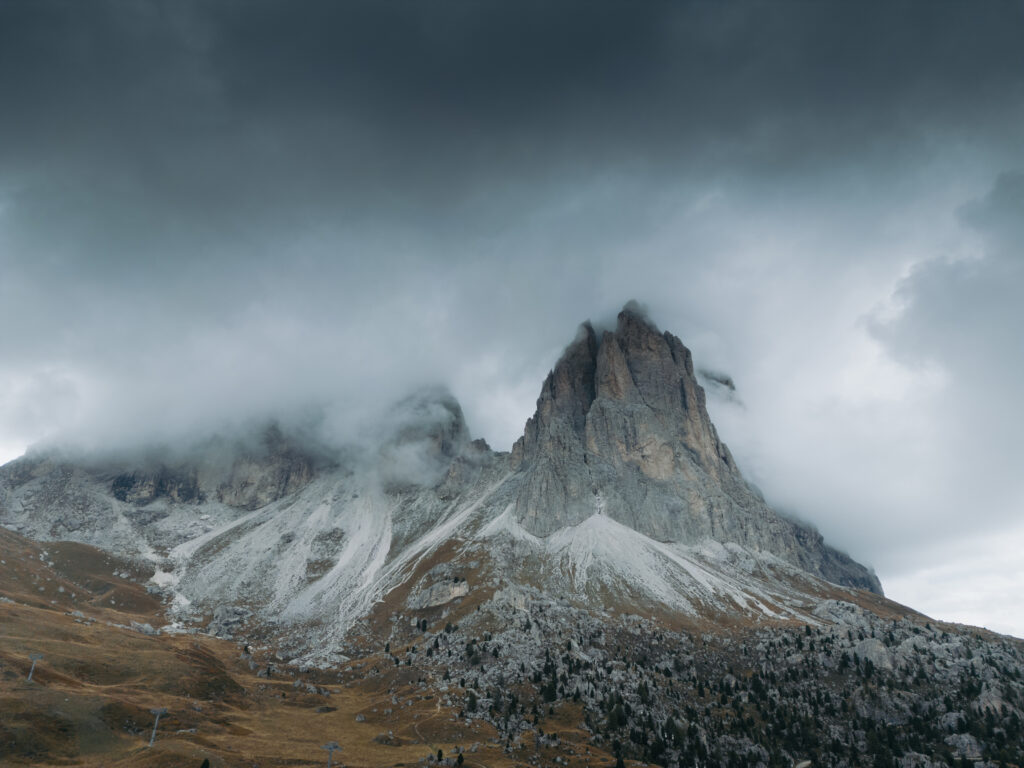
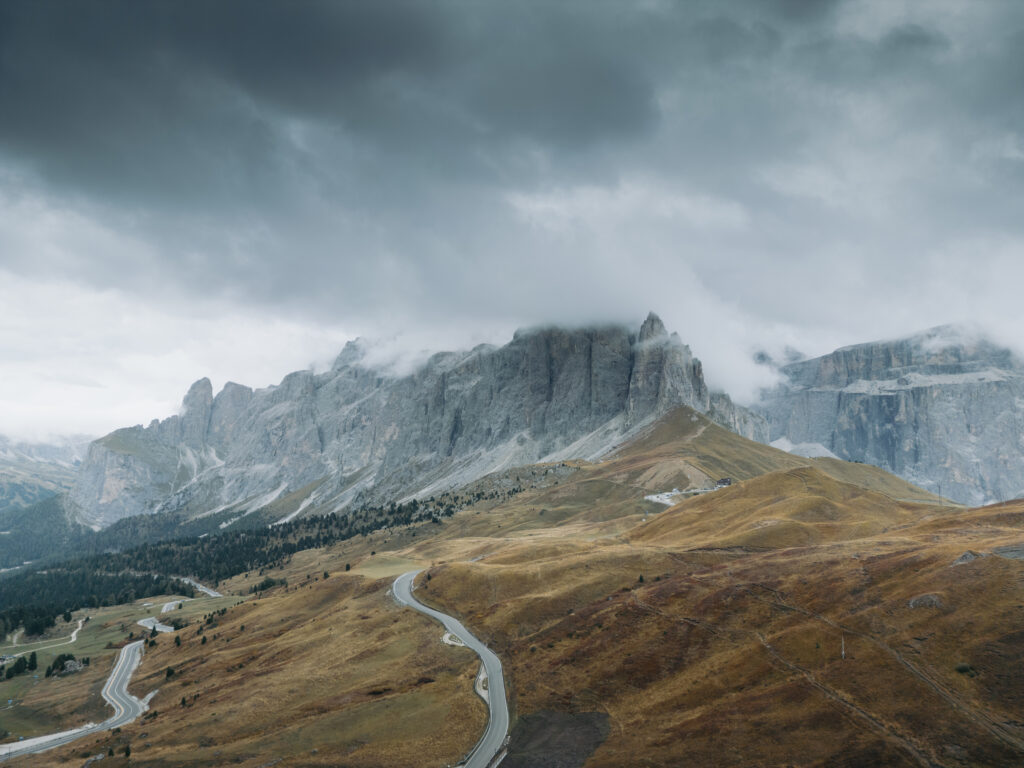
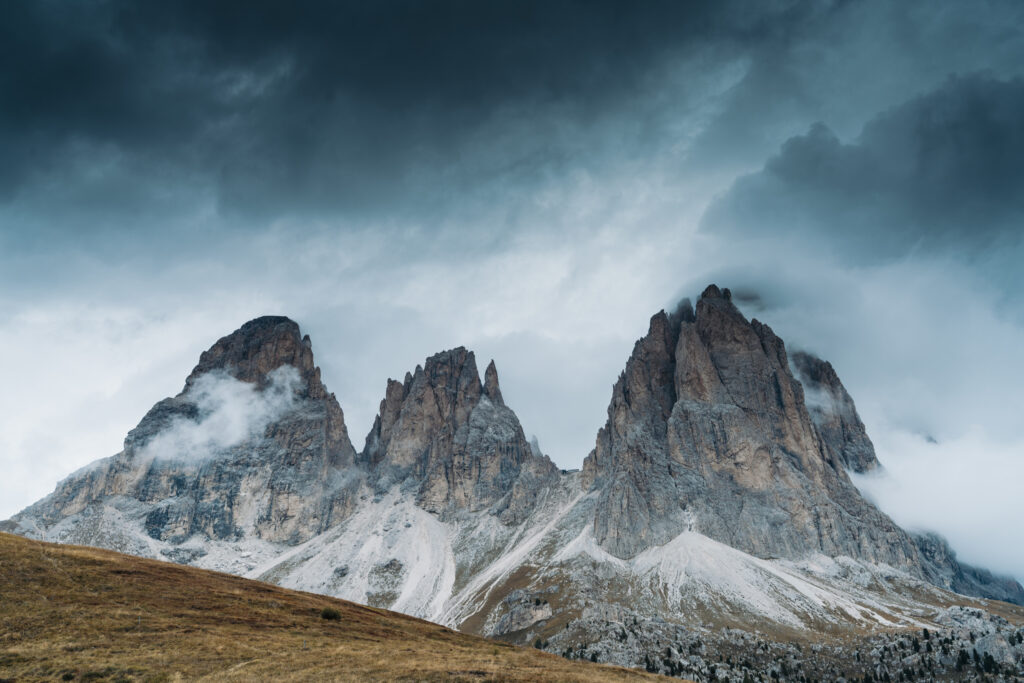
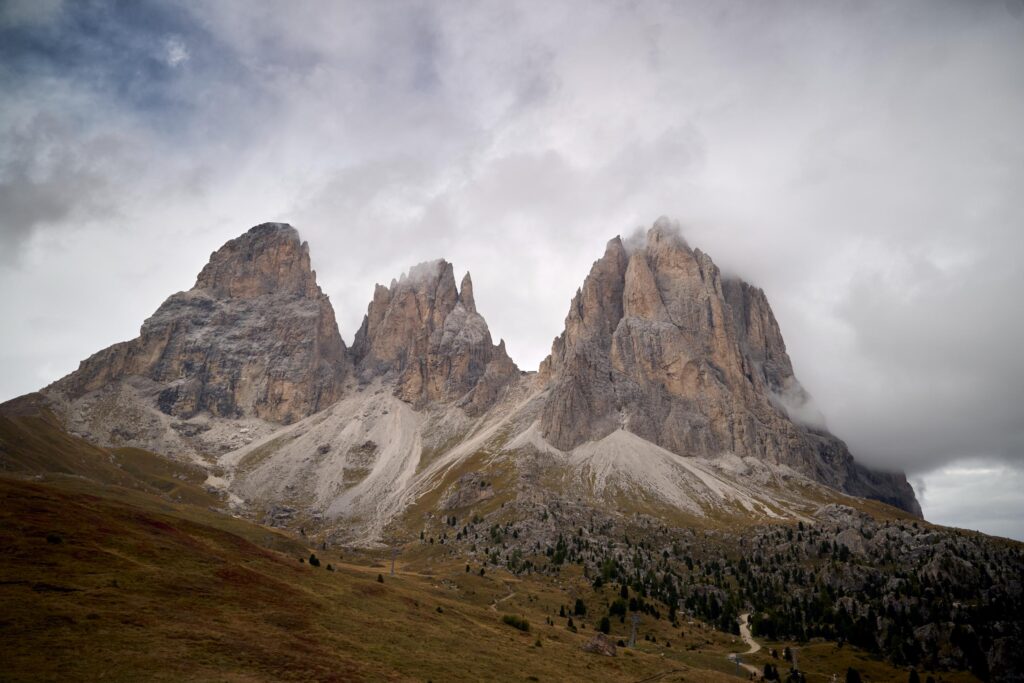
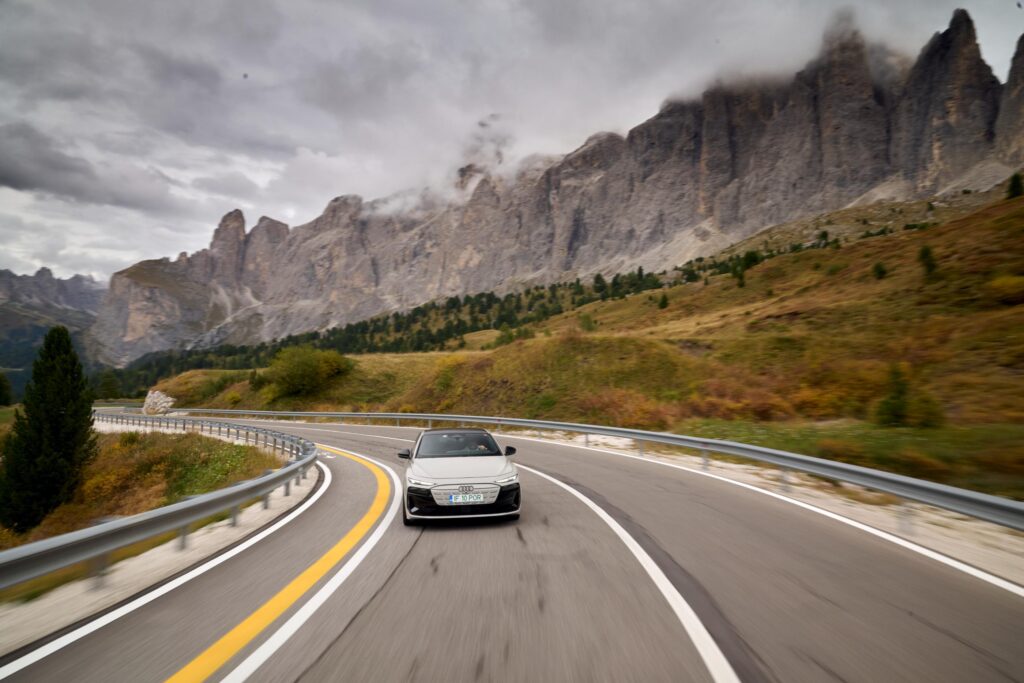
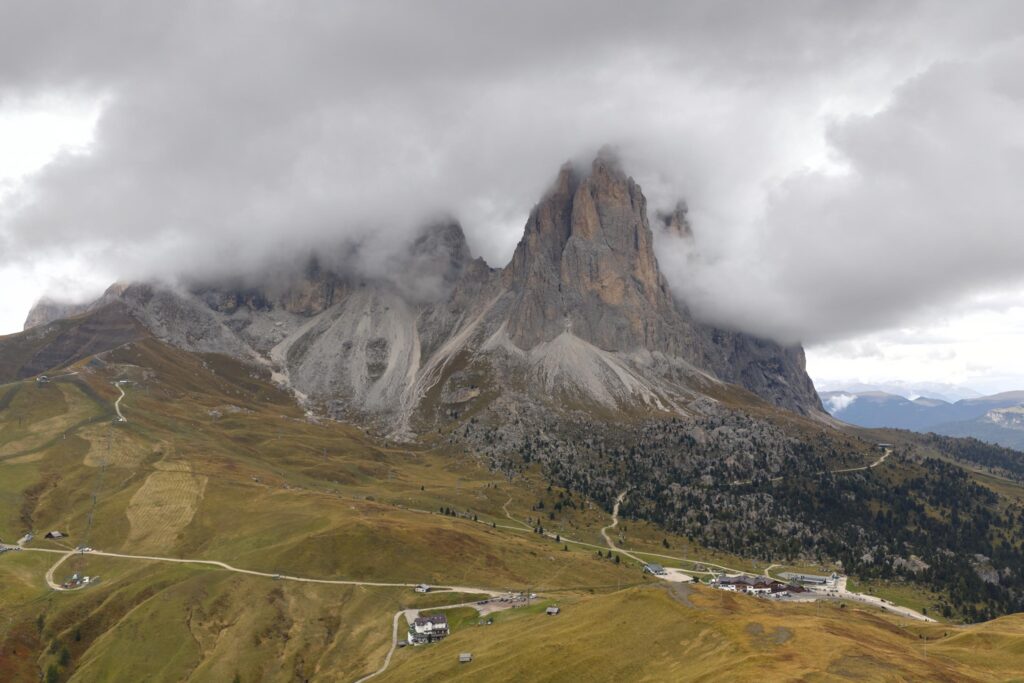
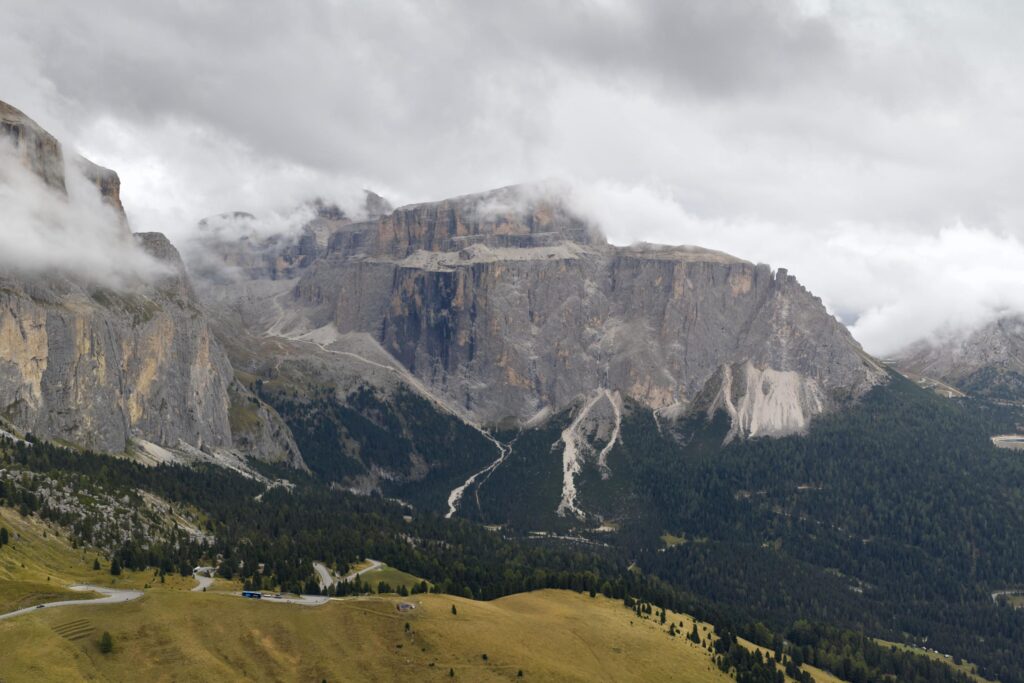
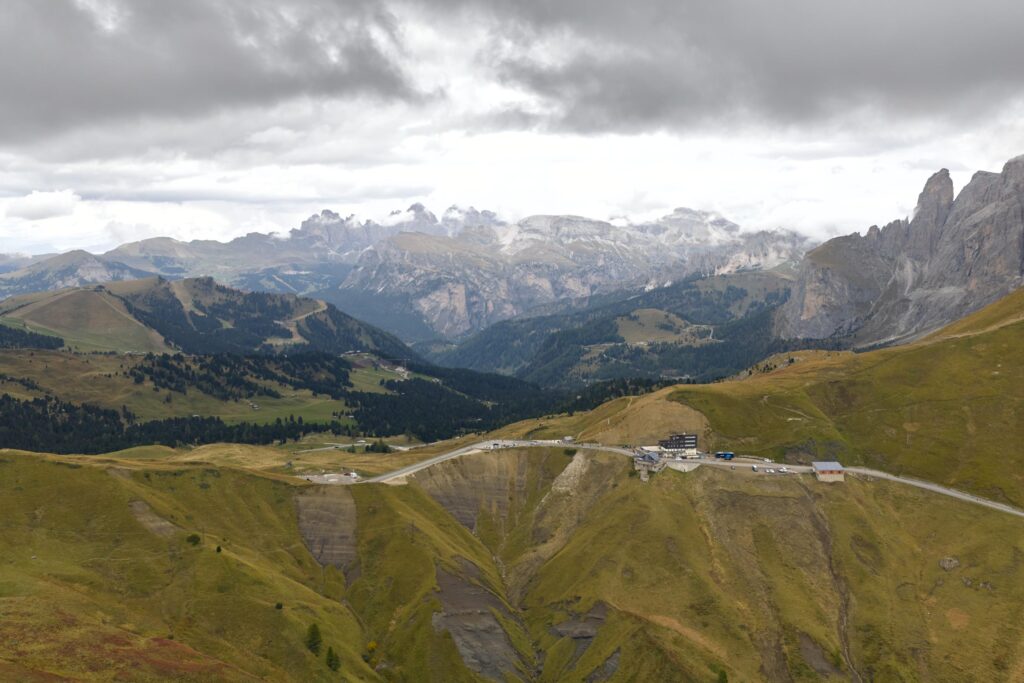
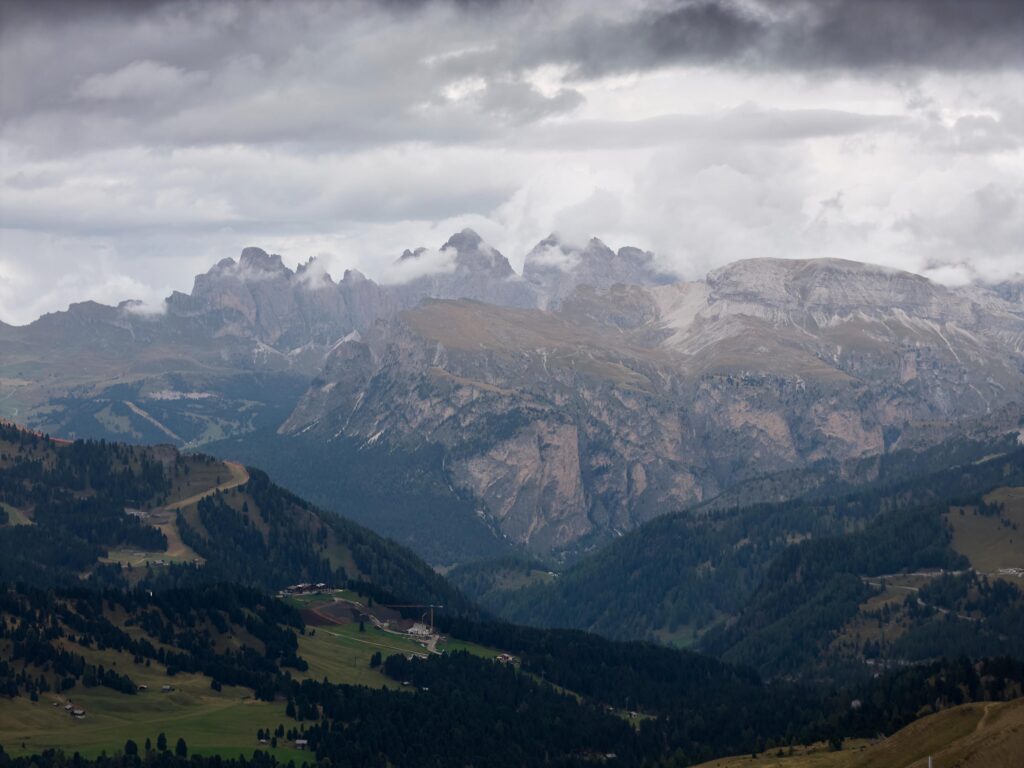
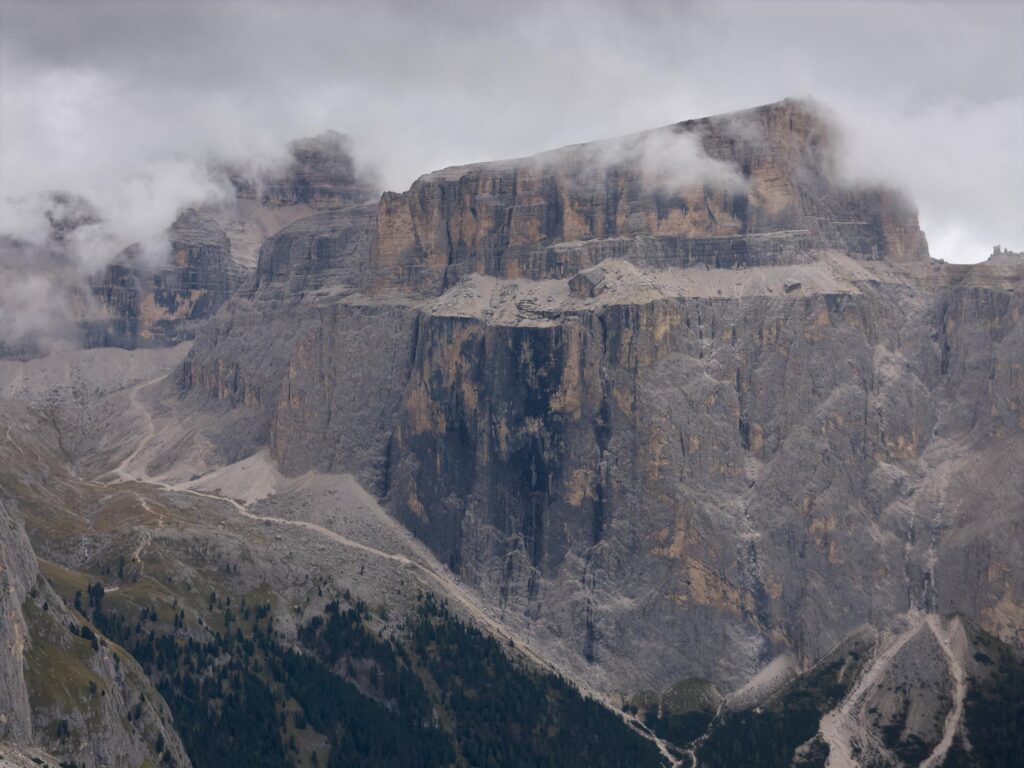
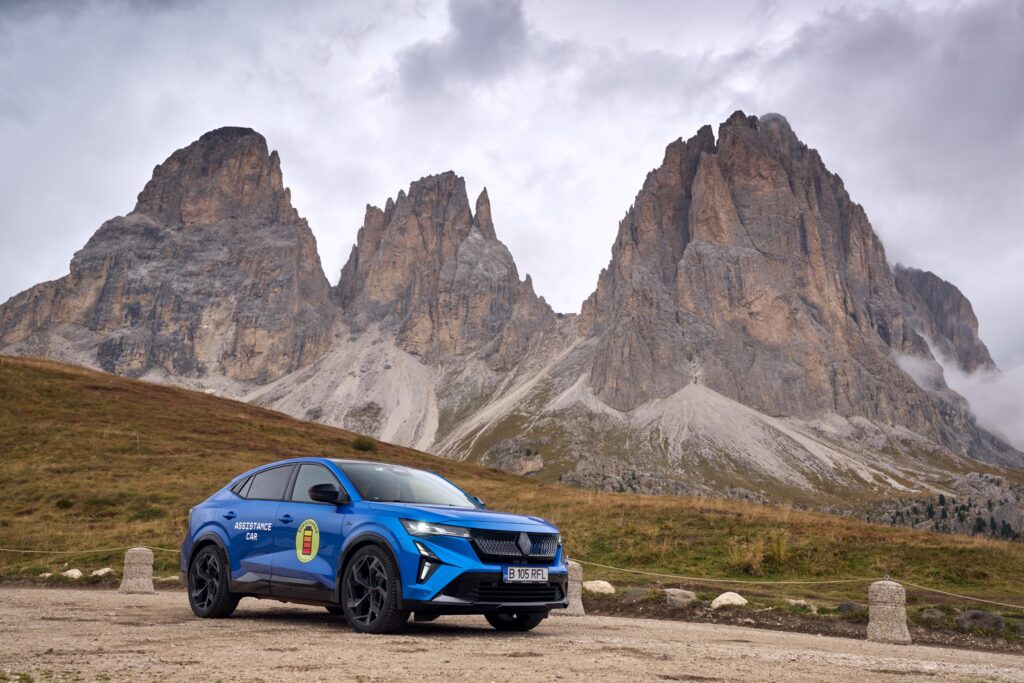
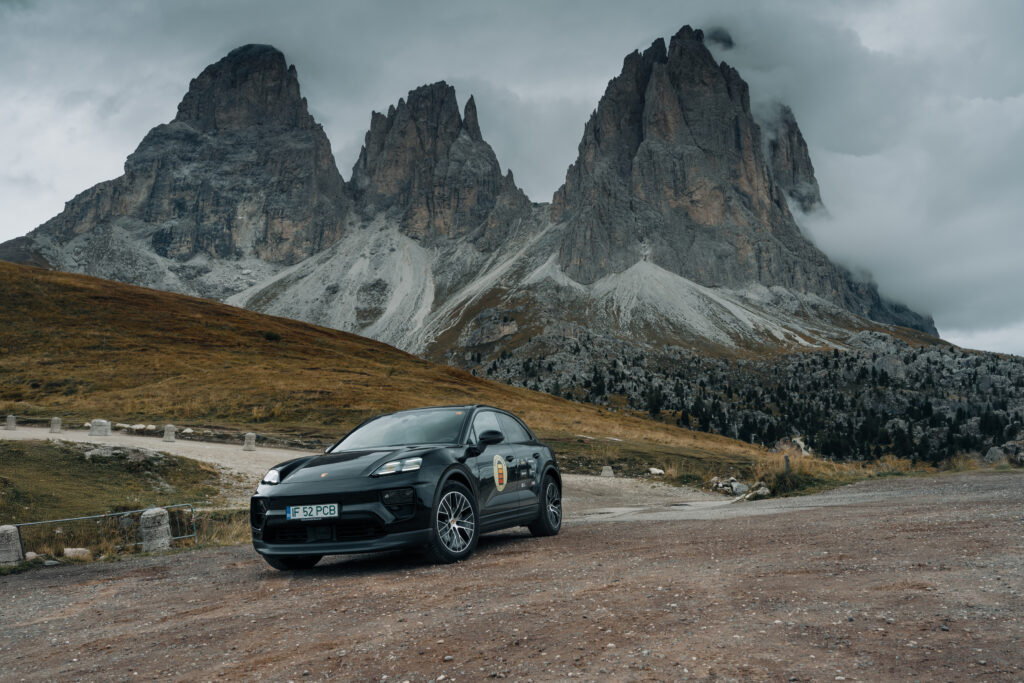
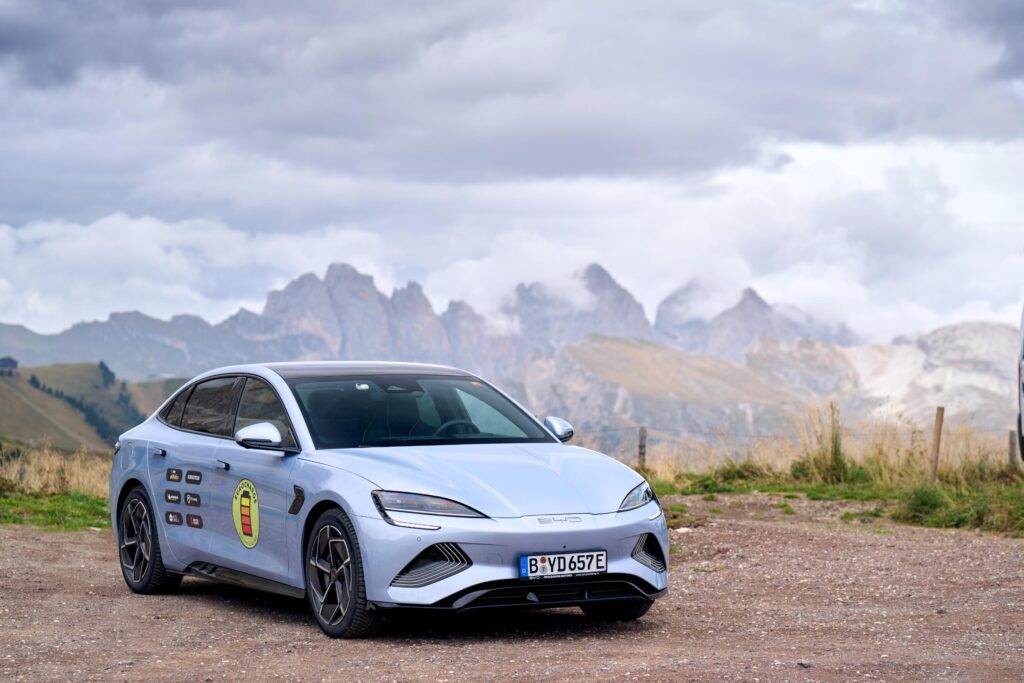
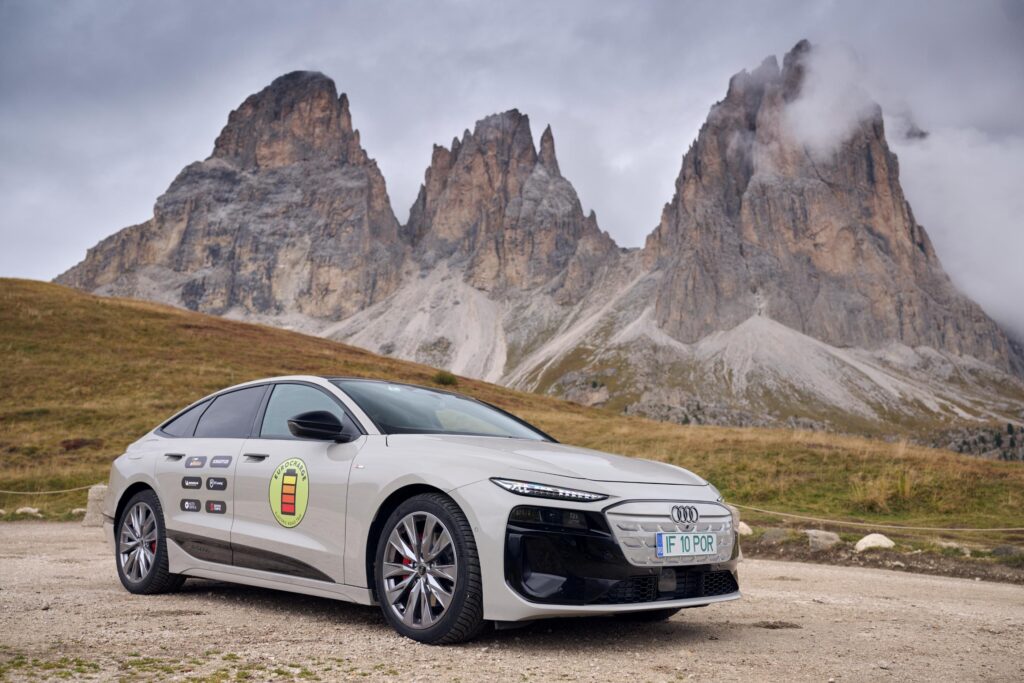
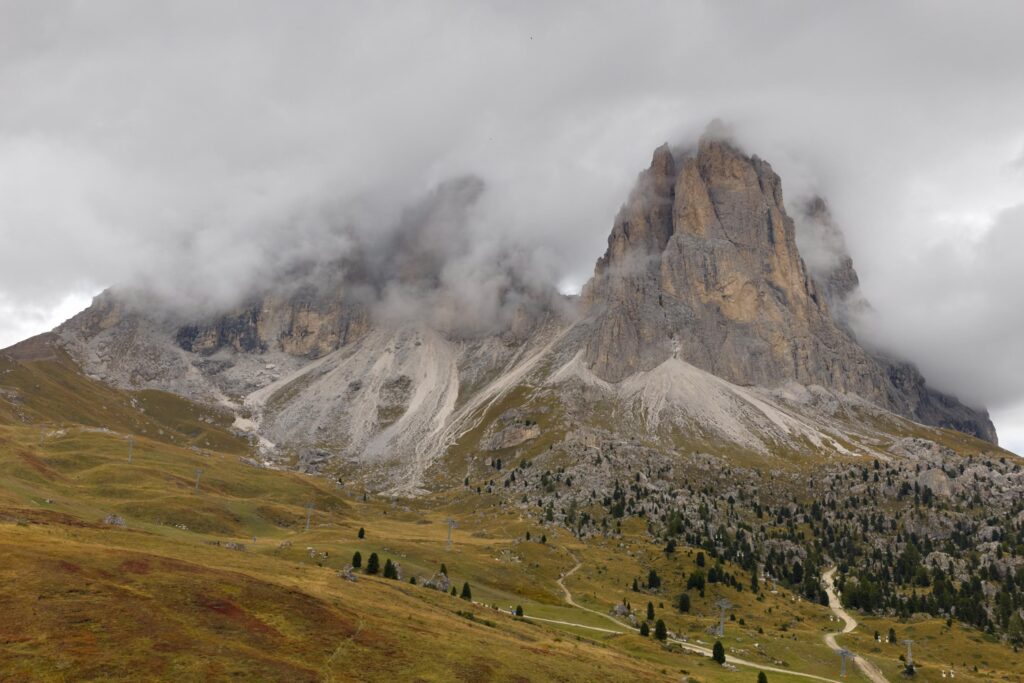
Next was Passo Pordoi, located at over 2,200 m. We pushed forward, struck by the beauty of the everchanging decor, one turn after the other. We could smell the rain as the windshield wipers started their dance.
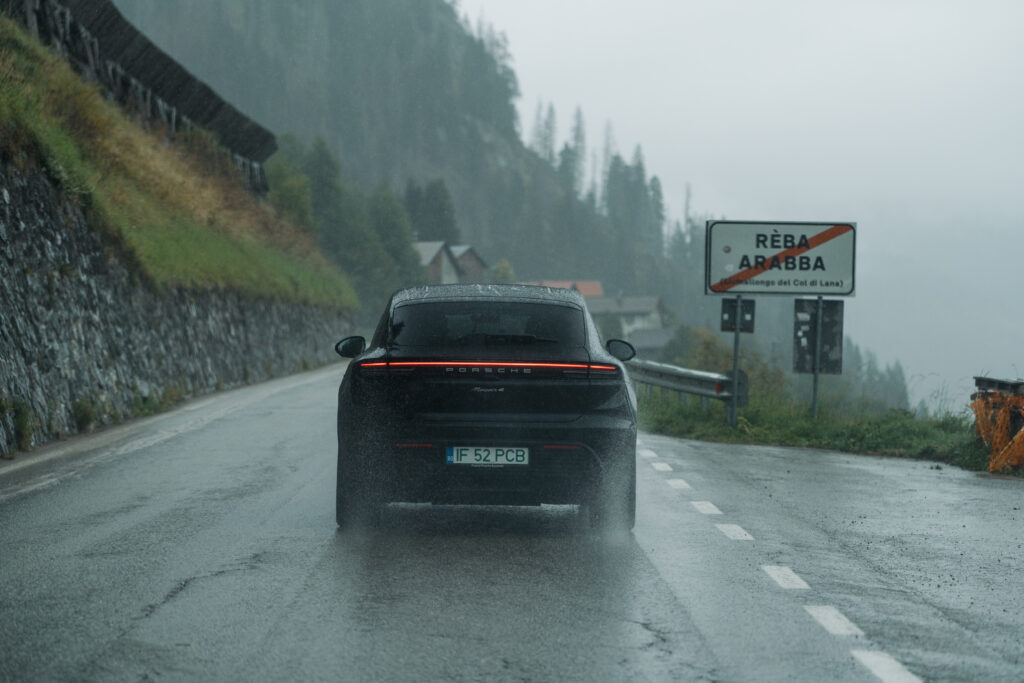
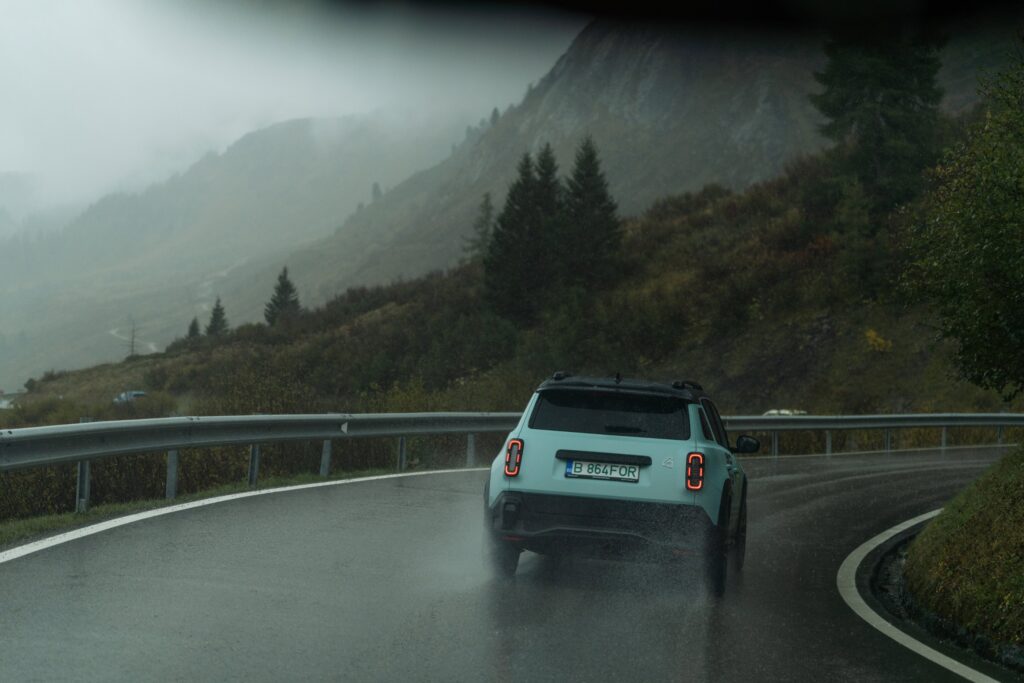
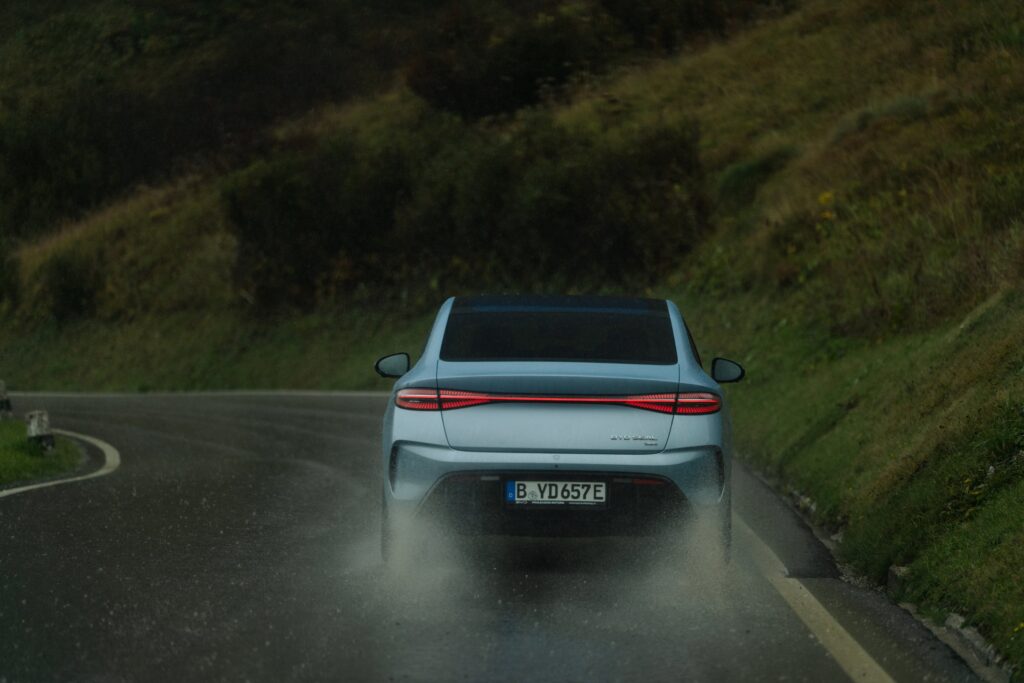
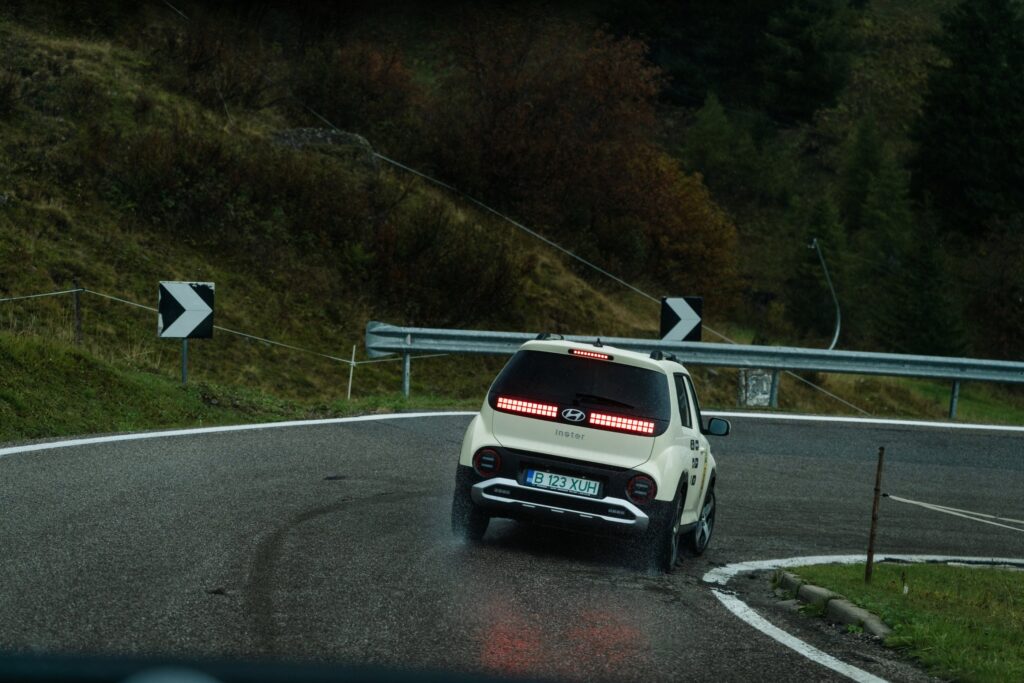
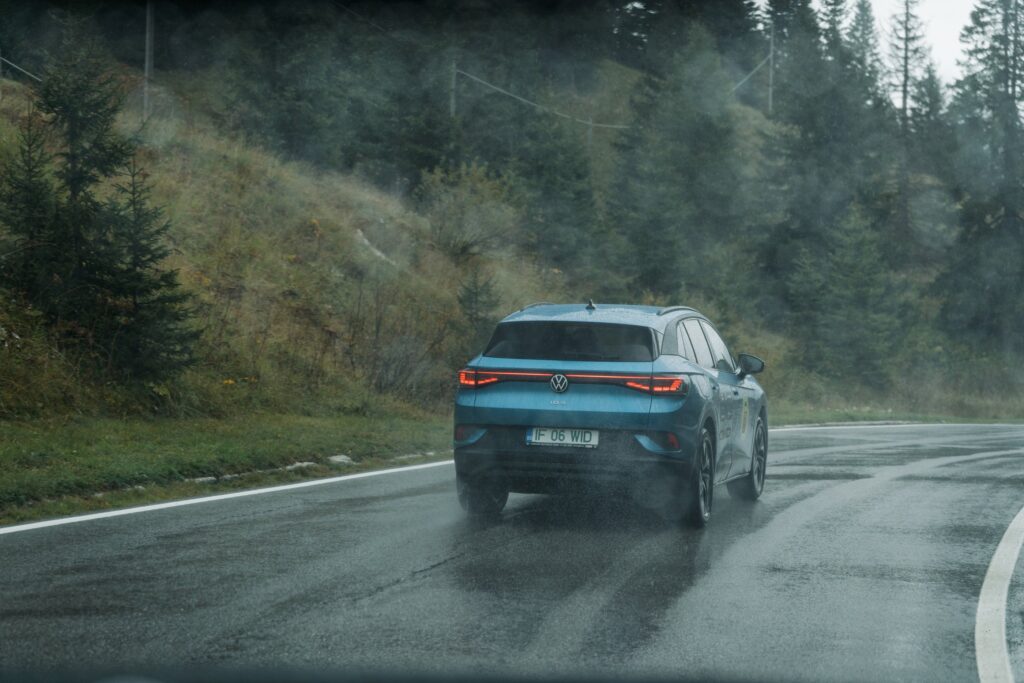
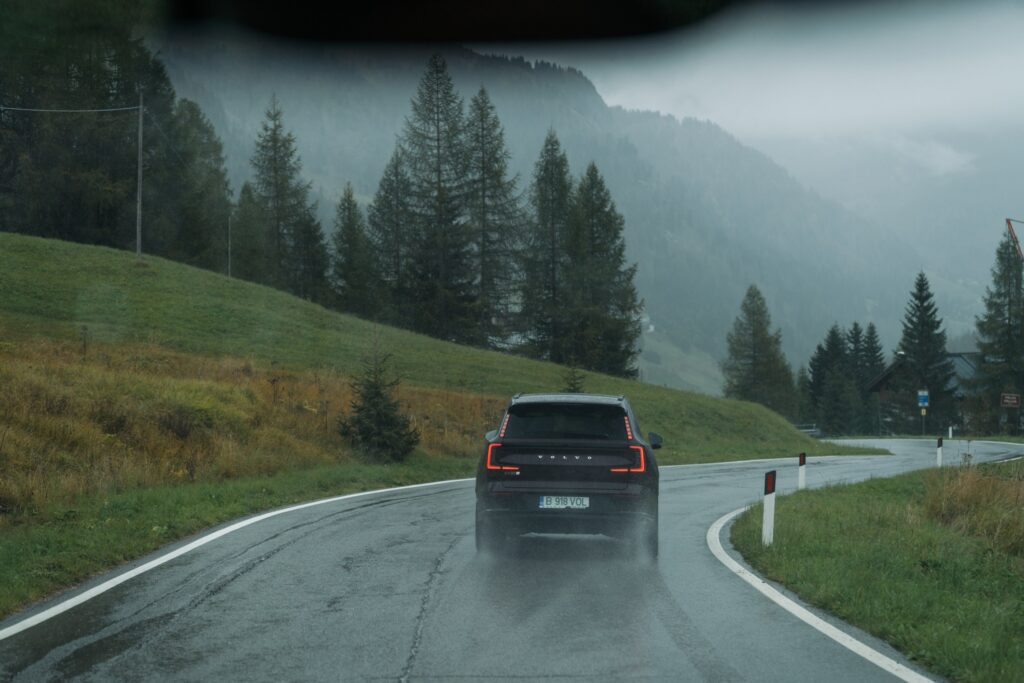
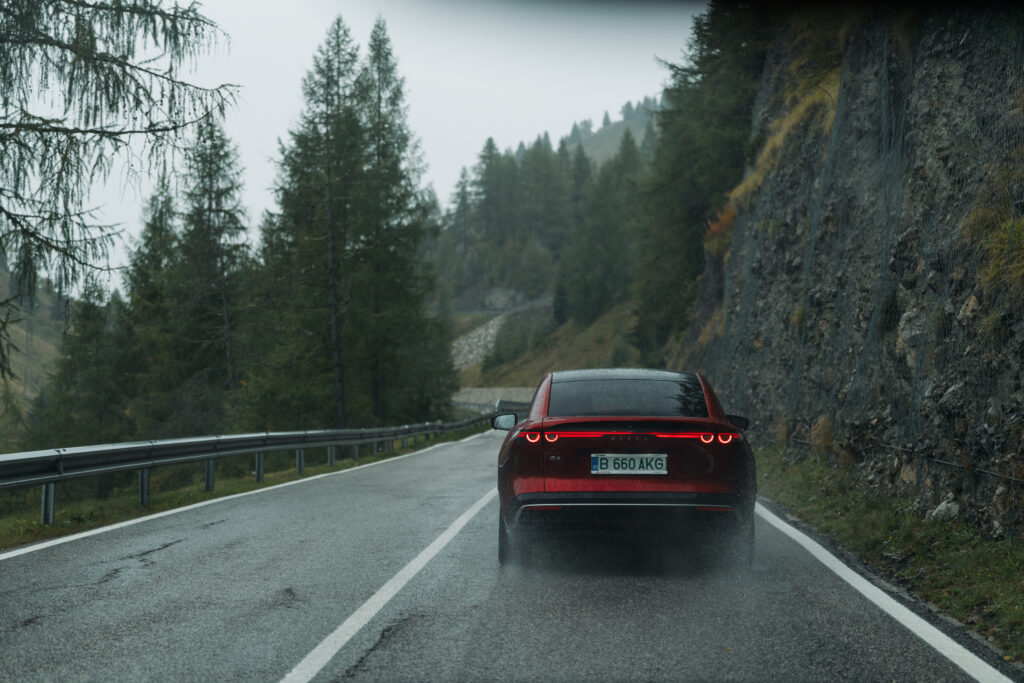
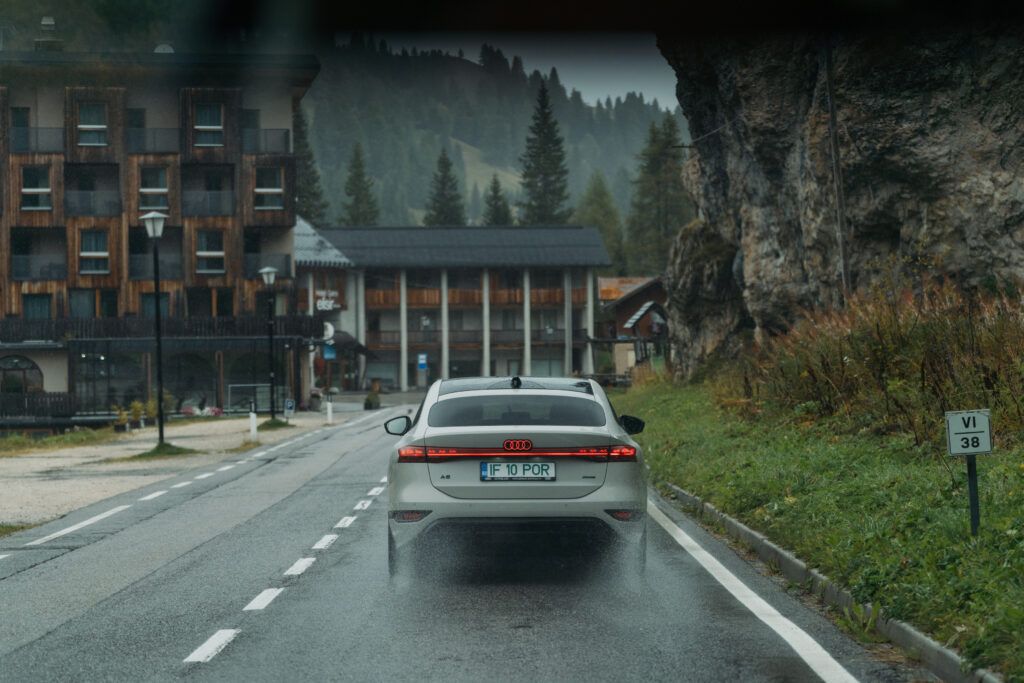
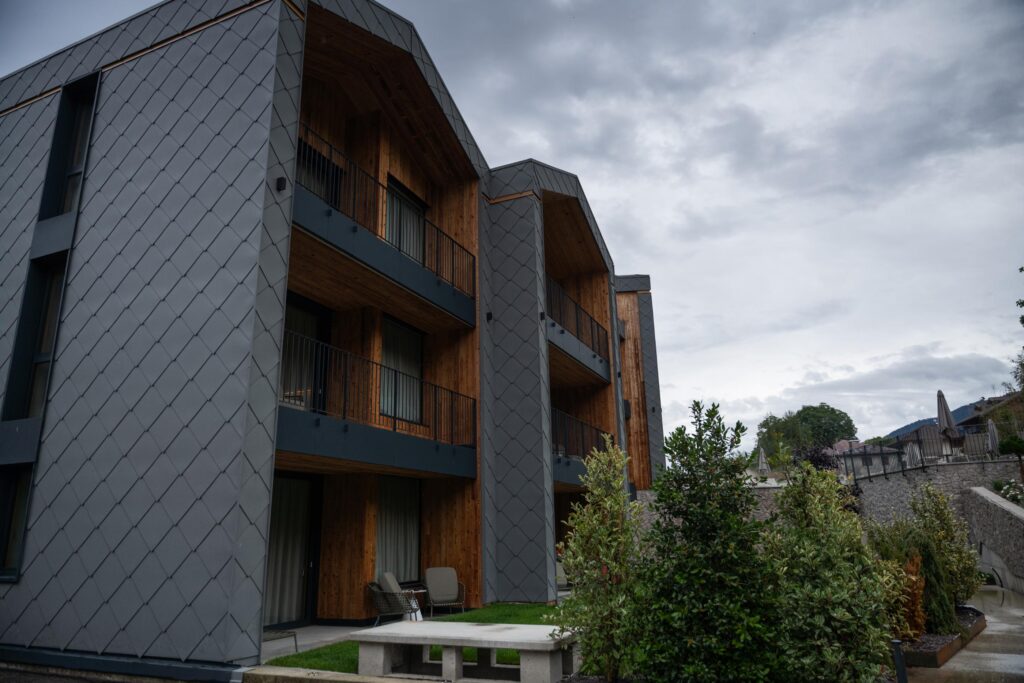
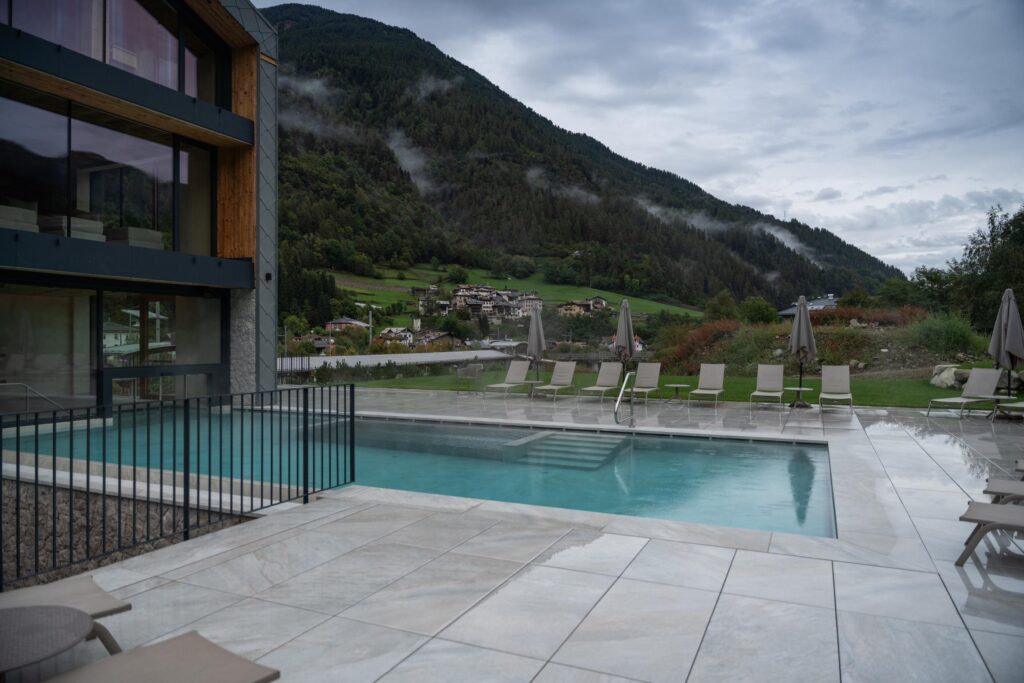
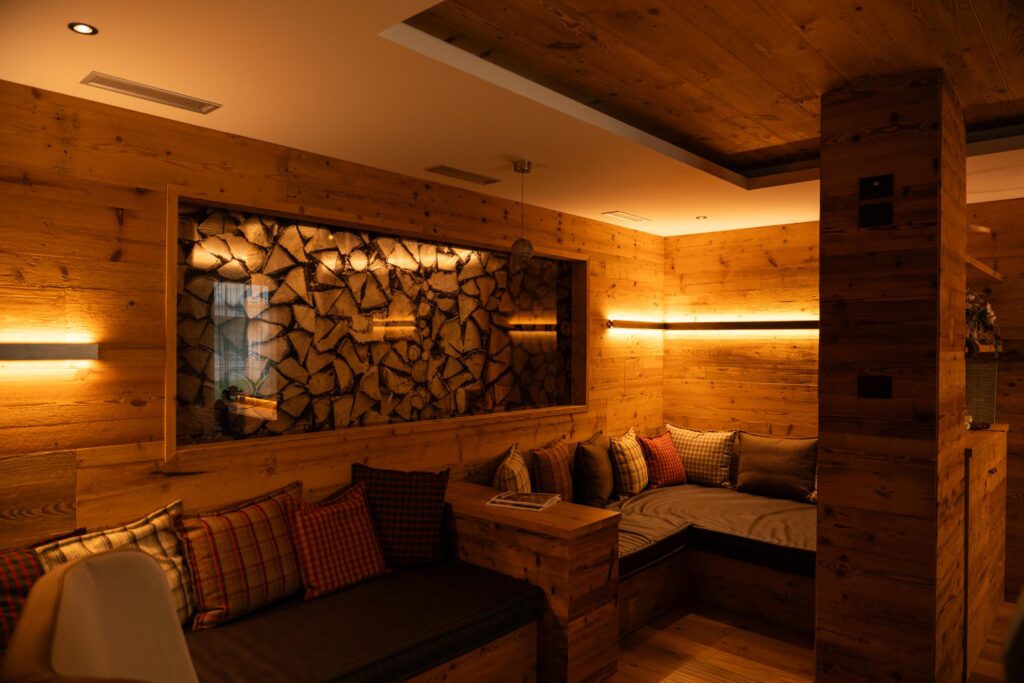
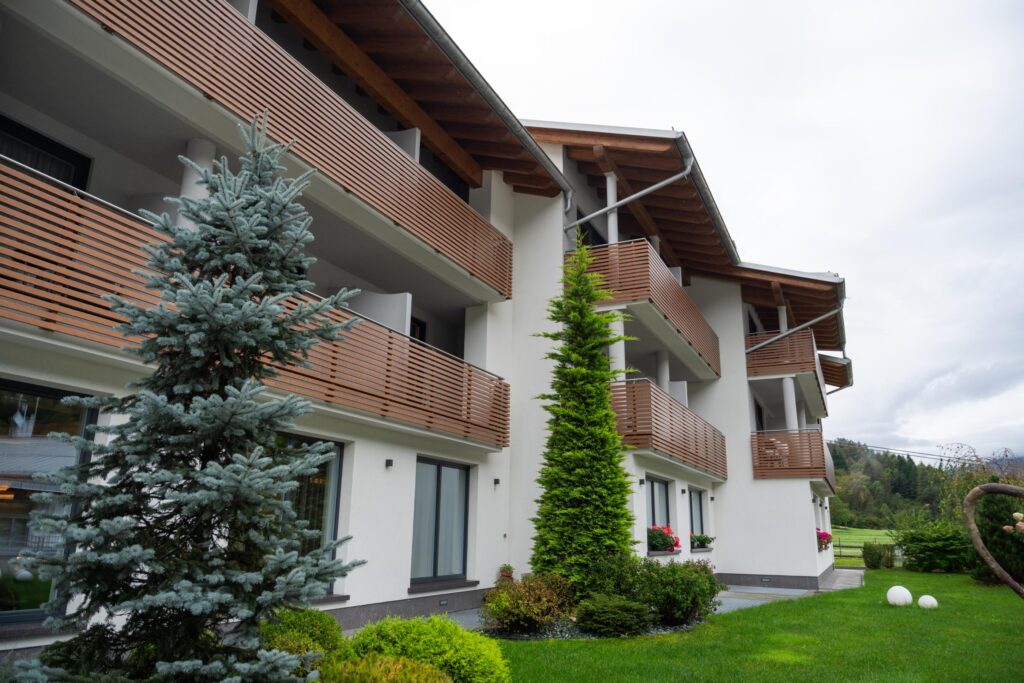
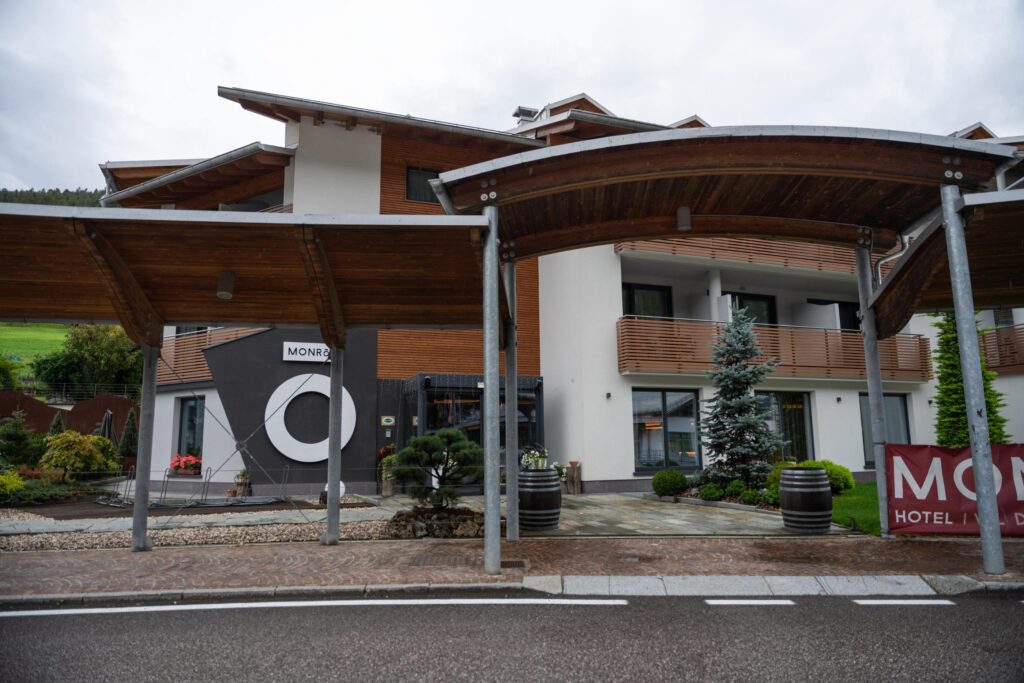
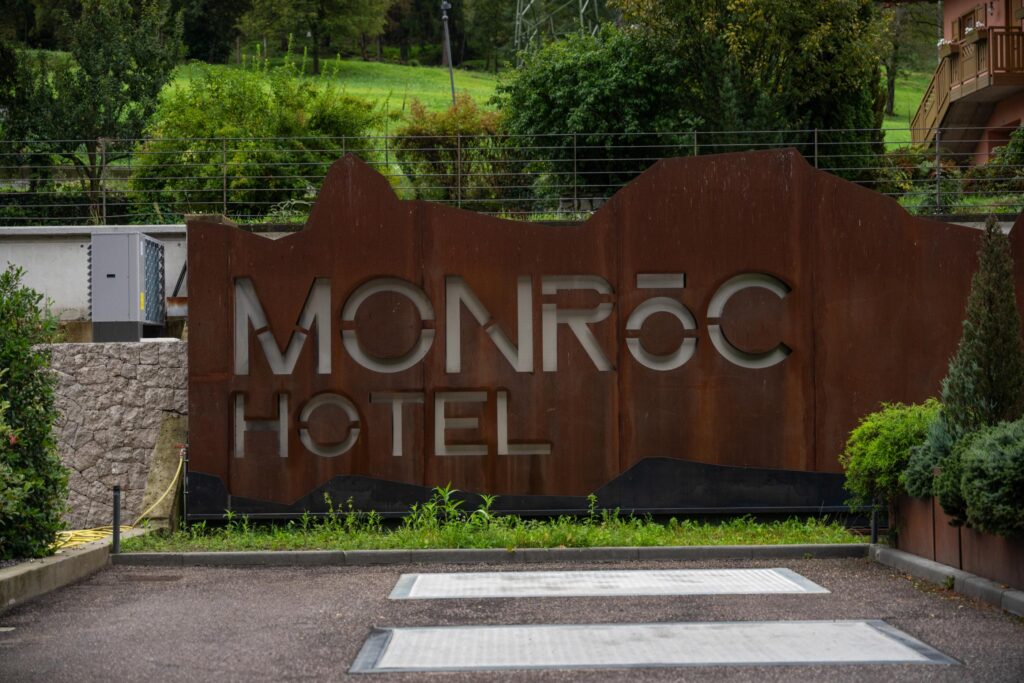
There was more rain on Passo Gardena and Passo Campolongo, the last two passes in this four of a kind merry-go-round that finised with the descent towards Selva di Val Gardena. Another 130 km stood between us and Hotel Monroc, our HQ for the three nights spent in Commezzadura.
Constantin Ciobanu (Autocritica, Adevărul Auto) on the Audi A6 Sportback e-tron
I got behind the wheel to set off for the Italian passes, and it didn’t take me more than a couple of kilometers to realize that, for me, the A6 Sportback e-tron is the car that best suits my driving on this tour. In terms of chassis, suspension setup, steering feel – a round of applause. Even though the car emphasizes comfort, it doesn’t do so by isolating you from the driving experience. Very nice mix from the Germans.
The performance is there and at the level you would expect from a sedan costing over €100,000. And interestingly, the only detail that didn’t demand my attention, didn’t make me cringe, was the electrics in the sentence. 7.5 hours of pure driving, but only 325 km at the end of the day, which may give you an idea of the average speed, but which ended up with an average consumption of 18.1 kWh/100 km driven and a 38% battery energy level at the end of the day.
Although with a sedan in this segment and price range, I shouldn’t talk about the quality of materials, it seems I have to. Some of the materials are not up to the expected level and you find them in “everyday” areas where you interact with them on a daily basis. And that kind of first contact can be a bit of a brake for a prospective customer in wanting to find out how much better it is further down the road if they get behind the wheel.
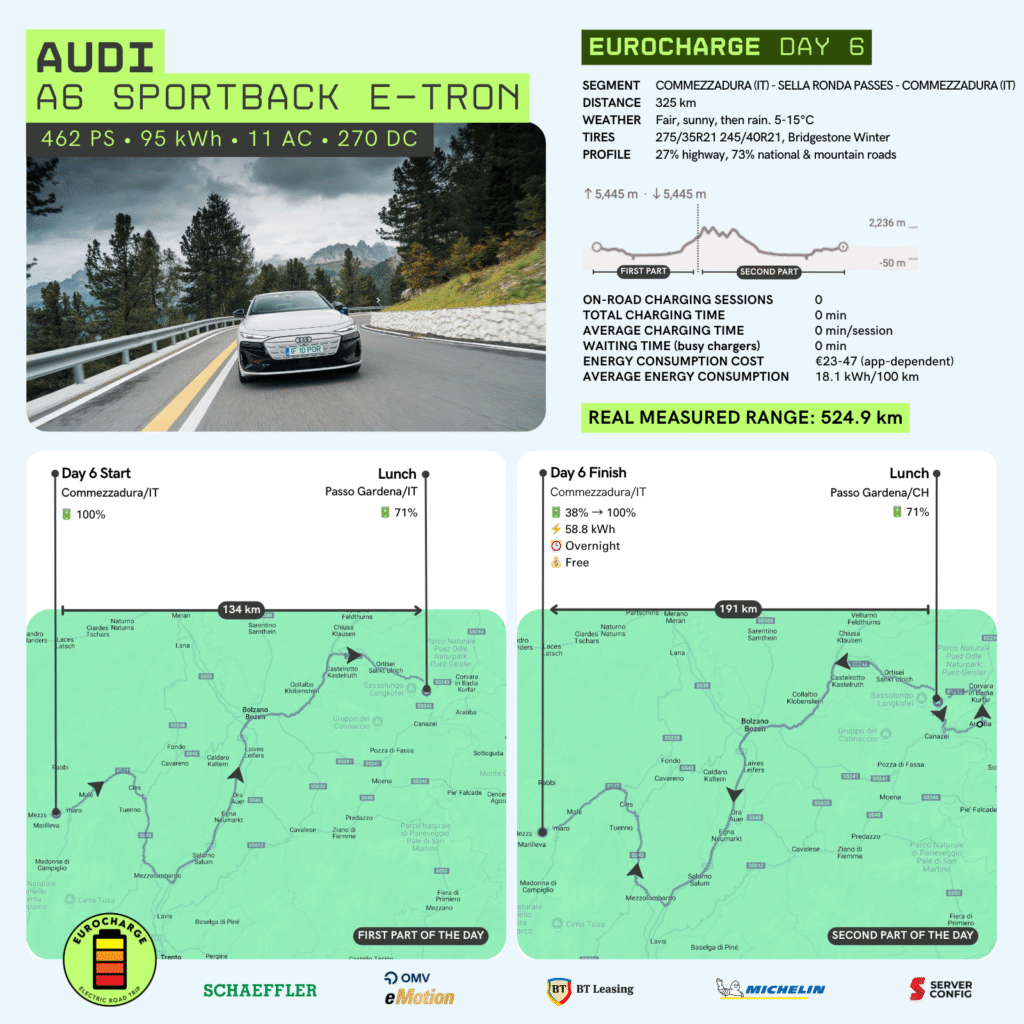
Tibi Buzdugan (Electromobilitate.com) about the BYD Seal
BYD Seal was for me the penultimate car driven in Eurocharge 2025. Eight days I felt like someone who had missed an episode of Game of Thrones and was trying to avoid spoilers from other colleagues as much as possible. I succeeded to some extent, as I didn’t know what to expect, but everyone was delighted and surprised.
After 300+ km through the Sella Ronda, highway and other winding roads from the hotel we started from to the valley’s thread, the Seal surprised me too. I’ll list just a few of the things that surprised me the most, not to praise every single feature. First, the sound deadening: even on the highway at 80mph, the car is very quiet inside. So you can enjoy the very good sound system without having to crank up the volume like at a concert. But if you still want to do that, you’ll be surprised at how little the sound is distorted, even at levels where your ears start to hurt.
Secondly, roadholding: the car has an almost 50/50 weight distribution between the two axles, as well as a torque control system they call ITAC (Intelligent Torque Adaptation Control). This makes the car very dynamic and allows you to delay braking a bit when entering corners. Even in the rain, downhill, I felt the car could hold the narrow lane perfectly in the hairpins without me having to downshift down to 20 km/h.
The only drawback I noticed is the low charging power. On paper, the car is capable of pulling up to 150 kW from the fast charging stations, but we didn’t manage more than 93 kW in the one charging session. It wasn’t perfect battery-temperature conditions, but other comparably priced machines perform much better (especially those on 800V platforms).
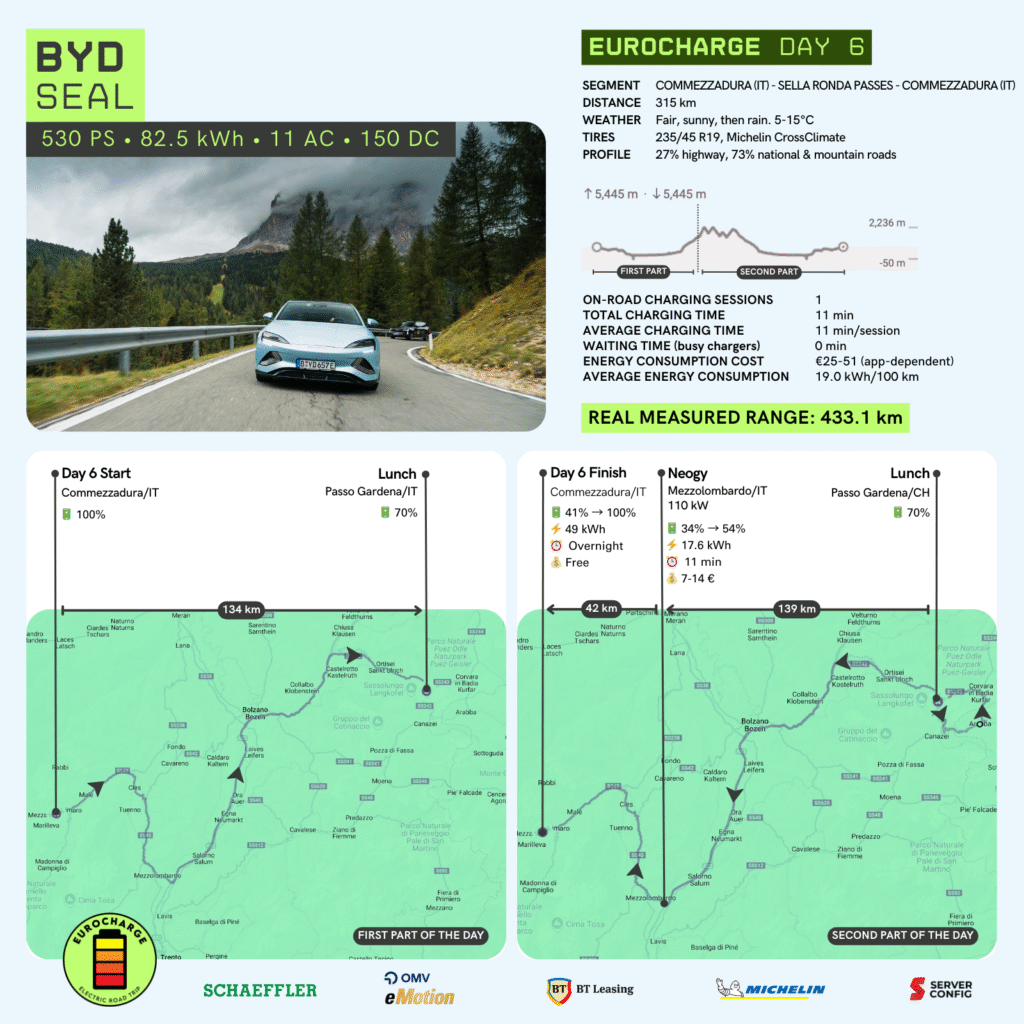
Mircea Mester (Autocritica) on the Hyundai Inster
On the highway, the first surprise came. Yes, it charges slowly, but on the other hand, the battery’s small. On the clock, the Inter doesn’t take much longer to charge than the rest. It kept up, even though it racked up more charges than the others when I counted them in the daily infographic reports.
But the real revelation came in the Alps. On those narrow, winding roads in the Dolomites, the Inster was transformed. It became the most maneuverable and fun car on the whole tour. It’s small, agile and has a low center of gravity. You slip past anything, anytime, anyhow, and parking is child’s play. The Inster is a kind of modern-day Daewoo Matiz, a car that’s conceptually exceptional (small and roomy), but modern and gives you all the technological comforts of 2025. It’s like a go-cart, but with a raised roof, air conditioning and a boot that actually exists.
And then we compiled the figures. Yesterday, in the Dolomites, after 320 kilometers that included the Sella Ronda loop and highway at legal speeds (on the way from the hotel to the mountains and back), the consumption was 13.6 kWh/100 km. A truly absurd figure. And it could have been even lower – take it off the highway and leave it in its natural habitat – city, country, mountain roads – and this car becomes a stellar performer in terms of efficiency. It’s what Hyundai did on the Kona, but scaled proportionately down a segment even further.
Inside, the Inster is an exercise in intelligence. Although it’s the size of a bedside table on the outside, the interior design is fabulous. The ceiling is high, and the dashboard is full of crevices and storage spaces. No other car on the tour comes close to the ingenuity with which the Inter’s space is designed. Okay, obviously, it’s all plastic. Honest, well-assembled plastic, but still hard plastic. Let’s not kid ourselves. But to add to the irony, the steering wheel and the levers behind it are taken straight from the Ioniq 5’s sibling, the Ioniq 6, a car three times the price.
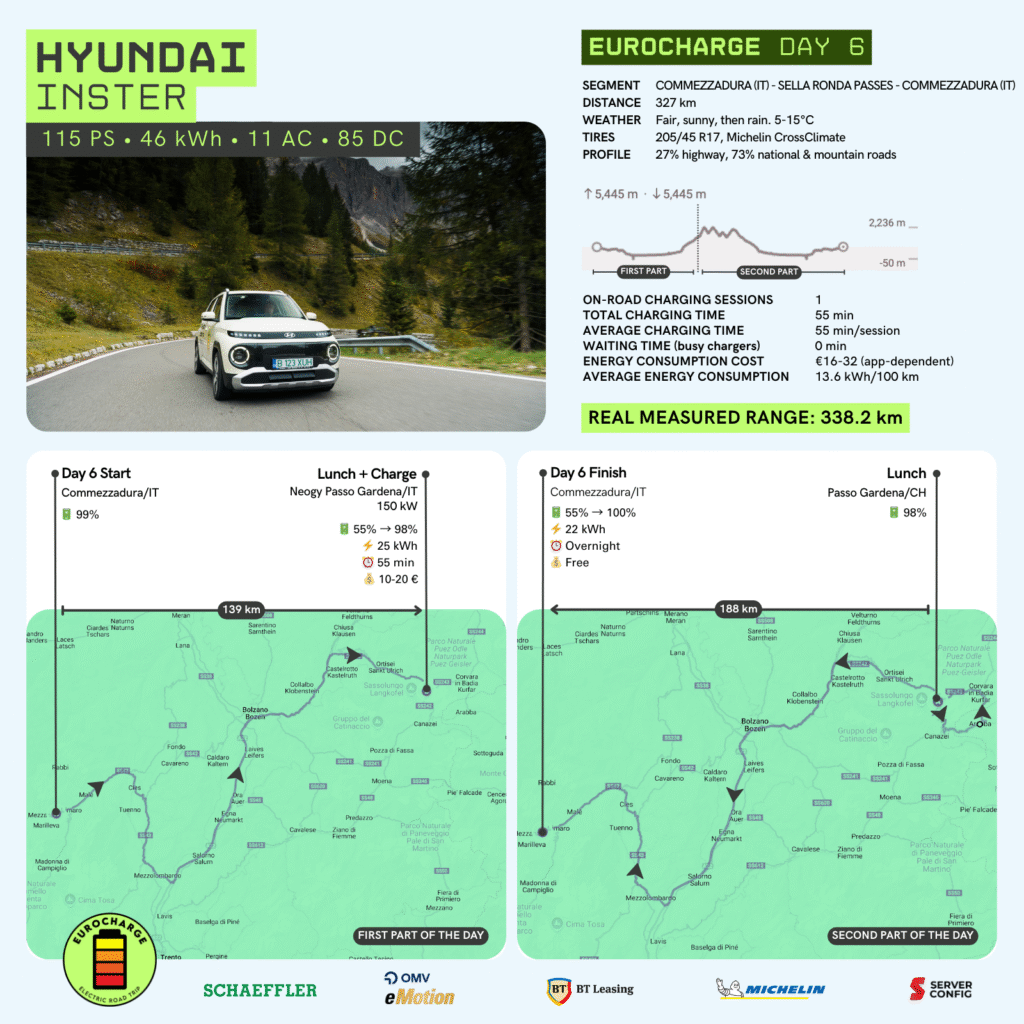
Marco Badea (Explicativ.com) on the Mazda 6e
I drove the Mazda 6e on the Italian roads, on the highway and through the Dolomites. Behind the wheel of this car, I relived my childhood, when I was playing NFS Carbon and driving a red Mazda, like this one, by taste. Only this time I actually drove a Mazda, and a fully electric one at that.
It’s good on the road, it’s lively, and the head-up display is worth every penny for helping me to maintain driving consistency and adjust speeds within the legal limits indicated by the speedometer in good time.
I like the way the car feels to drive, although I’d tweak the suspension a bit and make it stiffer so it doesn’t wallow so much on steeper bumps.
The interior is nice, tasteful, but the dashboard feels like it would be ok to be more intuitive, and the charging ports, which are hidden under the delineation between the driver and right passenger, I think should be put in a more easily accessible place.
Otherwise, the Mazda 6e is a car with personality. That’s how it felt to me. And the range makes it a car to consider if you want to buy something fully electric. The 258 horsepower helped us admire the Dolomites from all angles, and the 66 kWh battery gave us an actual measured range of 395.2 km with an average consumption of 16.7 kWh/100 km.
On the 317-km journey, we made one charging stop, at Passo Gardena in Italy, where the Mazda 6e charged from 36% to 100% in 53 minutes (charging coincided with lunch), with 49 kWh consumed and a cost of €19.39. Overall, I enjoyed the experience behind the wheel, but I would dare to say that the infotainment system could do with an update, especially the climate control.
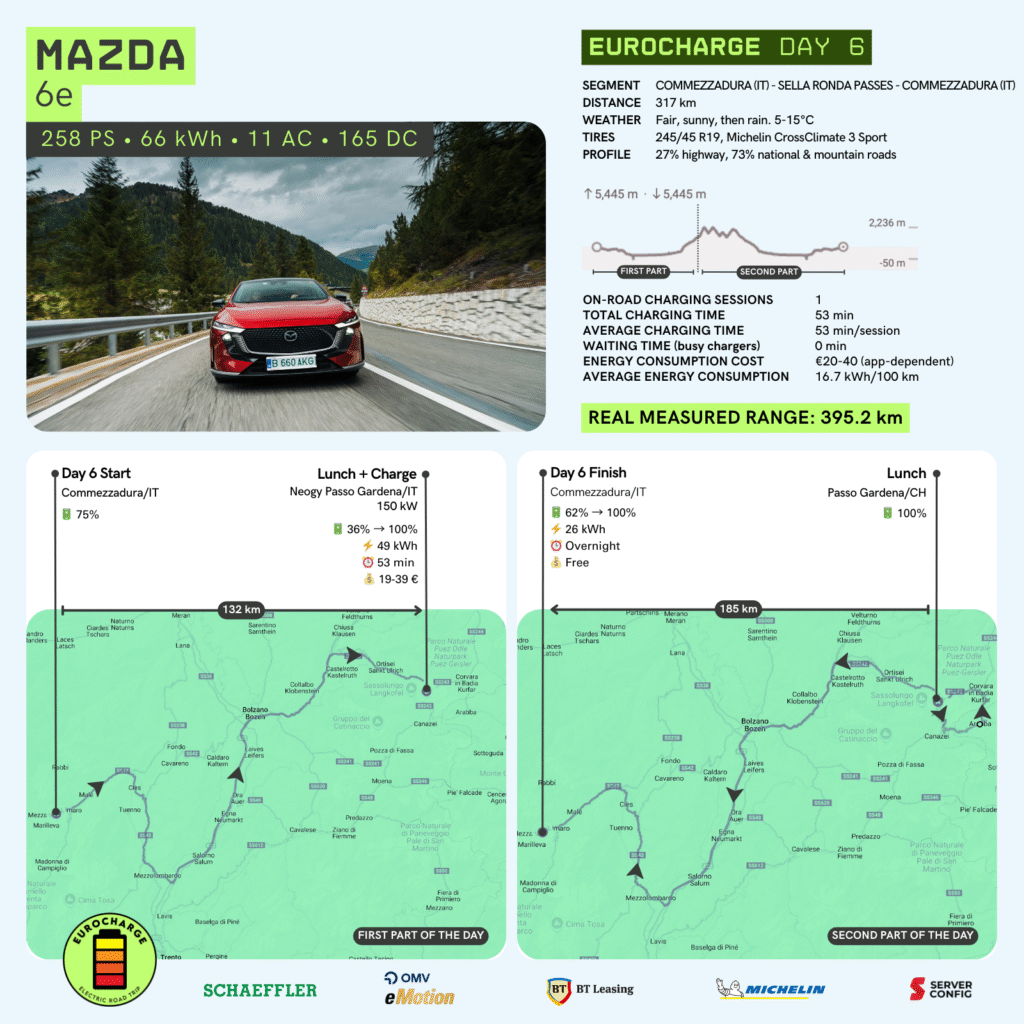
Radu Hângănuț (Euronews) on the Porsche Macan
One of these evenings, while driving, I bumped into a deer on the highway. I felt like I was standing in front of a majestic entity, effortlessly earning my respect every second we were on the same level. Then the next day, I stood in front of the Porsche Macan 4, ready to drive it. The feeling was the same.
If you want range and efficiency, the Macan 4 has it. The 100 kwh battery took us on the Sella Ronda with a fuel consumption of 17.5 kwh/100 km and an actual range of 543 km. That’s against the backdrop that, over the course of more than 323 km that day in the Dolomites, we climbed up and down the passes that make up the Sella Ronda, fitting the climbs through the Italian Alps with highway sessions (about a third of the route).
If you want to appropriate the social status that sticks with you when unboxing any Porsche, the Macan 4 has that too. As with any Porsche you’ll get into in this lifetime.
If you want an interior that fascinates and satisfies no matter how lavish the option package, the Macan does just that. It does it all, effortlessly. It glides through corners, tightens the ranks when you ask for power, even delivers the fifteenth decimal when you need precision.
A car whose only discernible flaws are the positioning of the USB C socket, plus a strangely and slightly malevolently constructed passenger door storage space – let’s stop flattering ourselves: it’s a great car.
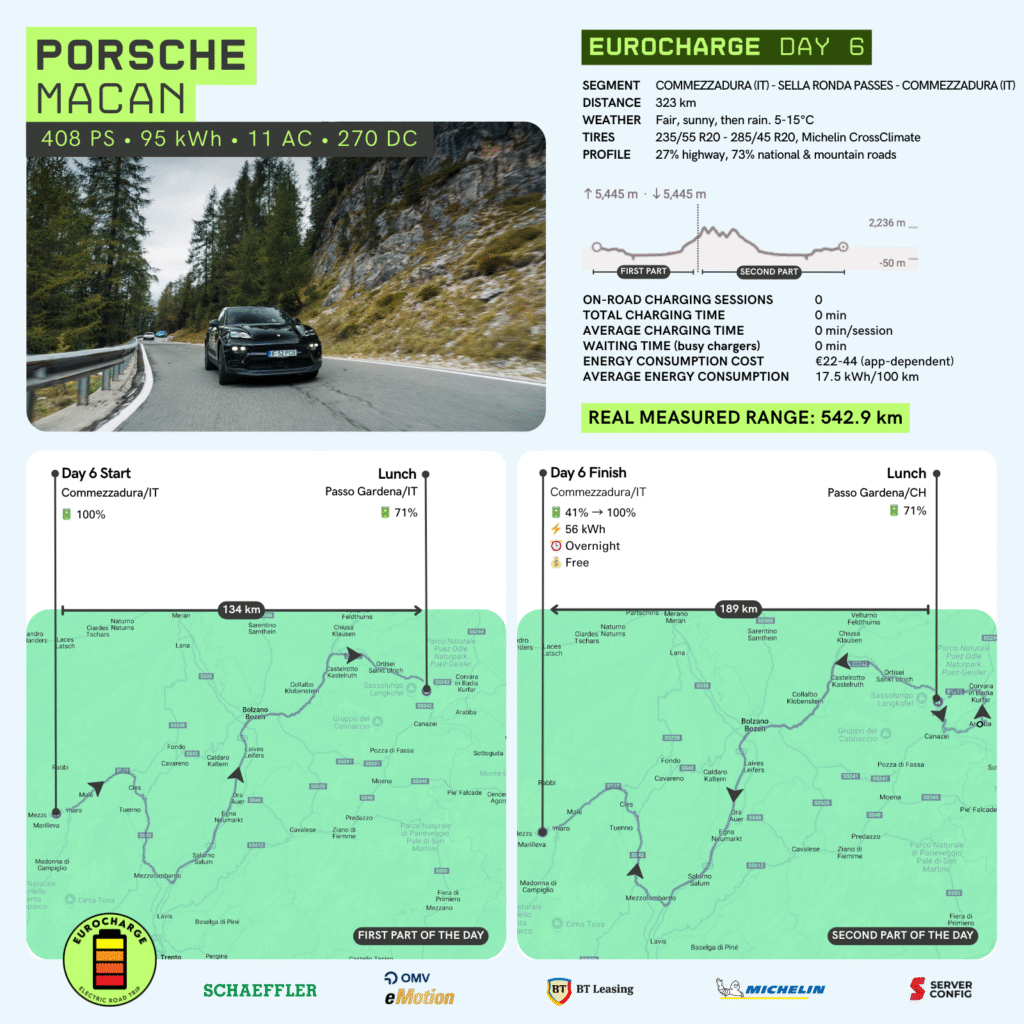
Gabi Nica (Cu și Despre Mașini) on the Renault 4 E-Tech Electric
I think we can all agree that Renault has been on an upward trend lately, especially when it comes to design.
For many manufacturers, the shift to electric cars has been a challenge, especially in terms of design. Not so for Renault, which decided it wouldn’t be a bad idea to bring back to the forefront both famous names from its history and their retro shapes. The Renault 4 is the latest member of this elite group.
But design aside, the Renault 4 is not just about the packaging, it’s also about the essence. It delivered in every way on this tour, especially on the twisty twists and turns of the Dolomites. Here, the short wheelbase and independent rear axle suspension made it a delight.
Some might say that 150 hp is not enough in this age of electric cars that often have double, triple or quadruple that. Maybe they might be right, if we were on some highway with no speed limit. But on twisties, the Renault 4 felt more than agile. It had just enough power to go hard, at the upper limit, without fear or loss of grip.
It looks like the Renault 4 name will live long and well from now on, delighting millions more customers with its sparkling personality and performance to match.
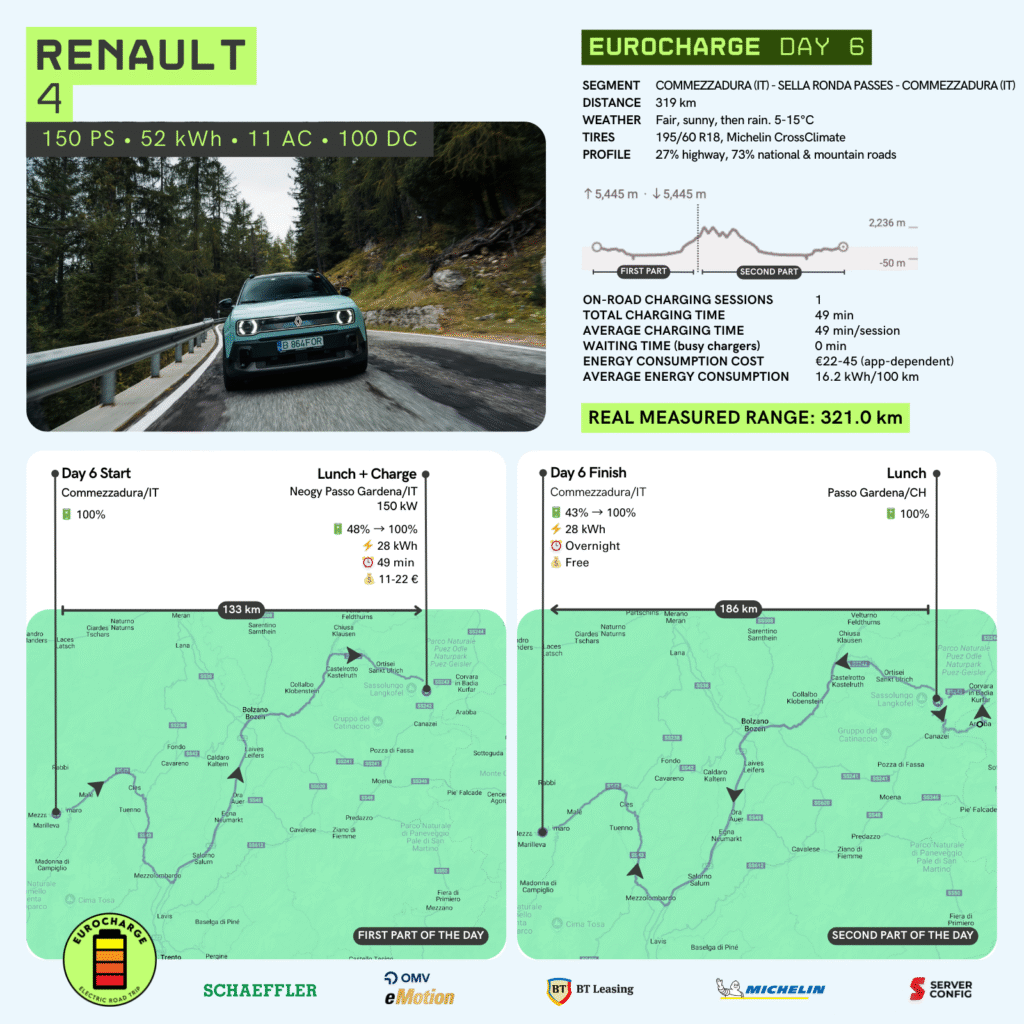
Price of the tested car: 36.950 euro with VAT
Through BT Leasing: 465 euro/month
Alin Ionescu (Mașinistul) on the Volkswagen ID.4
While other manufacturers are just taking their first steps into the world of electric mobility, Volkswagen has largely overcome the problems they faced when debuting the ID range. And that makes the ID.4 one of the most homogeneous models in the EUROCHARGE. Spacious, comfortable, pleasant to drive and, above all, efficient, VW’s SUV meets the demands of electric customers and does so calmly, rationally, without emotion, but also without necessarily shining at anything in particular.
Although it has 286 hp, 545 Nm and a rear drive axle, the ID.4 doesn’t feel at all violent in the way it puts power on the road, with Volkswagen choosing to hone the engine’s resources at low speeds precisely to maximize comfort. On the other hand, the conservative attitude shows in the fuel consumption, with the German model being economical and managing to get a real range of 500 km from a moderate capacity 77 kWh battery. What’s more, the charging power of up to 175 kW is also confirmed in the real world, with the ID.4 pulling well every time it’s connected to a high-power station.
The interior of the ID.4, while ergonomic to drive, has a few lapses in the quality of materials used. In addition, the touch surfaces on the steering wheel or at the bottom of the center screen are not as intuitive as traditional buttons. Fortunately, the infotainment system has matured and responds well to commands and the interface is easy to use.
Overall, the ID.4 gives the impression of a model that has matured nicely, even if it’s still devoid of any excitement. On the “shut up and do” principle, the German model is capable, predictable – even satisfying for those who know exactly what they want from an electric.
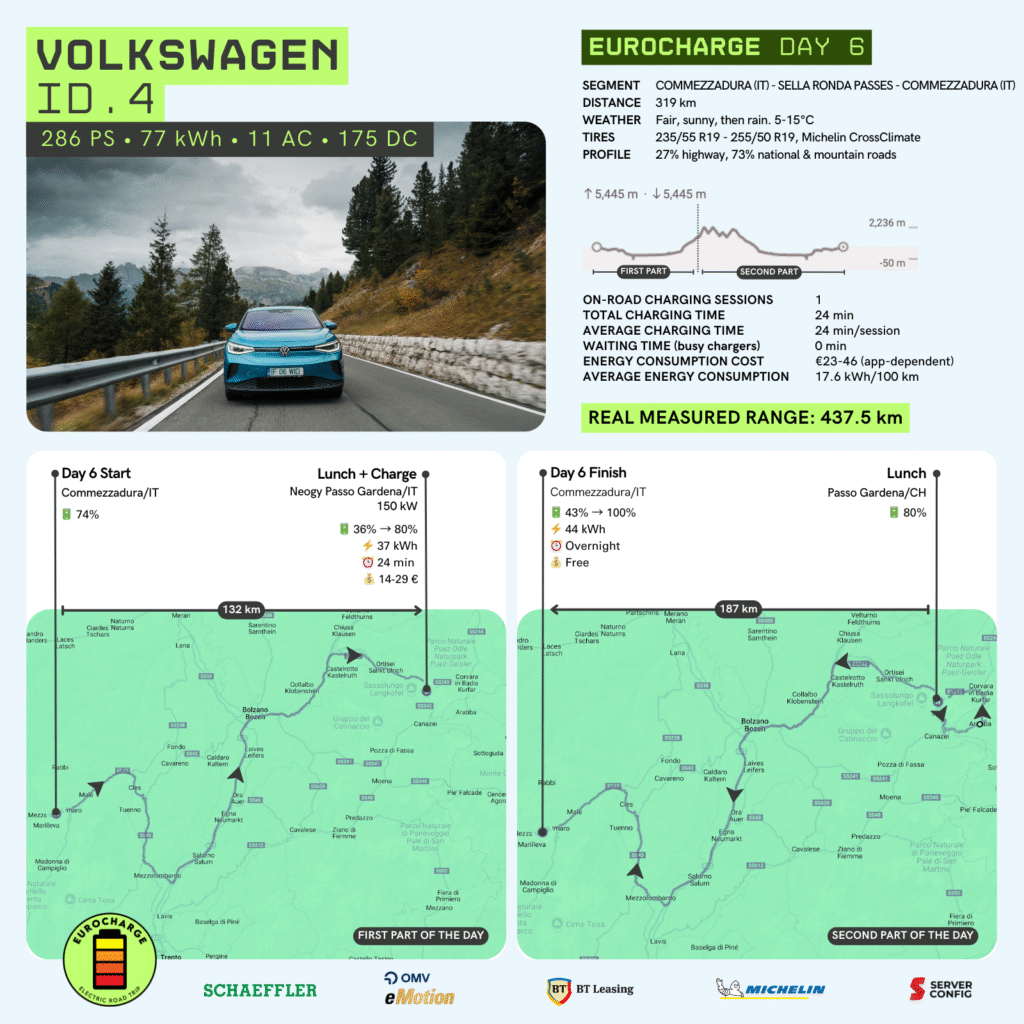
Dragoș Băltățeanu (Autocritica, Auto Test) on the Volvo EX90
The Volvo EX90 is part of a new wave of electric cars from the Scandinavian automaker. It’s the biggest in its realm, and is basically the counterpart to the XC90, the much more popular Swedish full-size SUV with thermal engines under the hood.
It’s big, it’s got seven seats, it’s basically a sort of premium studio on wheels. It rides like a floating carpet giving it that special feel we’ve never seen from a British SUV brand before. On paper, it’s a bit too big for what we’ve squeezed in here in EUROCHARGE by Schaeffler. On some mountain passers, the EX90 is as wide as the road, but it nonetheless waltzed down alpine roads with uncommon grace despite the 2.7 tons in its resume.
The steering is well balanced, the body doesn’t lean too much, you always know where you are on the road, and the one-pedal mode allows you to brake without touching the brakes and recover some energy. In today’s agenda we covered 323 kilometers in mixed weather, a good chunk of which was highway, then winding roads through mountain valleys plus Ronda Sella, the tour of the Dolomite passes. 5 hours and 24 minutes of driving, 21 kWh/100 km and 35% battery left at the end of the day. No charging needed.
I appreciated the on-road handling, the package-like comfort on the highway, and the Bose audio system that played the best soundtracks today. But it’s a bit tricky with the Tesla-inspired digital controls that Volvo decided to adopt. I searched through the menus for minutes to find the digital button to defog the rear window. It’s hidden in the climate control menu. But it’s all habit. In time, you come to appreciate the screen in front of the steering wheel that offers clear, concise information with impeccable graphics and the multimedia system with Android Automotive and native Google Maps.
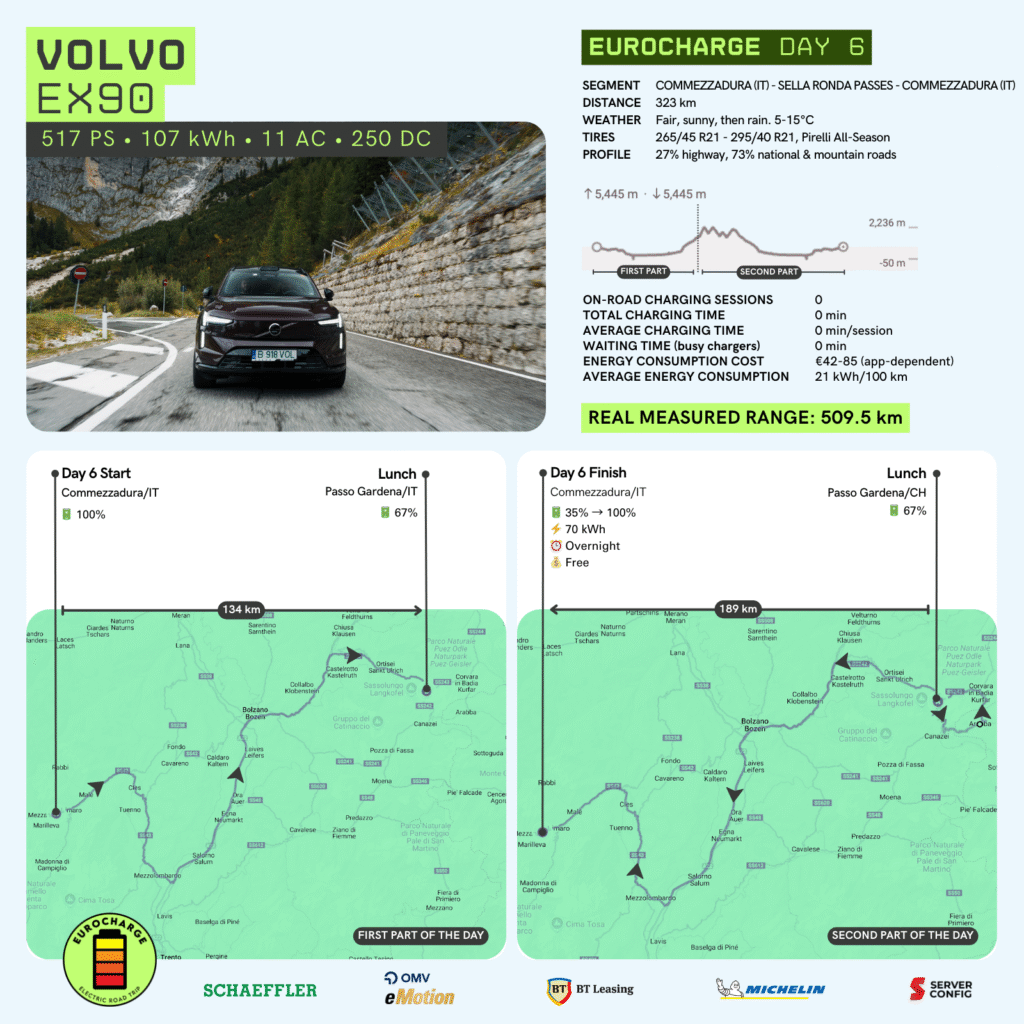
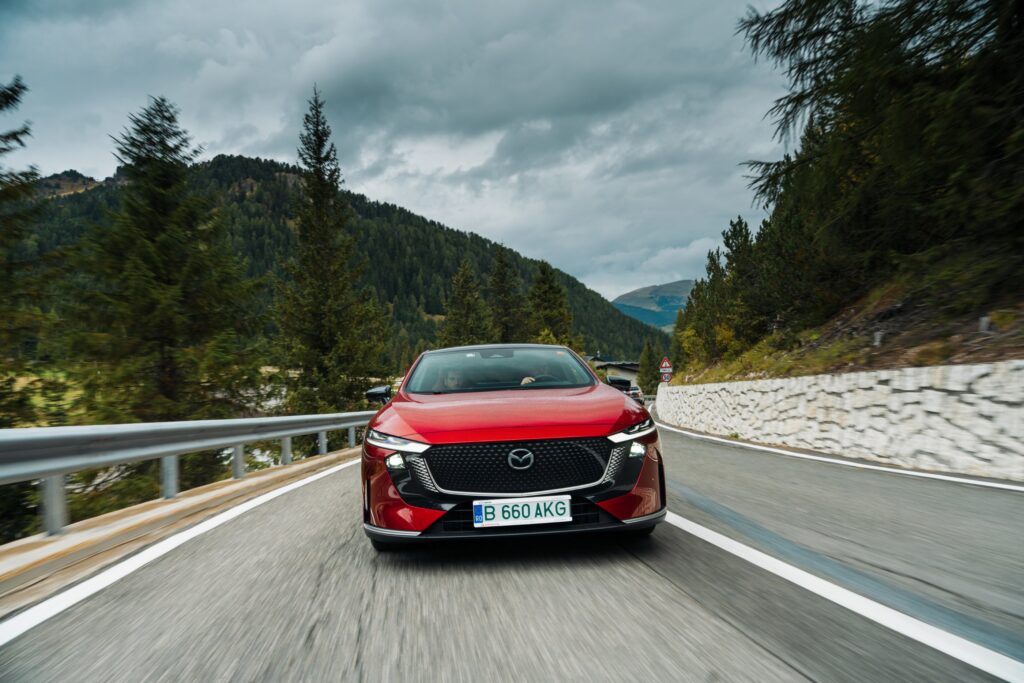
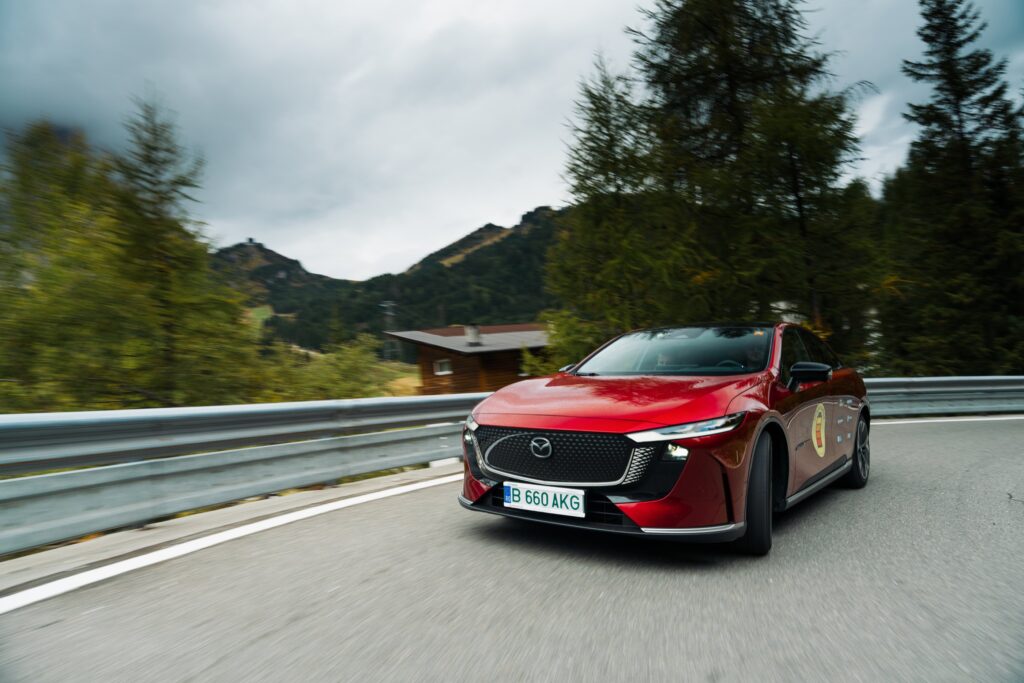
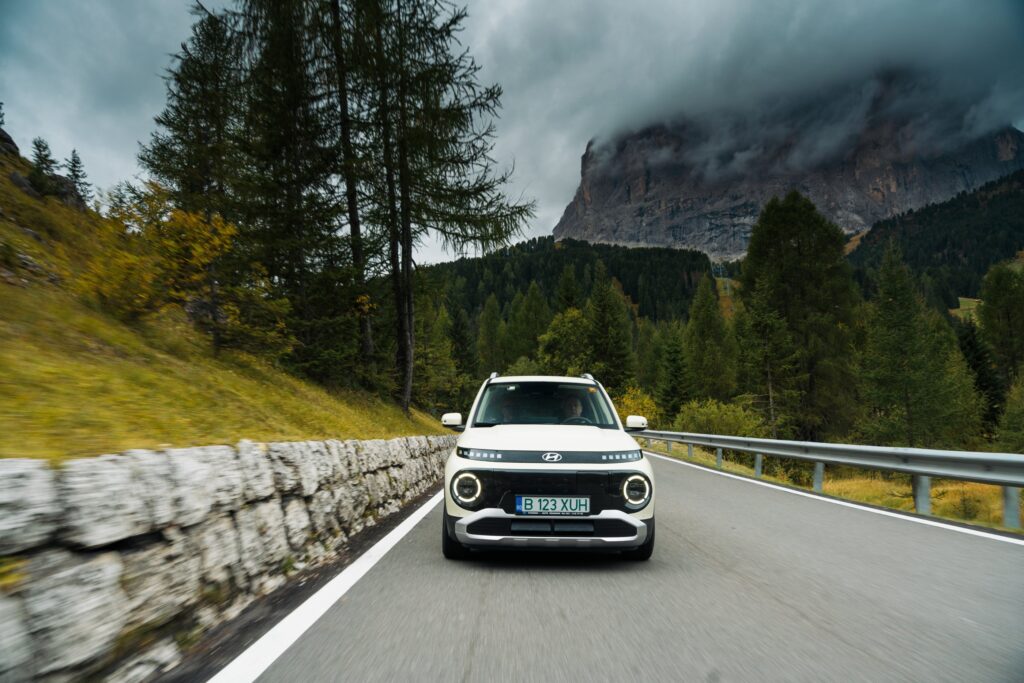
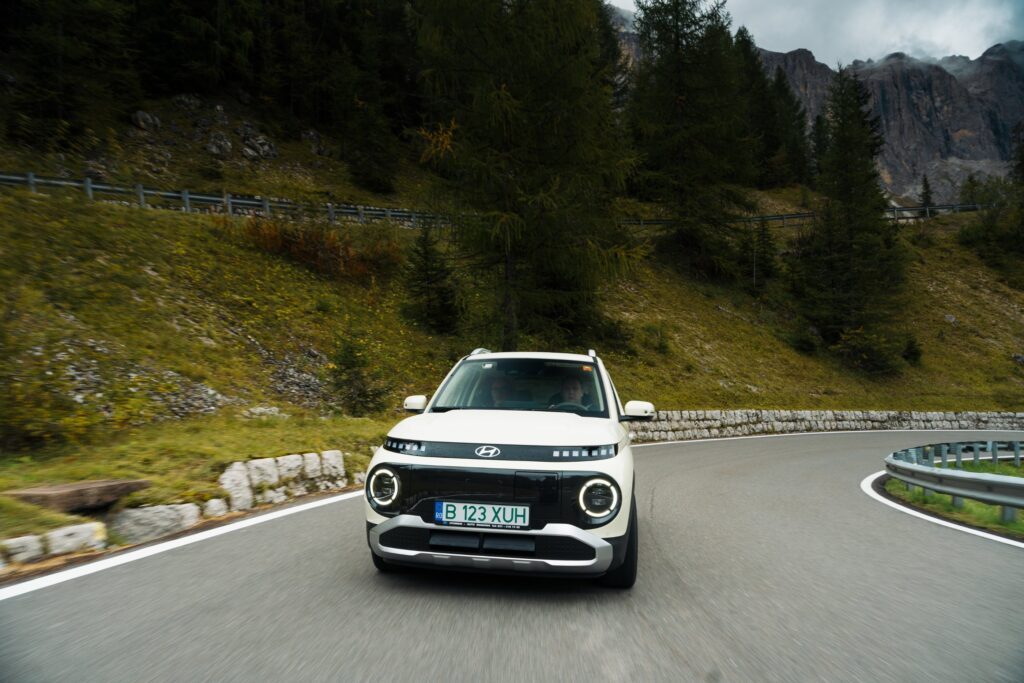
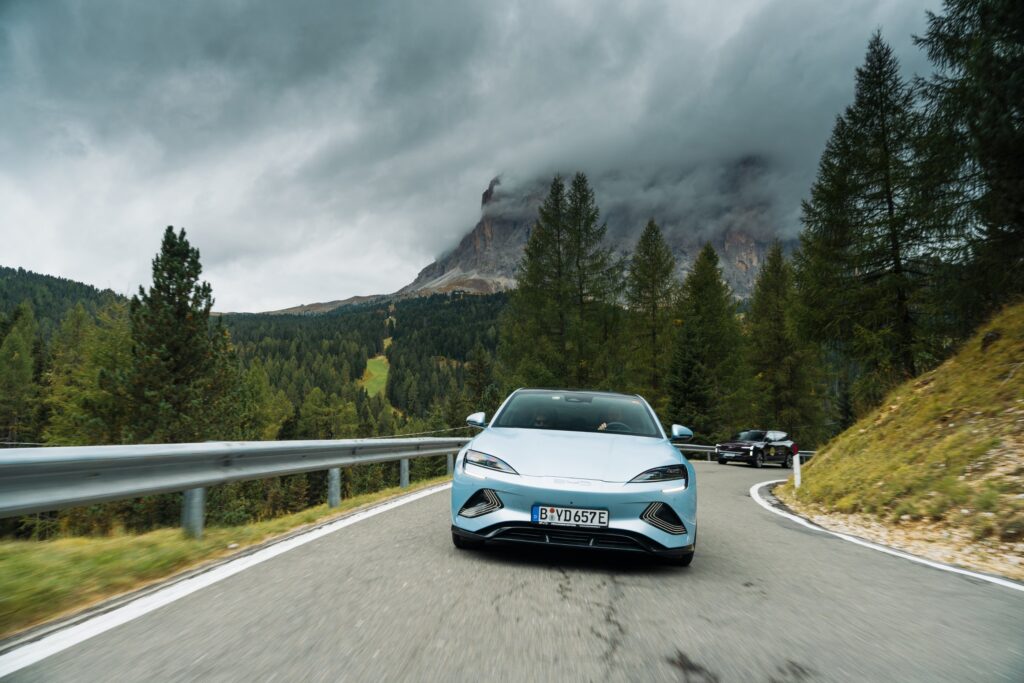
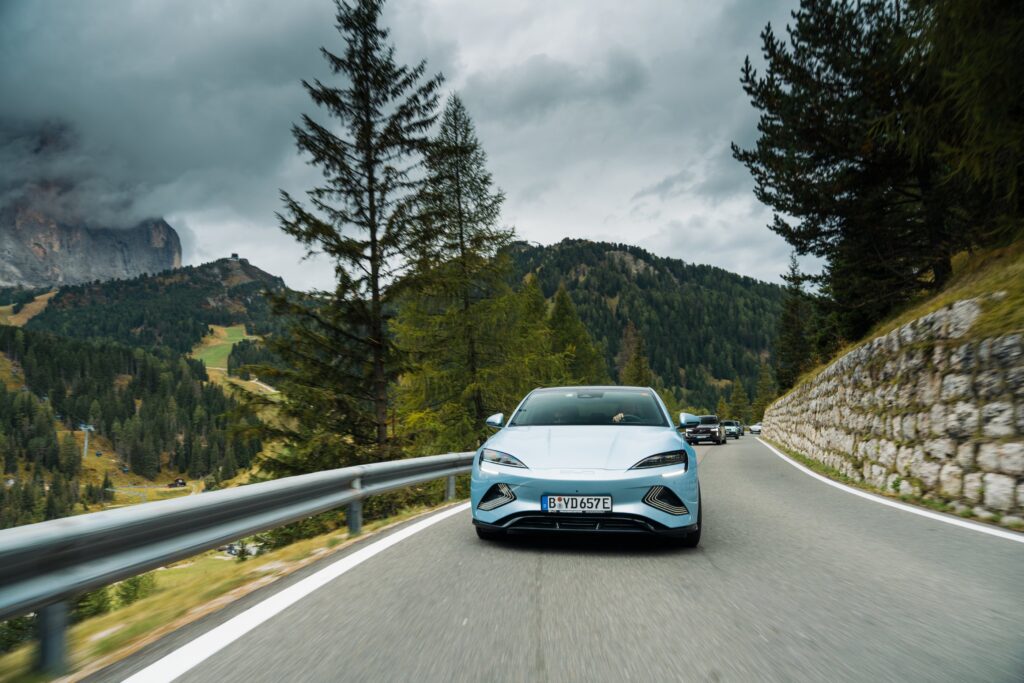
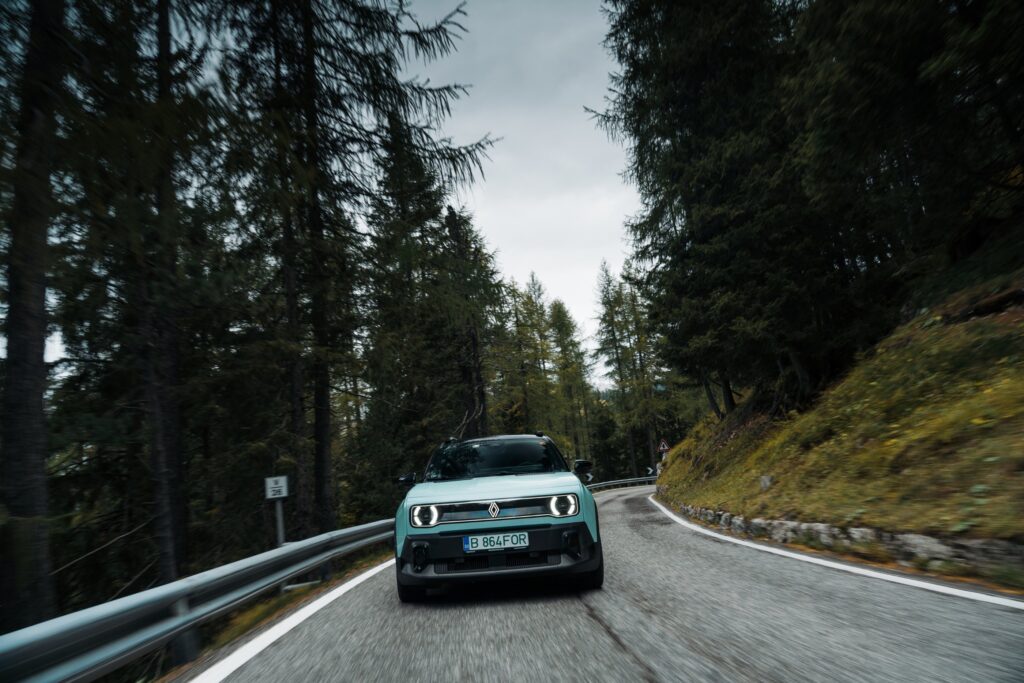
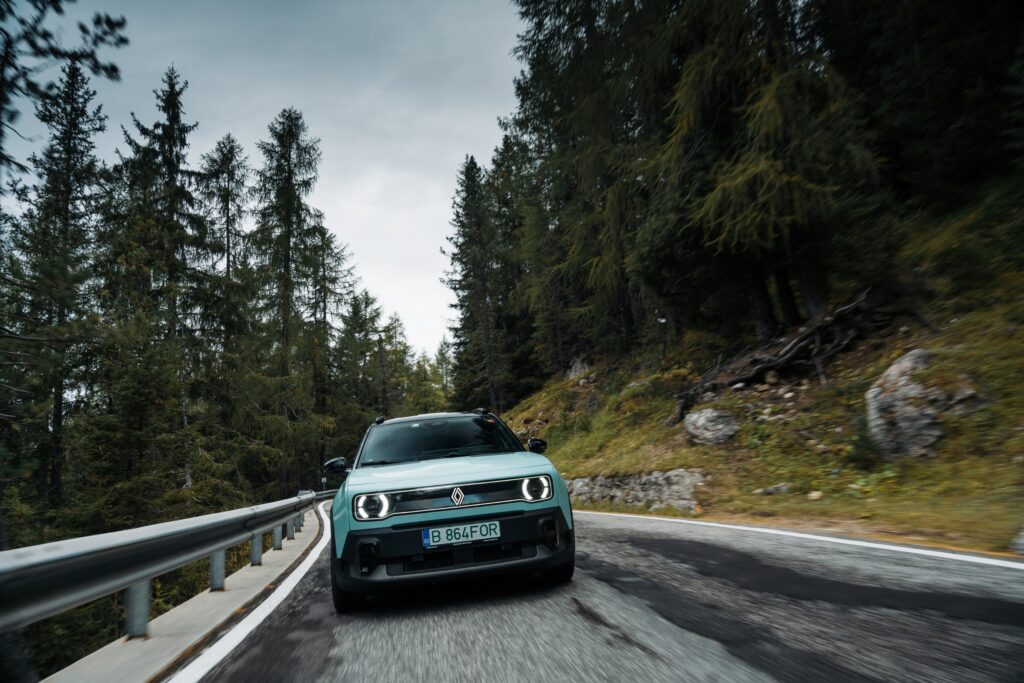
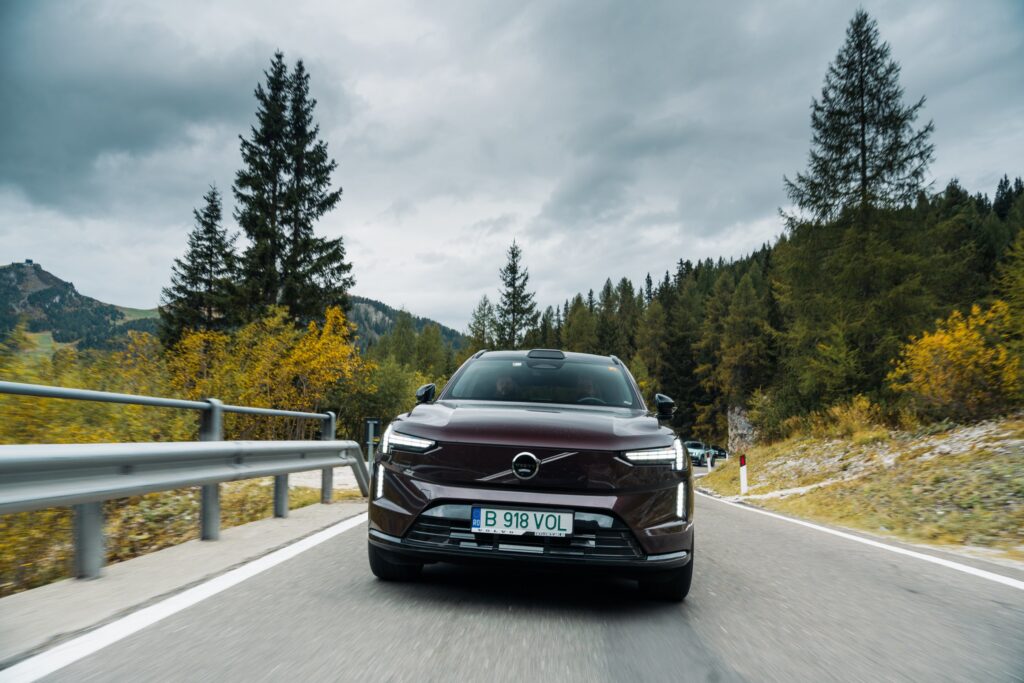
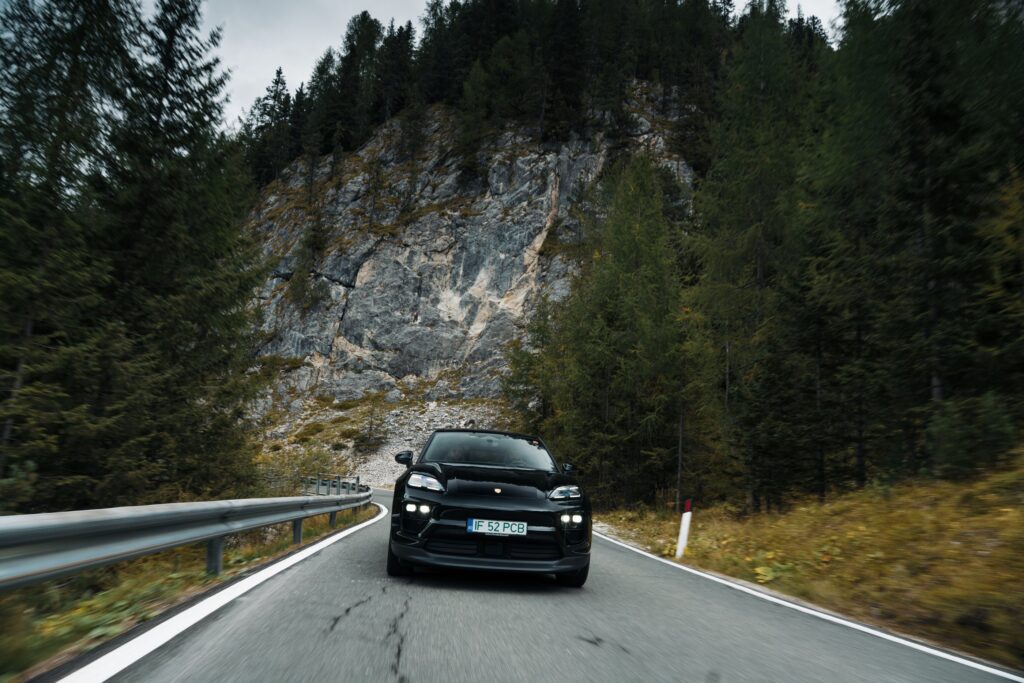
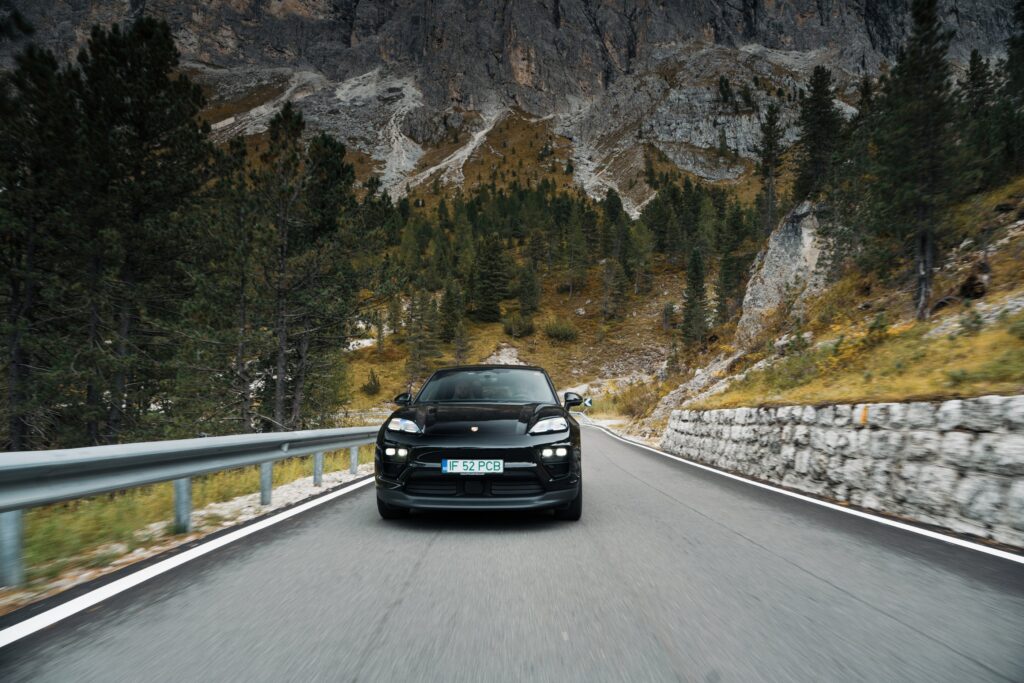
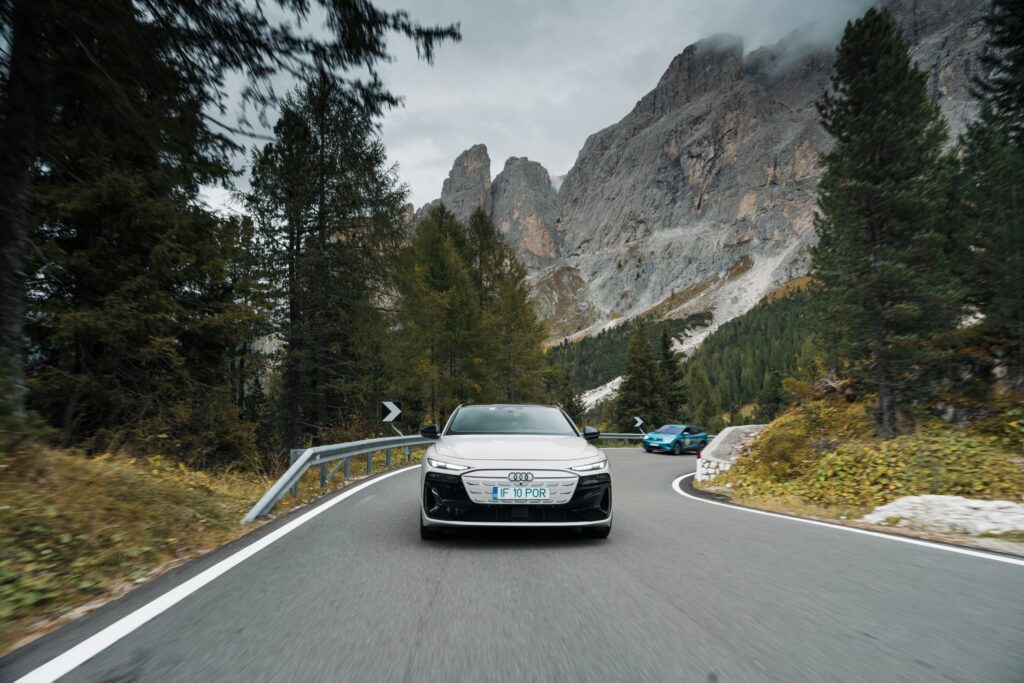
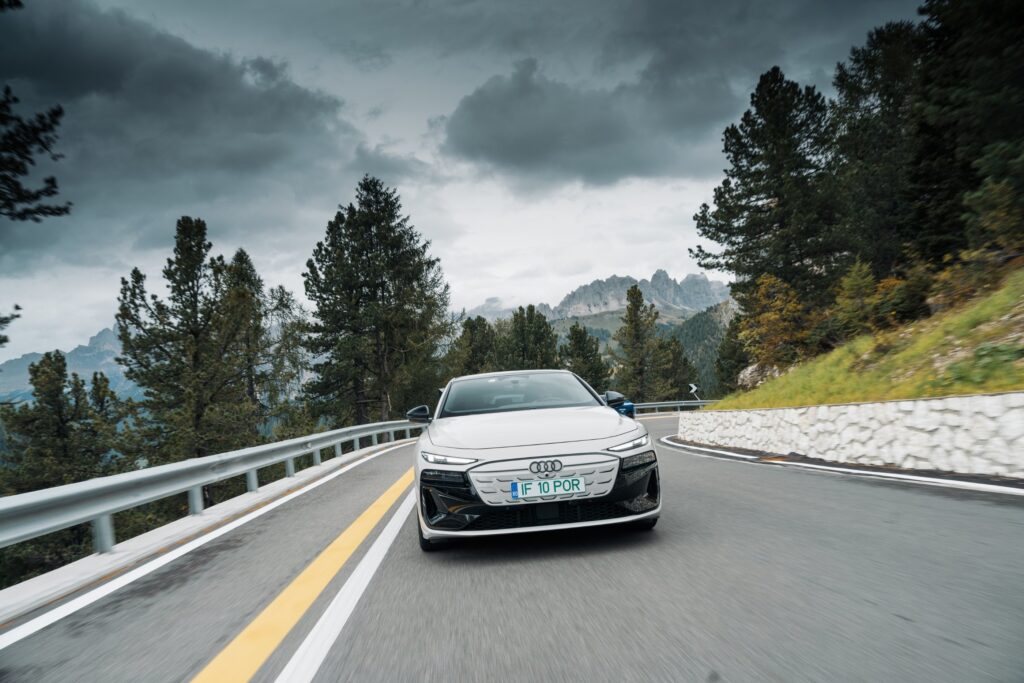
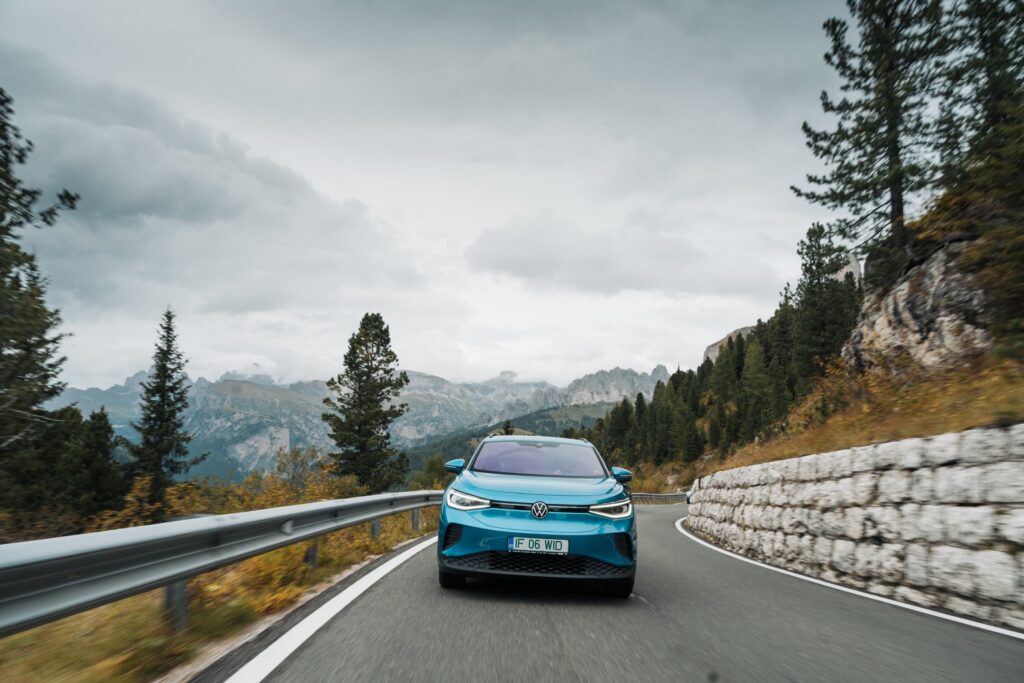
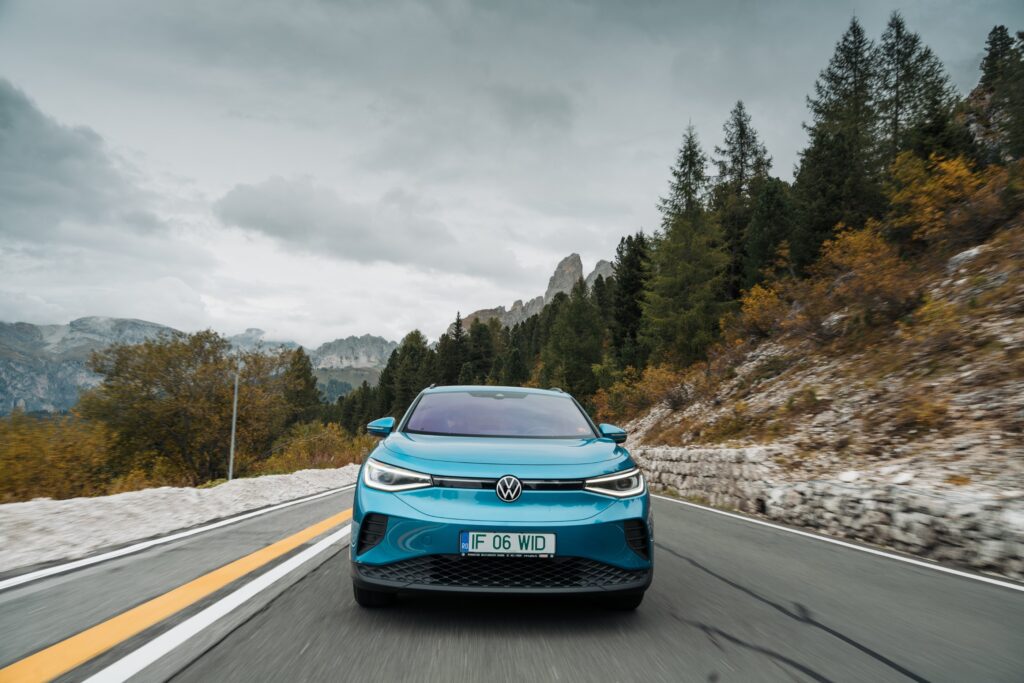
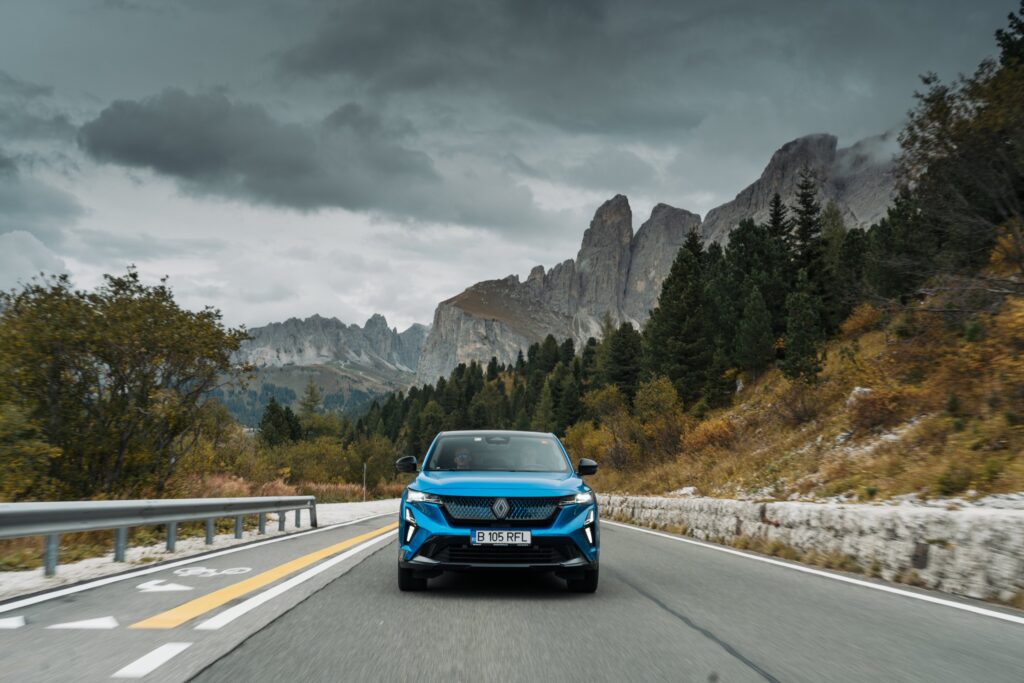
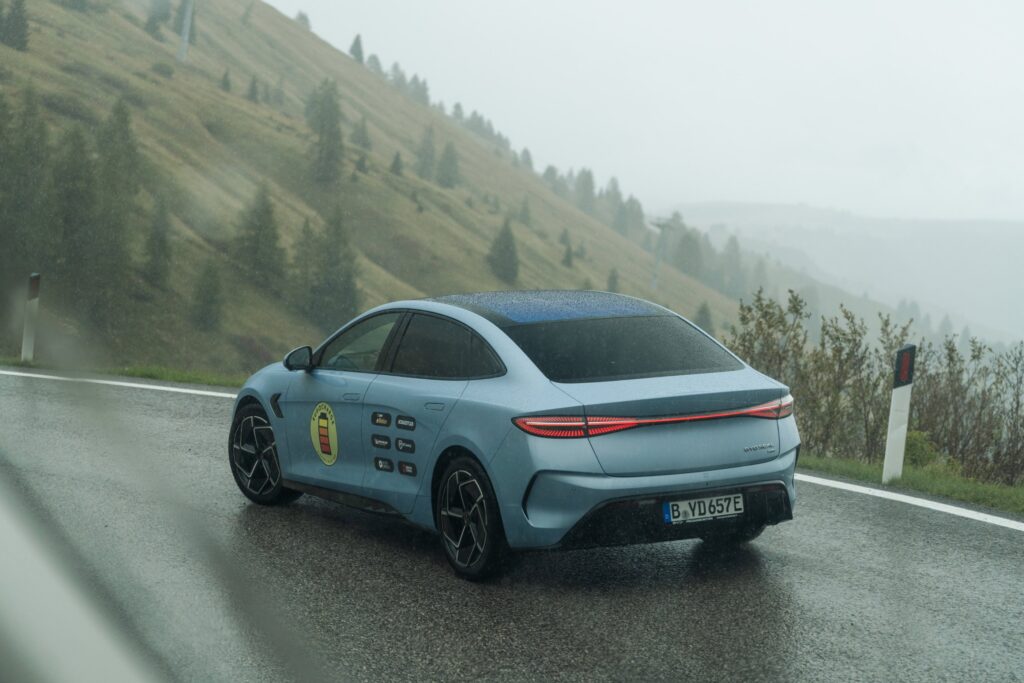
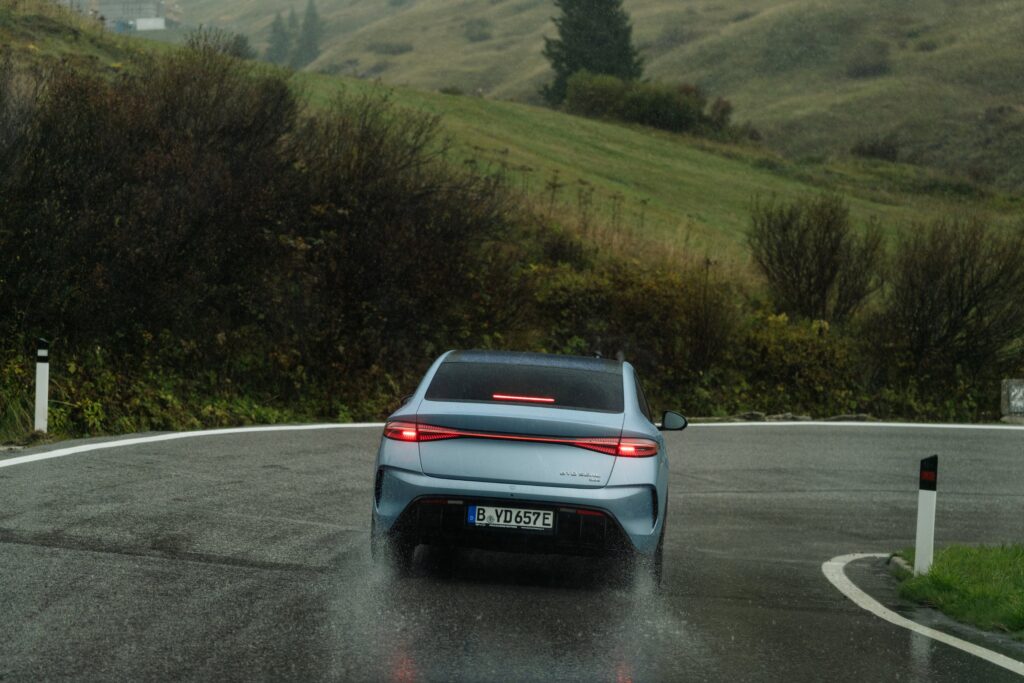
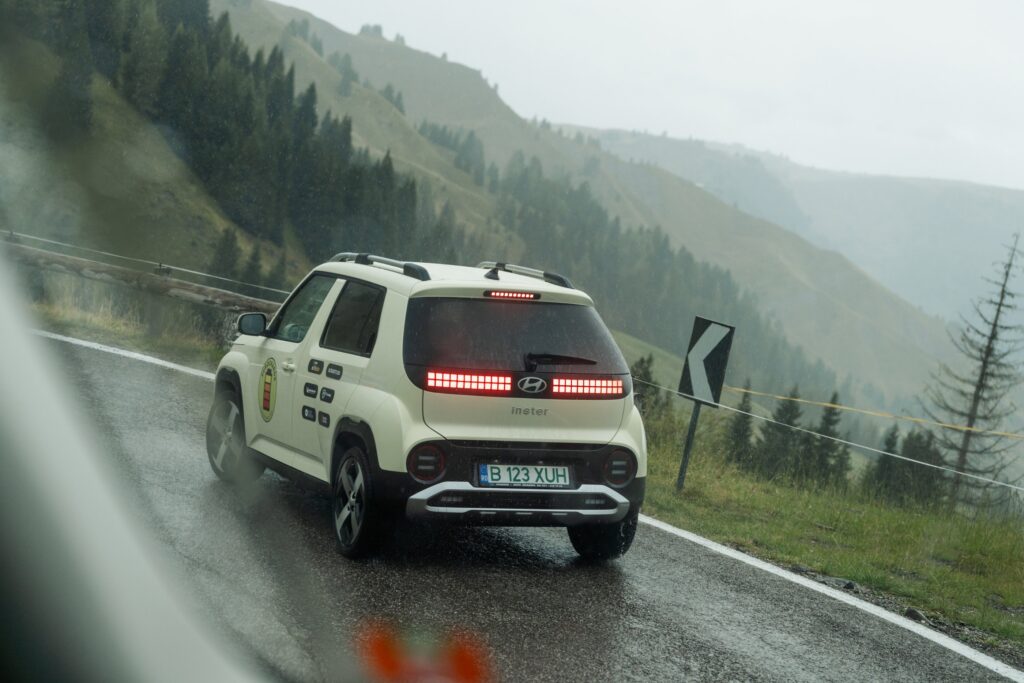
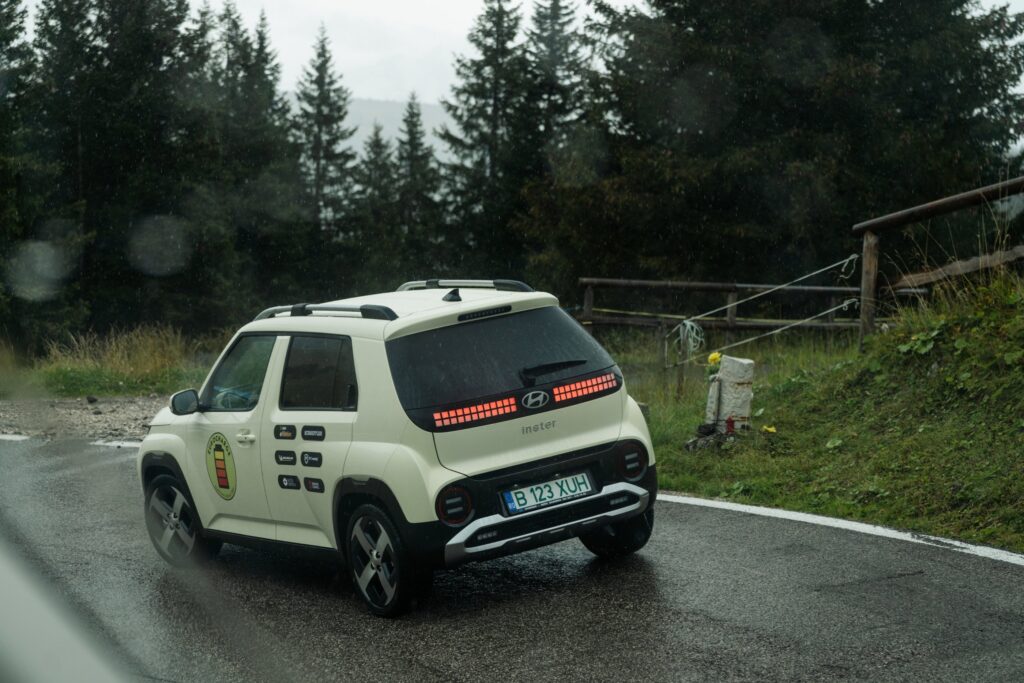
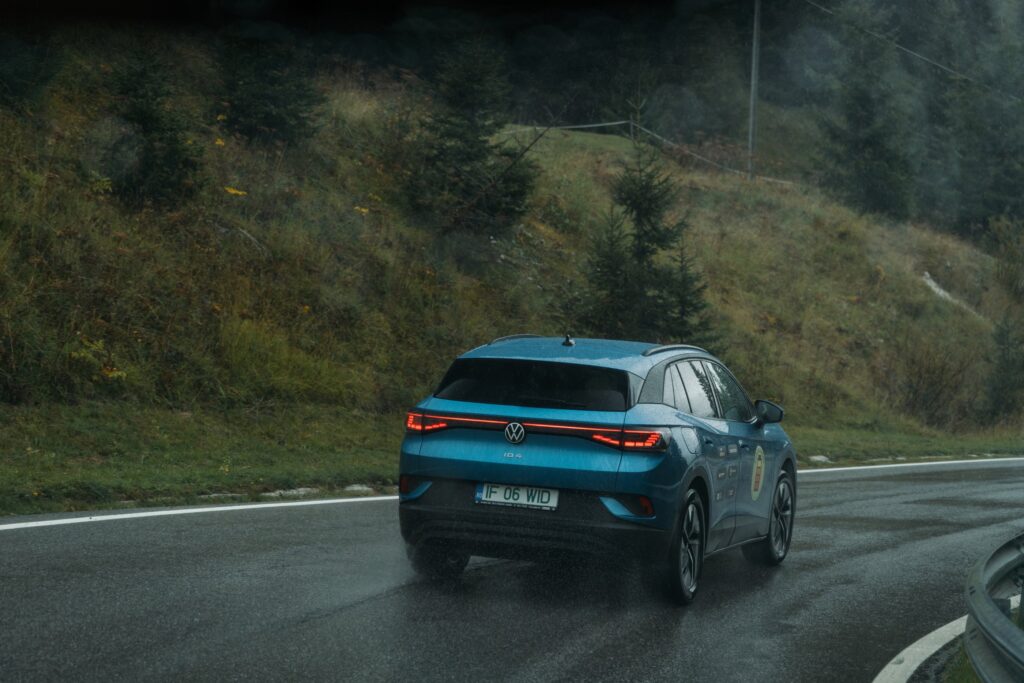
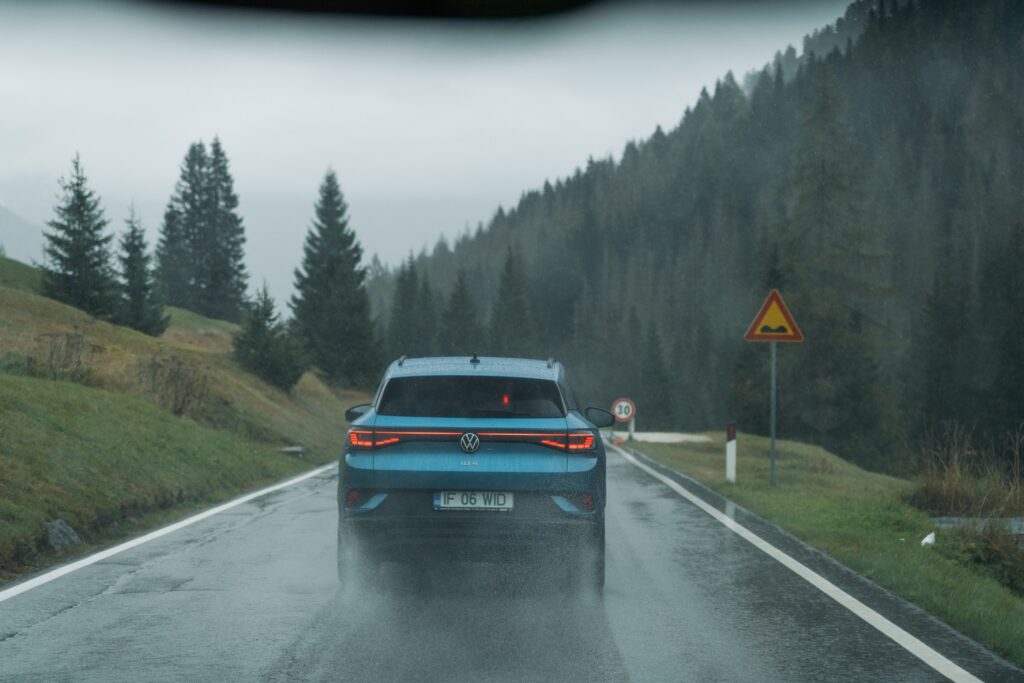
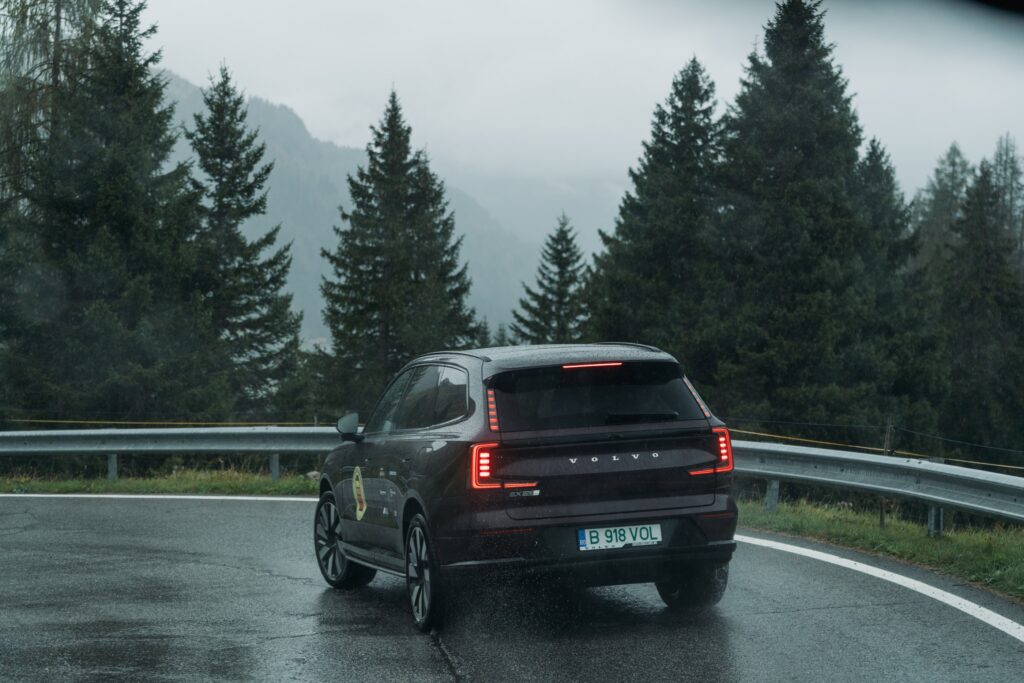
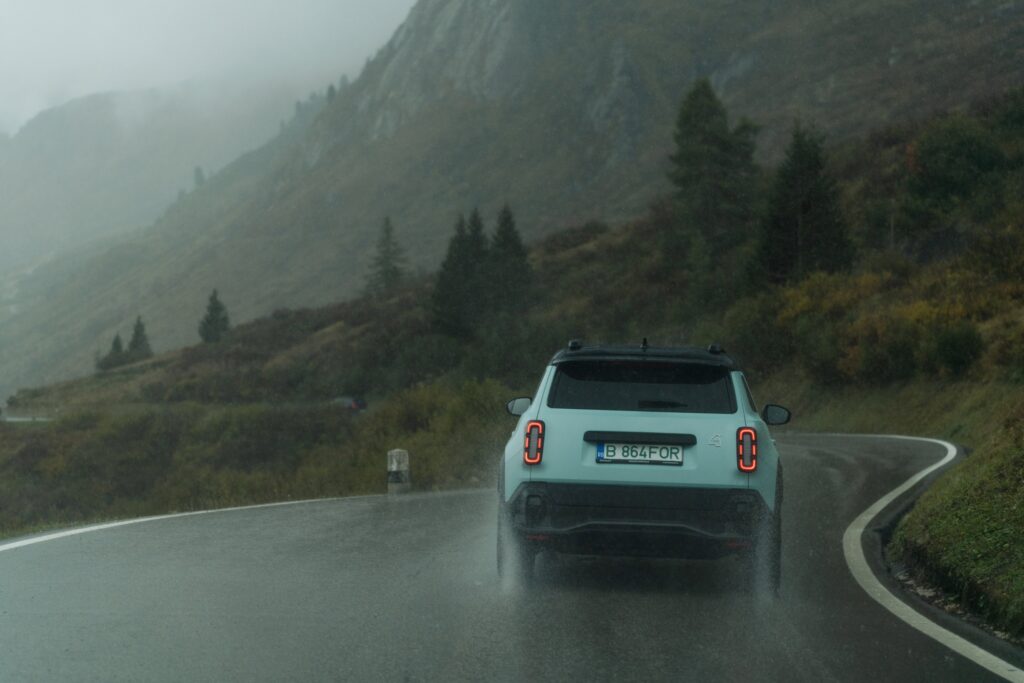
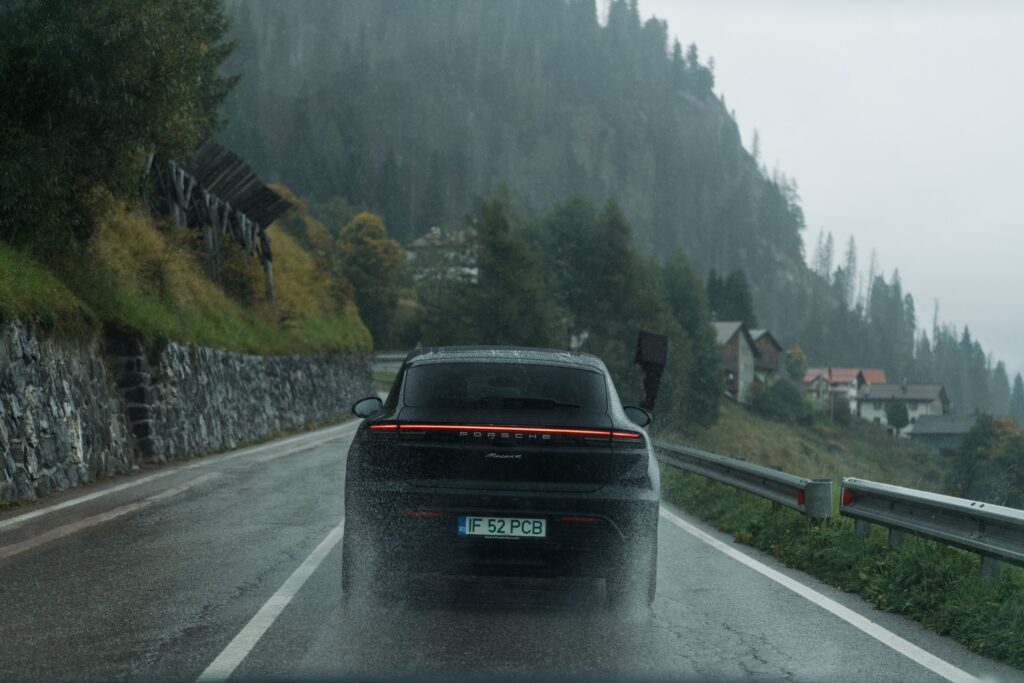
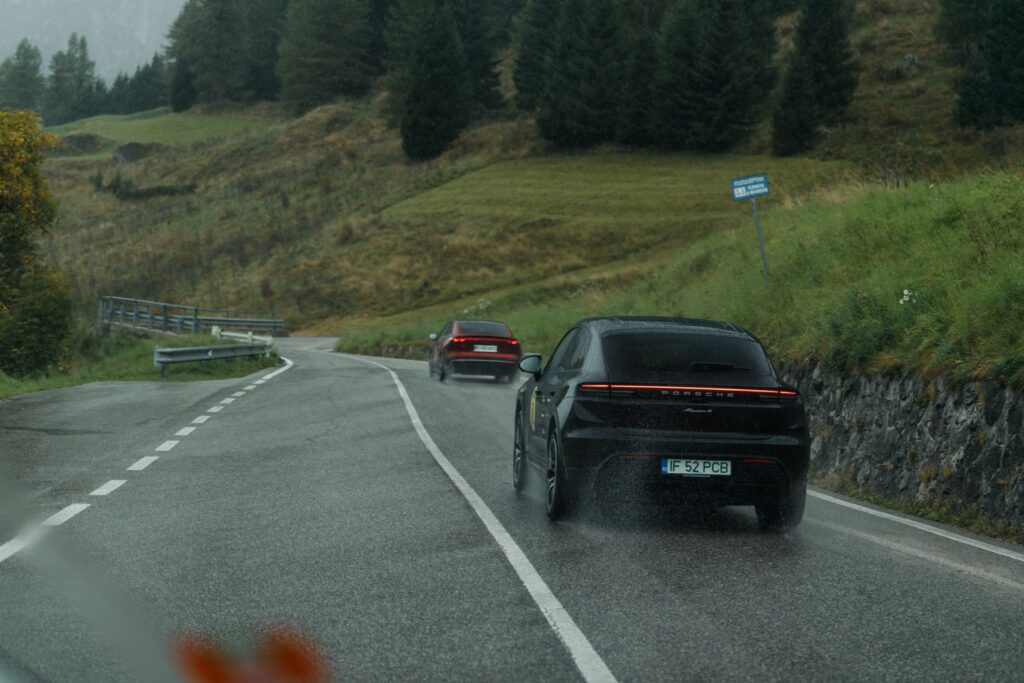
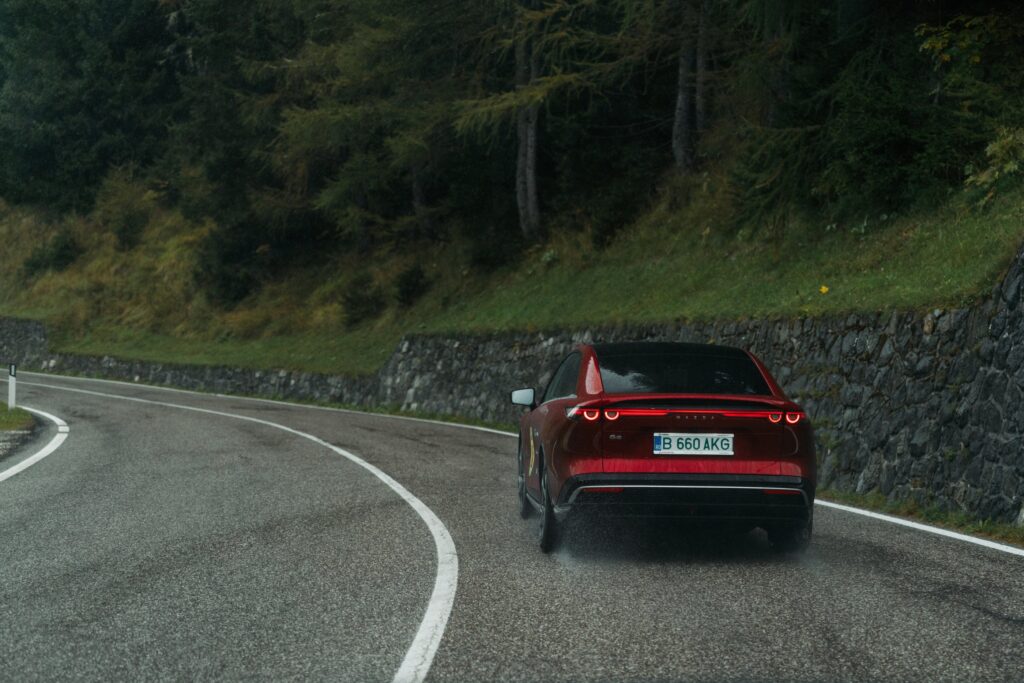
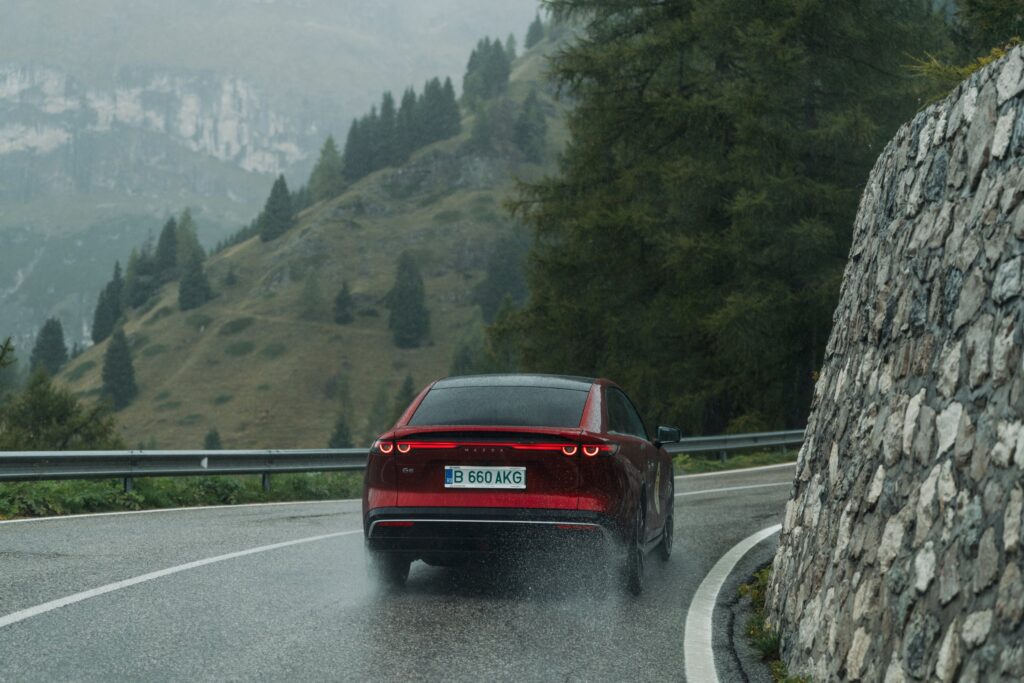
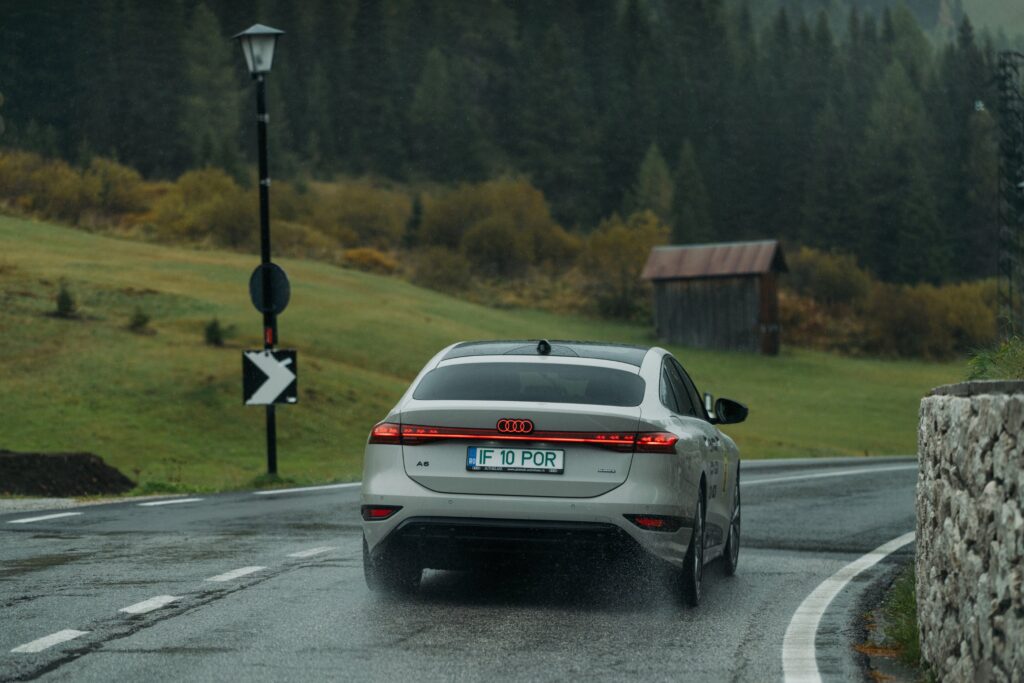
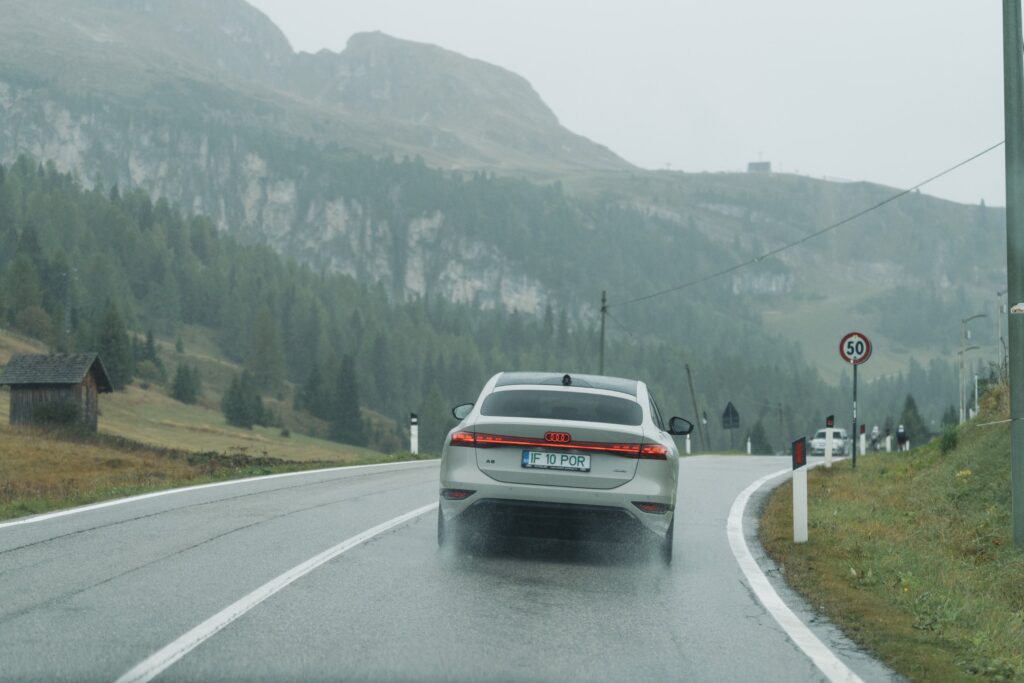
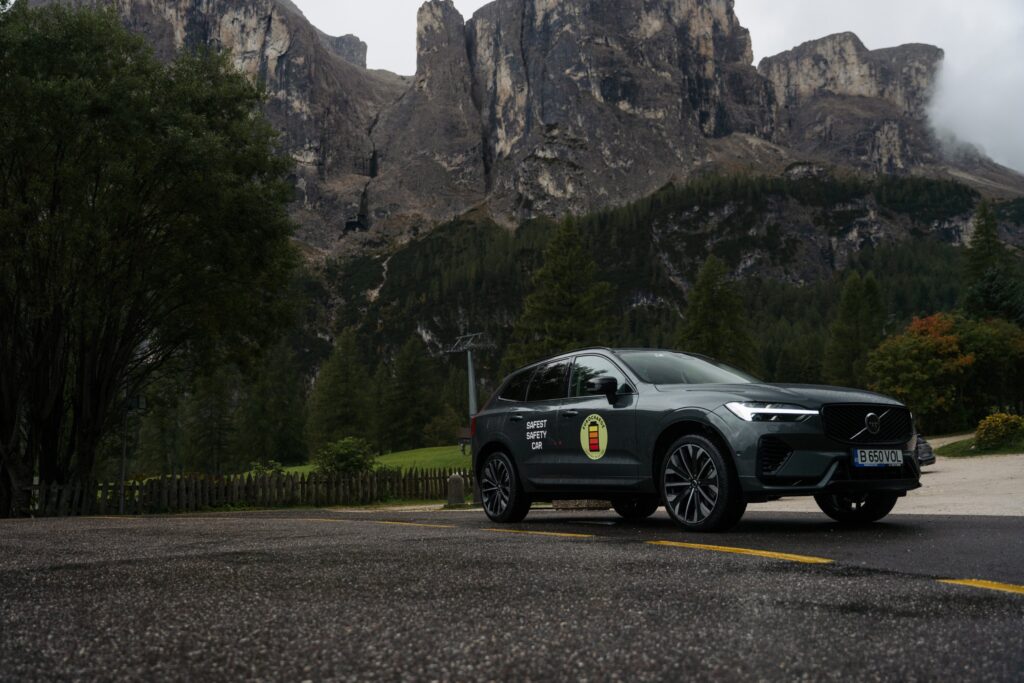
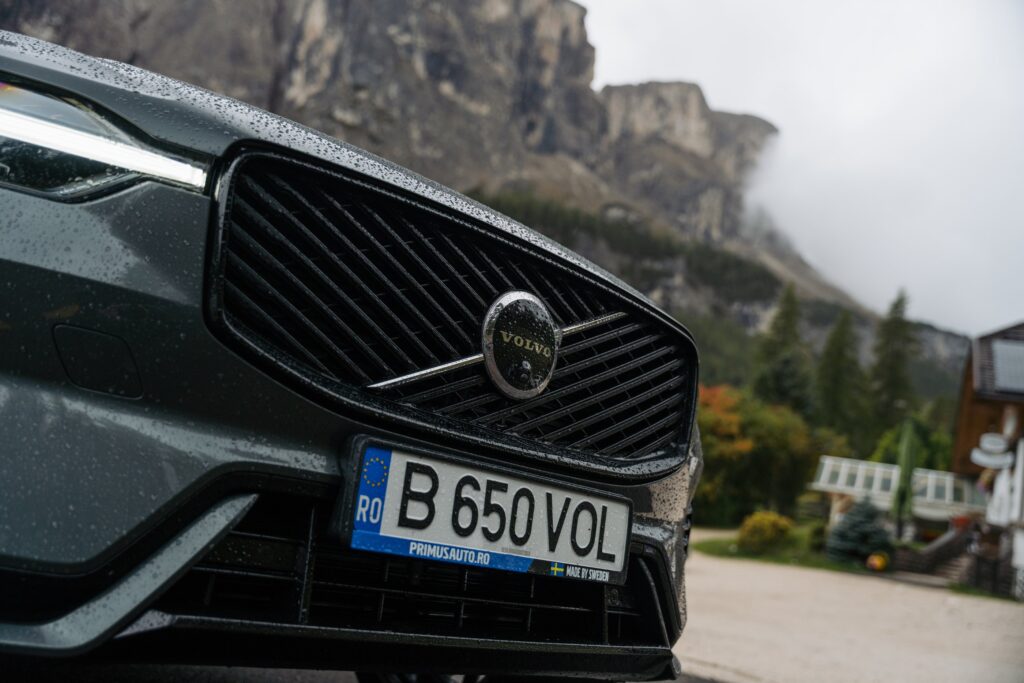
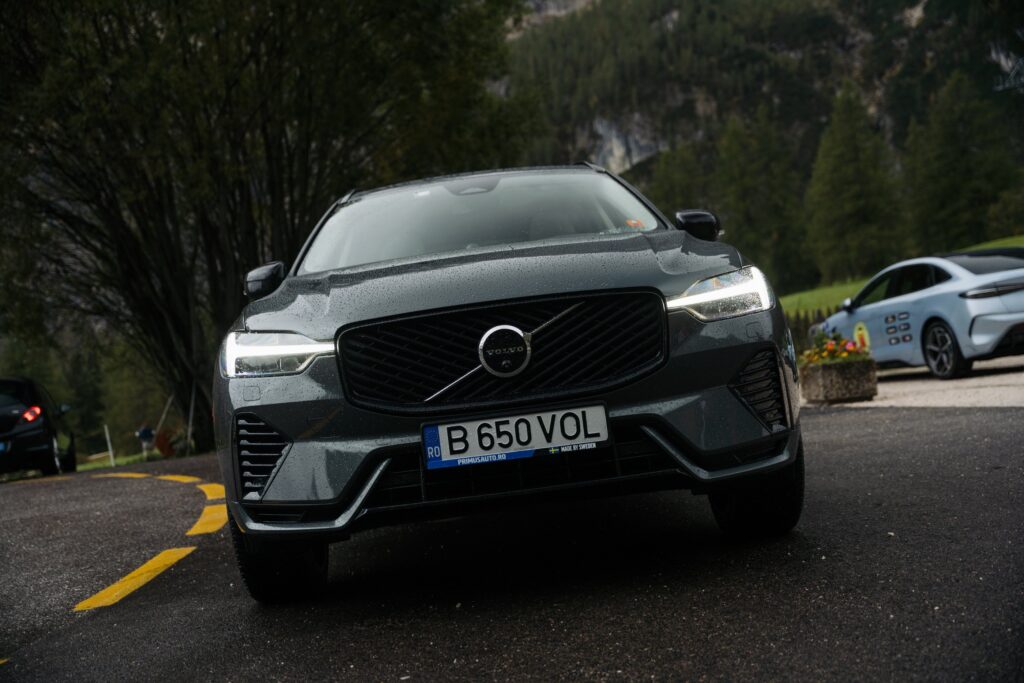
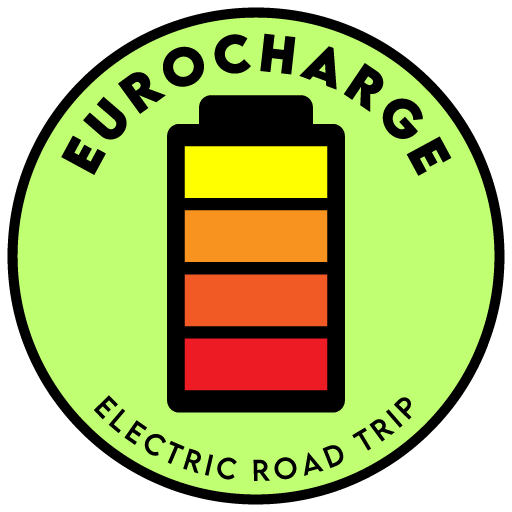
este un proiect susținut de SCHAEFFLER
Încărcat de
OMV eMotion
Green Partner
BT Leasing
Pus pe șosea de
Michelin
Tehnologizat de
Server Config

